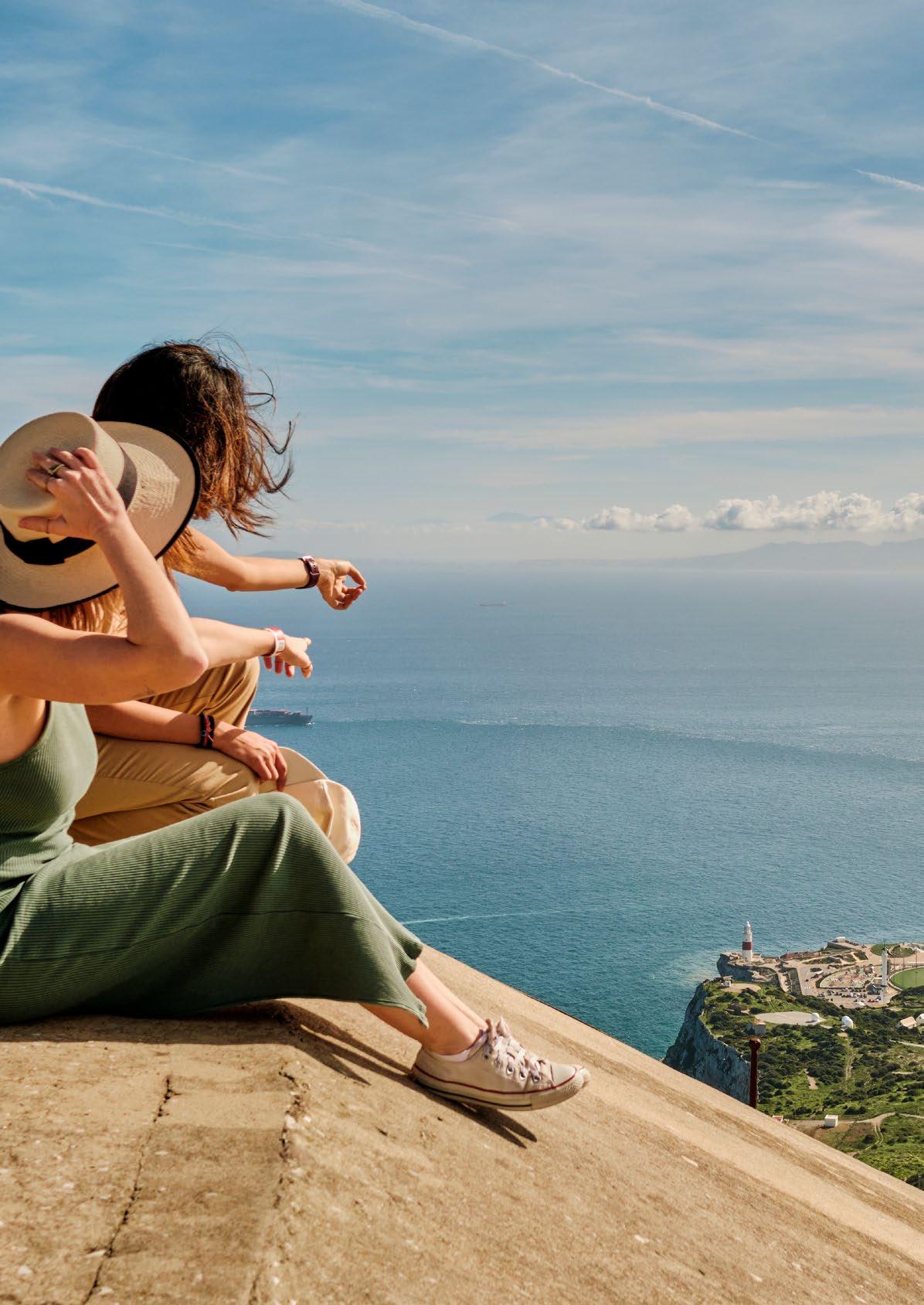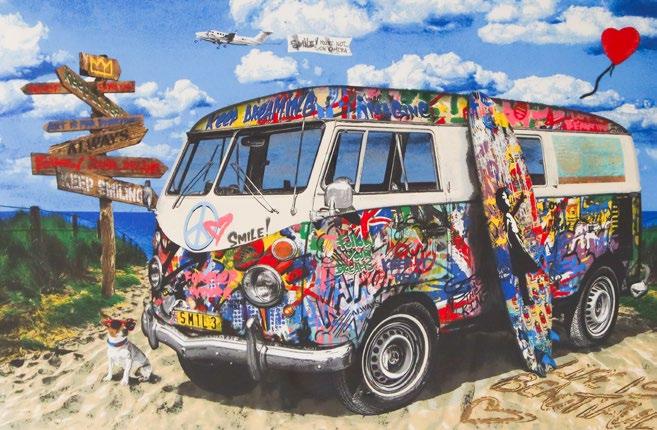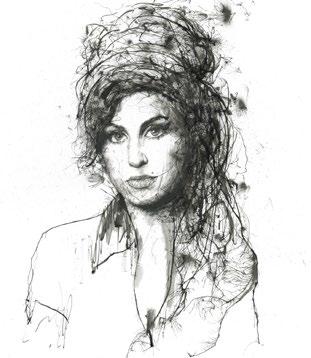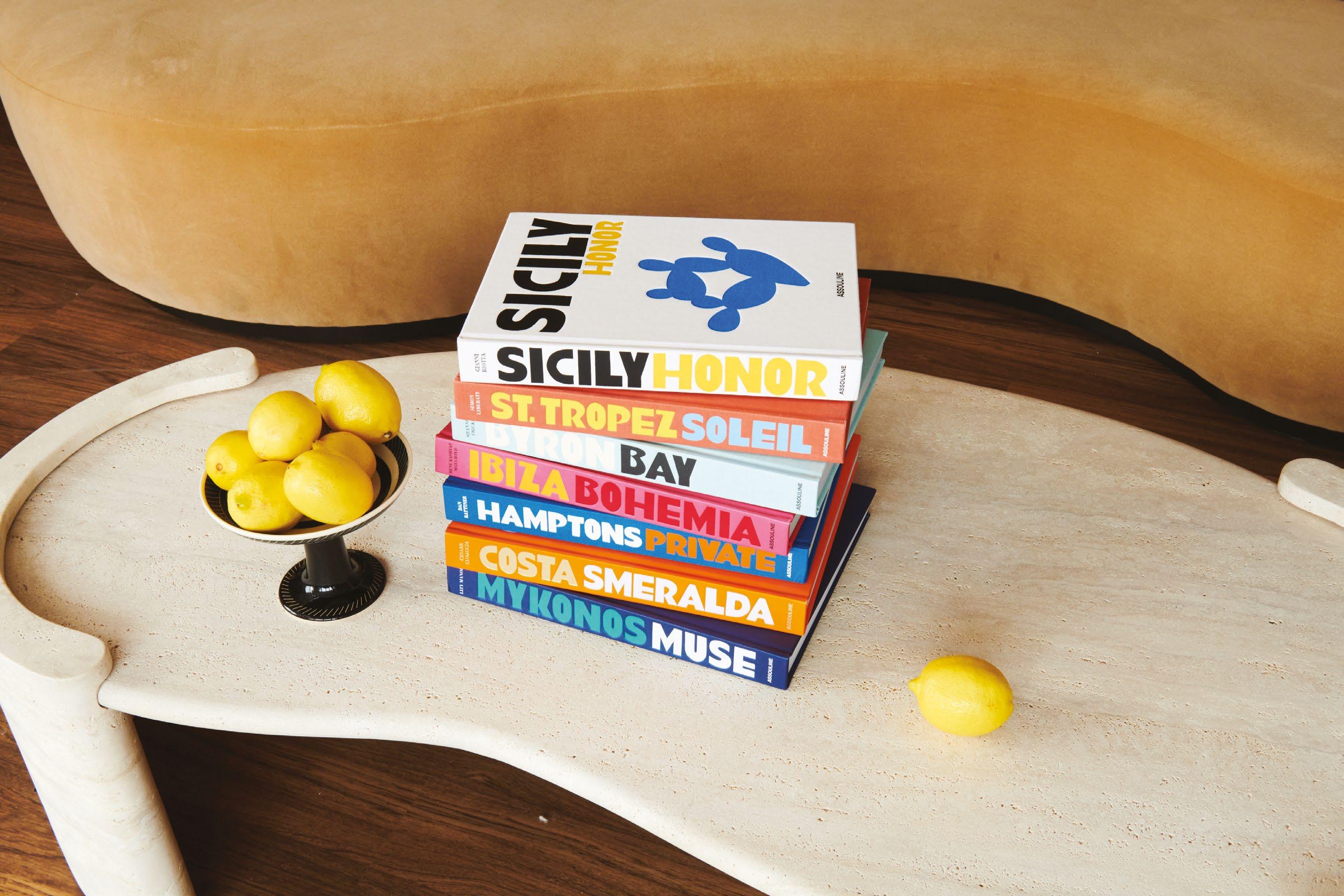Gibraltar’s First International Contemporary Art Fair Hosted on the Sunborn Yacht Hotel 28th August - 1st September 2024

“Mr Brainwash is a force of nature, he’s a phenomenon.”











Gibraltar’s First International Contemporary Art Fair Hosted on the Sunborn Yacht Hotel 28th August - 1st September 2024

“Mr Brainwash is a force of nature, he’s a phenomenon.”










Hosted at the Sunborn Yacht Hotel in the Aurora Ballroom, promoting art and culture both in and out of the Iberian Peninsula.
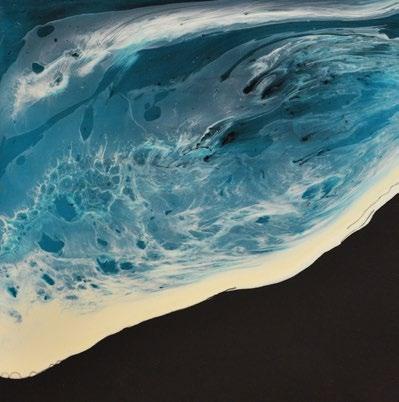

28th August - 1st September 24
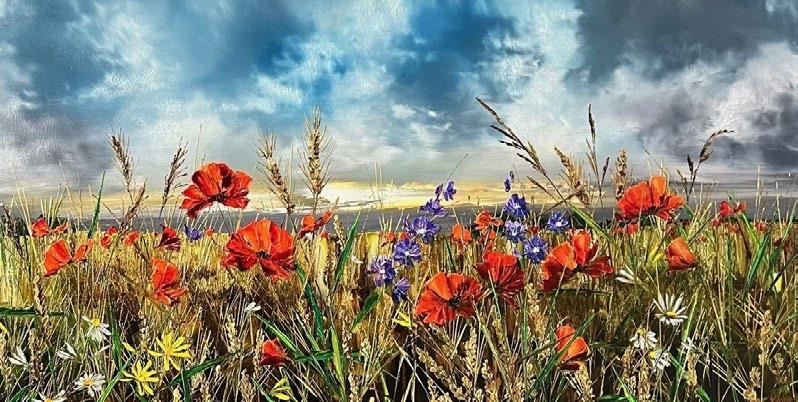
8
18 26 30 82
CAROLINE WENDELIN
Defining social interaction and human mentality
GUY DENNING
A paste-up style with surreal political messaging
MR BRAINWASH
An orchestrated collision of pop art & street art
STEPHEN WATKINS
Capturing memories
VANESSA VANCATE
An immersion into a different world

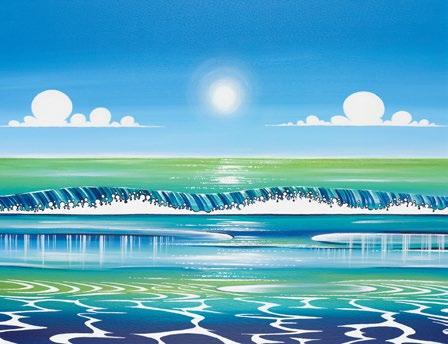
ANA BRIUKHOVETSKA
A visual creation overwhelmed with colour and contrasts
TONY HINCHLIFFE
Creating a mood with imagination and experimentation
90 NANA ARTAMONOVA
Bringing goodness into people's hearts
10
SCOTT TETLOW
A fusion between traditional oriental art and the contemporary
MARK PURLLANT
Dynamism and movement from every angle
SAMUEL THOMAS
Capturing idyllic places and sunnier visions of the world

EDITOR’S NOTE
Tammy Levy
WHY GIBRALTAR?
Barbary Macaques, paradisiacal summers & close-knit community
LUXURY LIVING
Art for interiors
TESTIMONIALS
A word from our supporters
EMERGING ARTISTS
Recognition and sponsoring
THE ART OF CURATION
Cultivating comfort, harmony and authenticity
ART AUCTIONS
Inside Sotheby's & Christie's
ART FAIRS What are they?
ART HOPPING
Cruising the Med
THE ROLE OF AN ART HISTORIAN A diverse career
MUSIC & ART
Q&A with multi-genre violinist L3V at the Art Space Gallery
A CULTURAL MAN
President of the Fine Arts Association Gino Sanguinetti
EARLY LEARNERS
The fundamental role of women in art
ART TRENDS
An abundance of styles over the years
ART INVESTMENT
A collector's paradise
MULTISENSORY ART
Transcending limitations
ART & WELLBEING
The benefits of art on people & the community
WHIMSICAL FACTS
For your amusement
THE ART OF BUSINESS
Merging creativity and commerce
Find out all about Gibraltar's First International Contemporary Art Fair hosted at the Sunborn Yacht Hotel from 28th August until 1st September 2024. Read about all our featured artists and see examples of their work.


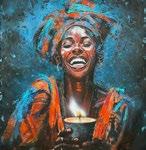
MANAGING EDITOR
Tammy Levy tamara@theart.space
MAGAZINE DESIGNER
Emma Long Graphic Design emmadesign@btinternet.com emmadesign.co.uk
ARTICLE CONTRIBUTORS
Tammy Levy
Jo Ward
Petra de Letras
Amber Williams Francesco Scalici
PHOTOGRAPHY
Cover image by Mr Brainwash, courtesy of Clarendon.
Photograph of Phoebe Nobel taken by Albert Gonzalez
Artist photography supplied by the artists
Stock photography by Shutterstock, Alamy & Unsplash
Sunborn Yacht Hotel photography supplied by the hotel
Gino Sanguinetti images supplied by GCS Government Art Collection
Published by Art Space Ltd, 120a Irish Town, Old Police Station, Gibraltar, GX11 1AA.
Printed by Roca Graphics Limited, 21 Tuckey’s Lane, Gibraltar GX11 1AA.
Copyright © 2024. All rights reserved.
The name Art & Culture on The Rock is a mark of Art Space Ltd, used under exclusive licence. No part of this publication may be reproduced without written permission from the publisher.


Art & Culture on The Rock places great importance on the accuracy of the information contained within this publication but cannot accept responsibility for any errors or omissions. Views expressed by contributors and/ or correspondents do not necessarily reflect those of the publisher. Neither Art & Culture on The Rock nor Art Space Ltd is responsible for any claims made, or material(s) used in advertisements.
For permission to copy cuttings for internal or client use, please contact Art Space Ltd artspace.gi or art@theart.space

Delighted to present the 2nd Special Edition of the Art & Culture on the Rock Magazine, I would like to thank the team at Art Space for making this project possible. Welcoming fresh new writers for this special edition, we are pleased to present our freelance team of contributors, who have gifted us with their lyrical writing abilities, and carefully crafted some beautiful articles relating to Gibraltar’s First International Contemporary Art Fair.
Thank you to the incredibly talented Emma, for her unparalleled abilities to produce a magazine design we are all so proud of, and thank you to our contributing writers Francesco, Petra, Amber, and Jo for all of their hard work and time dedicated to bringing this magazine to life, and instilling wonderful stories into the minds of our readers.
Throughout this magazine you will find a streamlined variety of articles and content directly relating to the 2024 International Contemporary Art Fair hosted by the Art Space Gallery. Also serving as a brochure for the Art Fair, the following pages provide a portfolio of the featured artists peppered around all corners of the Aurora Ballroom, as well as exclusive biographies and interviews with Mark Purllant (winner at the 2023 London Biennale), Samuel Thomas, Scott Tetlow, and well-known locals in Gibraltar’s cultural scene.
From art curation, to interesting reads about current events in the art world, one can dive into a world of whimsicality and academia, and engage in a balanced combination of articles featuring something for everyone. From interior design, to auction houses, or multisensory art, the pages of this magazine will introduce you to an intricate weaving of behind-the-scenes considerations at play during the magical process of having an Art Fair come to life!
With love
Tammy Managing Editor tamara@theart.space



Are





Caroline Wendelin is a Finnish artist based in the south of Spain. Through her art she explores the search of identity by using digital tools, which define social interaction and human mentality.


WISH
Original
Signed & dated
Scan here to find out more

Caroline implements different techniques including photography, digital painting, watercolour, oils, impasto, acrylics, print, spray paint, gold leaf and inks on canvas or aluminium. Caroline Wendelin’s work is the epitome of the representation of the female body in a contemporary setting. She creates idealised large-scale compositions which showcase the beauty of the female body in a flattering glowing light.
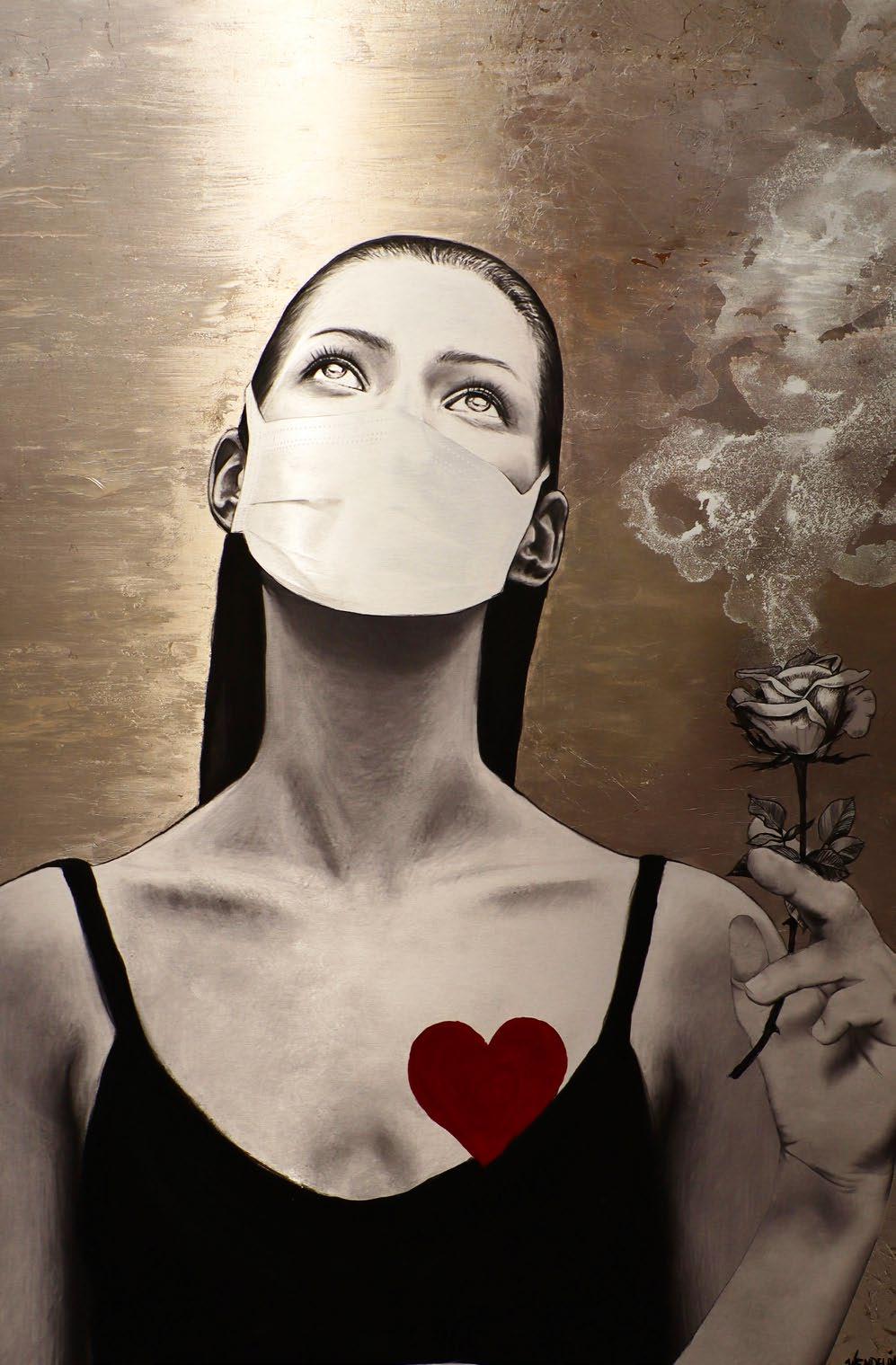
What
you see in fashion commercials doesn’t usually look the same in real life. I used to get starstruck at the thought of meeting models but then you realise they’re just normal and different from their photographed image.
“ “
Born in Rochdale, Scott Tetlow spent much of his free time sketching punks & designing album covers.

Whilst living in Taiwan he discovered the beauty of calligraphy focusing on two types of beauty: the obvious aesthetics and the hidden beauty; the soul and life of a figure.
The artist wishes for his artworks to tell their own story, for the viewer to read their energy as inspired by Chinese painters who “write paintings”. His trademark illustrative style creates a fusion between traditional oriental art and the contemporary.
Upon interviewing the artist, Tetlow has certainly been extremely open with regards to his sources of inspiration, worldview and creative process. His mind wonders freely and imaginatively, something captured in his unique compositions.
What inspires your artwork?
Every day, lots of different things influence me. It could be something small, like the way a friend looks at me or a random thought that pops into my head. Once, when I sighed and looked up, my mum said, “He can’t help you!” It’s an old saying, but instantly, I saw a drawing in my mind. Often, how I feel shows in my drawings. A sudden idea comes to mind, and I draw whatever comes to me. Sometimes, I start drawing without really thinking about it, letting my imagination take over to see what I create.
Besides my own projects, I also do a lot of commissioned work. I like the challenge of striking a balance between their vision and my artistic perspective. It’s a job I find really satisfying and I genuinely enjoy it!
What is the process & medium you use to create your art?
My line drawings are heavily influenced by my time in Taiwan. There, I learned Tai Chi and studied calligraphy, which taught me about making beautiful marks. When I began drawing, I used ink and a nib pen, which I still use. But as I’ve experimented, I’ve found lots of other materials that make interesting marks, like twigs, bits of metal, or even marbles dipped in ink for a painting.
In my studio, I have a collection of these items, and I pick whatever feels right at the time. For my paintings, I stick to using oils. Over the years, I’ve tried different ways to create various effects with them. It’s been a long process of experimenting to develop my current style.
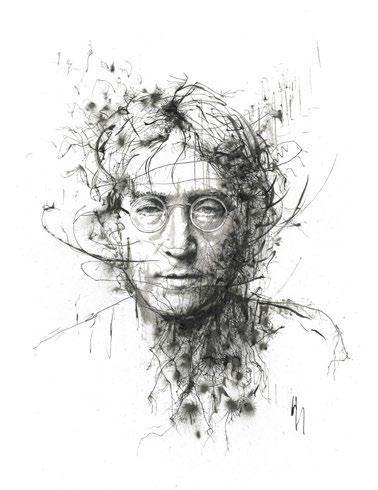
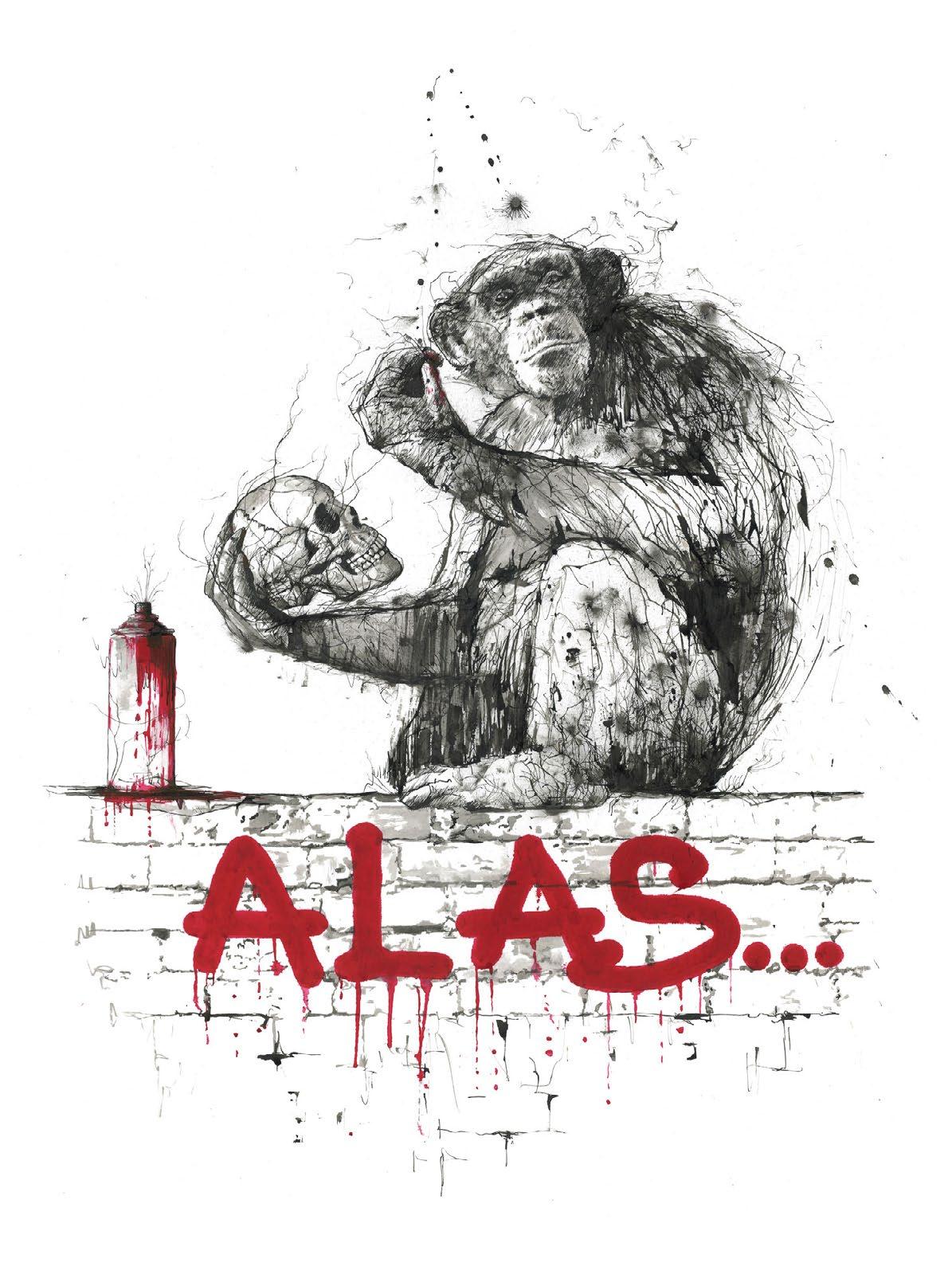
I see my creativity as a passenger that comes and goes. I’ve learned to accept this as just the way it is — no rhyme or reason, no external triggers, it just happens. “ “
Bacon’s intense and raw paintings, Auerbach’s vigorous brushwork, and Freud’s honest portraits all inspire me to explore depth and emotion in my art. “ “
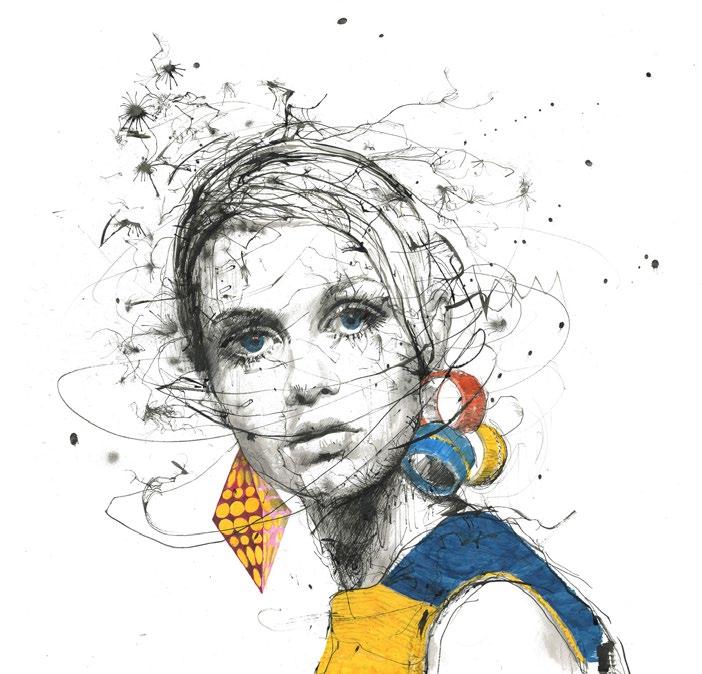
What difficulties have you encountered when creating your artworks?
I see my creativity as a passenger that comes and goes. I’ve learned to accept this as just the way it is — no rhyme or reason, no external triggers, it just happens. There are times when my creativity flows effortlessly for weeks. Every drawing feels like a triumph, and I feel incredible. It’s hard to put into words, but when I’m fully engrossed in a drawing or painting, it’s like I’m not even there. My hands move without me thinking. Sometimes, I’ll step back, and

my conscious mind kicks in, and I’m surprised at what I’ve created. Then, without warning, it disappears - just like writer’s block, I suppose. For days, even a week sometimes, it’s just gone. Everything I create feels flat and lifeless. When I was younger, I used to worry and panic, convinced that my creativity was gone forever. Now, I recognise it and try to make the most of it. I take a break and experiment with paints and techniques. It’s during these times that I might stumble upon a new approach to my drawings. So, I’ve learned to embrace these creative lulls instead of driving myself mad with worry. It’s like some kind of creative spirit that ebbs and flows. The difference now is that I know it’ll come back. I’ll wake up one day, or sometimes in the middle of the night, and just sense it: “It’s back.” I can feel it.
What reaction do you wish for your art to incite in the public?
In a technological world where everything seems perfect and still, I want my art to be a breath of fresh air. There’s too much information, leaving little room for imagination. Instead, I want viewers to feel the movement in my work. For me, movement equals life. Through my marks, I aim to inject energy into my art. I want people to see my pieces come alive, sparking their
imagination and stirring something inside them. I want my works to tell their own story, for the viewer to read their energy.
Who are your biggest artistic influences?
My biggest artistic influences are the Renaissance masters, especially Rembrandt, known for his mastery of light and emotion. In the 20th century, the School of London artists like Francis Bacon, Frank Auerbach, and Lucian Freud have also shaped my work. Bacon’s intense and raw paintings, Auerbach’s vigorous brushwork, and Freud’s honest portraits all inspire me to explore depth and emotion in my art.
Besides these greats, social media broadens my artistic influences. It exposes me to a variety of modern artists, both famous and artists who are just starting out. What’s wonderful about platforms like this is that anyone can impress me and leave a mark on my work. Social media allows us to share our talents and ideas, making it possible for artists of all levels to inspire and influence each other.
What motivates you to create art?
What drives me to create is the mix of influences I encounter. Whether it’s the classics like Rembrandt or the new talents I discover on social media,
they all inspire me. It’s this variety that keeps my creativity alive, pushing me to try new things and express different emotions in my art. Ultimately, I’m motivated by the desire to add my own voice to the diverse artistic landscape out there.
In truth, after losing my studio in a fire and stepping away from art for years, I found myself pursuing other careers. But deep down, I knew I wasn’t truly happy or fulfilled. Art is my passion, my calling. It’s what I love, what I’m truly passionate about. Every day, the thought of going into the studio drives me forward. I’m motivated by the fear of losing this connection to something I love so much. I don’t want to end up in a situation where I’m doing something I don’t love again. So, each day, I strive to keep creating, keep following my passion, because that’s where my true happiness lies.
I’m motivated by the desire to add my own voice to the diverse artistic landscape out there. “ “
How has your style changed over time?
Over time, my artistic style has definitely gone through changes. While I still incorporate oil paints in my work, my focus has shifted primarily towards ink drawings. These drawings predominantly feature portraits, whether they depict human subjects or characters like the Urban Chimps or animals. Regardless of the subject, they all embody a portrait-like essence.
I’ve always wanted to capture movement in my artwork, but I have refined my mark-making, resulting in fewer mistakes as I’ve developed a catalogue of techniques. My marks have become more polished and deliberate, through years of experimentation and learning from past errors.
Another significant change is how I approach a piece. I’ve learned more recently to recognise when to pause and reflect, it’s like playing a game like chess. Instead of continuously working without stopping, I now often work in short bursts mixed with periods of assessment. This shift in mindset allows me to visualise my next steps and avoid the loss of work that often happened in the past. Overall, these changes have not only refined my artistic output but
have also deepened my connection to and enjoyment of the creative process.
What do you think of the Art Space gallery and having your artwork exhibited with us?
I feel incredibly honoured to have my work exhibited at this lovely gallery. It’s a wonderful feeling to see my art showcased in such a beautiful space, surrounded by other talented artists. I’m grateful for the opportunity to share my work with the gallery’s visitors and to be a part of its vibrant artistic community.
If you could describe your art in 3 words, what would you say? Relatable, Figurative, Kinetic.
Do you have a favourite art gallery or museum?
My favourite gallery is the Rijks museum in Amsterdam. It’s home to incredible Rembrandt paintings, some of the most influential ever created. Every time I’m there, I’m mesmerised by the depth and emotion in his works. Rembrandt’s artistry leaves me speechless. The Rijks museum is a place where I feel connected to art, grateful for the chance to admire these masterpieces. There’s an amazing falafel shop nearby too!
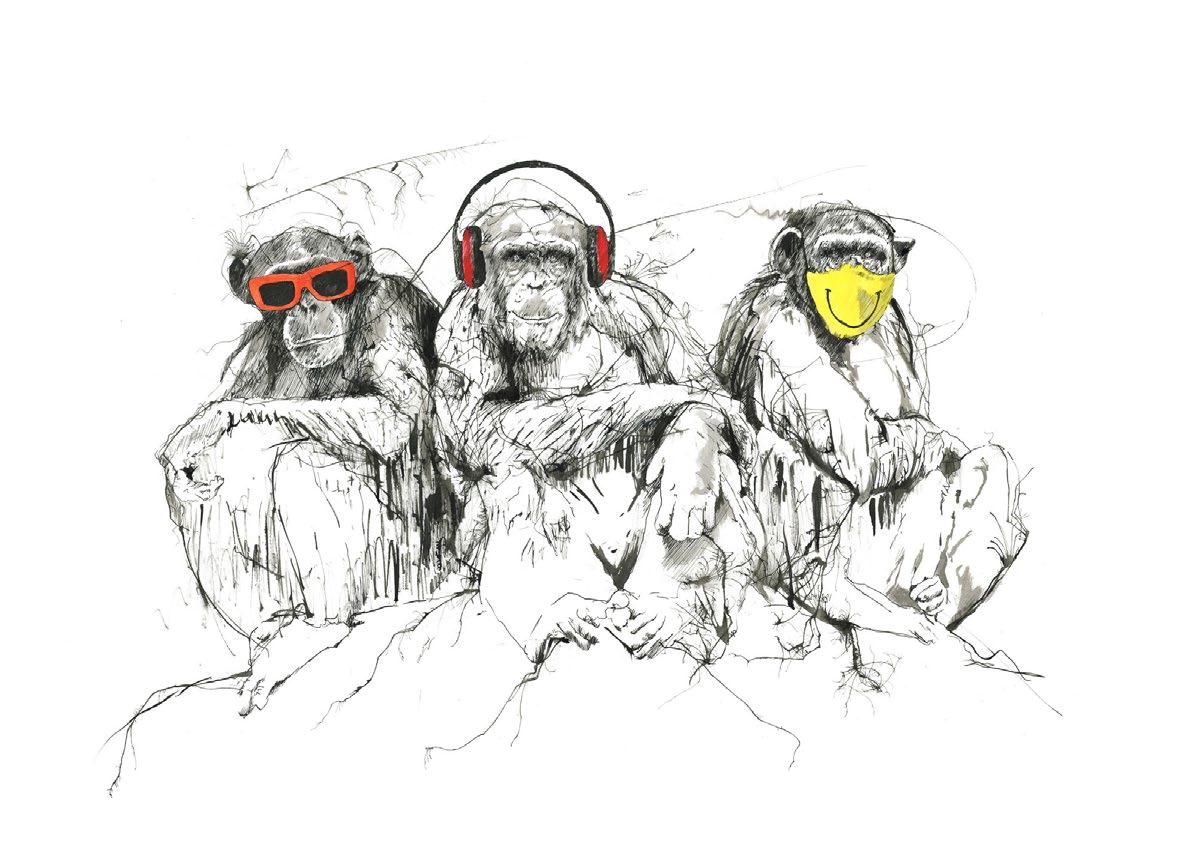
Renowned for its Barbary Macaques, paradisiacal summers and prime location as an overseas British peninsula bordering with Spain, Gibraltar is truly unparalleled.
In regards to property investment and daily life, Gibraltar is renowned for its security and close-knit community. Not only is it a beautiful holiday destination boasting colourful sunsets, healthy Mediterranean cuisine and a high quality of life, but also a mecca of cultural diversity and integration. Being a stone’s throw away from Morocco, this cosmopolitan fortress is an amalgamation of different cultures. Considered a holiday haven by many, Gibraltar is ideally situated close to Spain, Portugal and Africa, and offers frequent daily flights to the United Kingdom. One can find both Malaga and Jerez airports close by in the south of Spain, approximately a onehour drive away with flights to many international locations.

Not only is Gibraltar rich in history and culture, offering various tourist attractions such as the Great Siege Tunnels, St Michael’s Cave, the Moorish Castle, and considered an ever-popular destination for its Maritime industry, but it also frontiers with Andalucia which is peppered with must-see hidden gems such as the cities of Seville, Granada and Córdoba. One can appreciate the illustrious landscape showcasing the blue mountains of Africa along the horizon whilst driving down the Andalusian coastline, and visit some renowned galleries and museums such as the Museo Picasso in Malaga. With many places of interest being easily accessible, Gibraltar makes for the ideal location to invest in a property and a place to call home.
By Tammy Levy
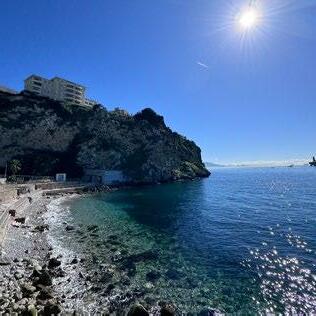

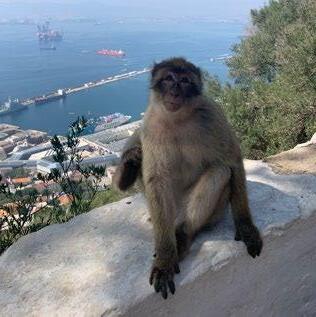

Not only is Gibraltar a beautiful holiday destination boasting colourful sunsets, healthy Mediterranean cuisine and a high quality of life, but it is also a mecca of cultural diversity and integration.
Purchasing a property in Spain is a luxury. Enriched with art, culture, culinary experiences, hidden natural gems, optimal climate and worldrenowned places of interest, it may well feel like a holiday escape all year round!
Sotogrande - Millions of visitors travel to the Costa del Sol every year in order to indulge in the tranquil and peaceful sun-kissed lifestyle Spain has to offer. As a popular location chosen by many A-list celebrities, Sotogrande offers a plethora of amenities for any home buyer.
Quintessentially characterised as a tranquil paradise of opulence and grandeur, this affluent gated community is emblematic of peace, serenity, comfort, and a high standard of living. Nestled away in the Andalusian coastline, Sotogrande boasts a community of unparalleled
excellence. This picturesque location, globally renowned for its long lazy summers and mild winters, is perfectly situated against a natural backdrop uninhabited by industrial chaos. Such qualities make Sotogrande an unbeatable housing location for any buyer. Indeed, properties for sale in Sotogrande range from small flats in the marina boasting spectacular seafront views, to large luxurious villas enveloped in nature, and set amongst breath-taking mountain ranges with easy access to the ocean in a matter of minutes.

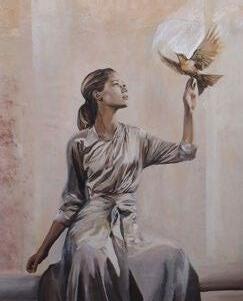
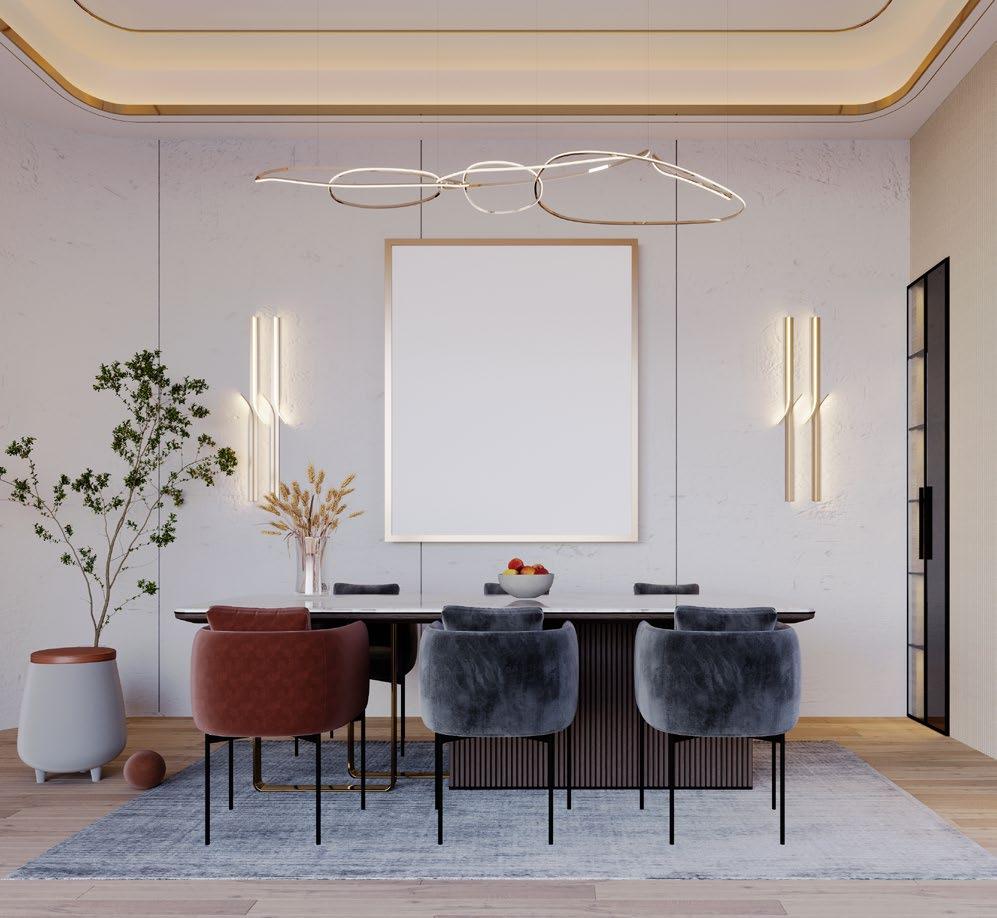
Our large-scale original artworks are appropriately suited to fill the large walls of any high-end property in the area. “ “
Providing a perfect blank canvas for any creative individual and serving as a fantastic opportunity for an interior design project, at Art Space our large-scale original artworks are appropriately suited to fill the large walls of any high-end property in the area. Bringing life, colour and character to any large home, Sotogrande villas are replete with Andalusian charm and traditional rustic eloquence. With its property market continuously expanding, acquiring a home in one of the most high-in-demand neighbourhoods in the world will guarantee a worthwhile investment and transcendental visual melody to feast the eyes!
By Tammy Levy

Guy Denning was born in North Somerset in 1965. He has been obsessed with visual art since childhood and started painting in oils at the age of eleven after receiving a set of old paints from a relative that had grown bored with them.

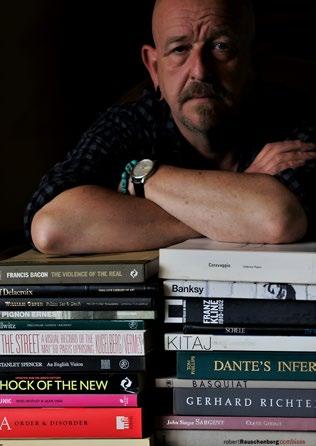
Scan here to find out more about Guy Denning.

Guy peppers west-country towns with his particular paste-up style and sometimes surreal political messaging, alluding to a time when graffiti was popularised.
As a self-educated artist, not many street artists reach the heights that Denning has, let alone simultaneously cross the borders into contemporary, urban and fine art whilst referencing the grand tradition of European preModernist painting.
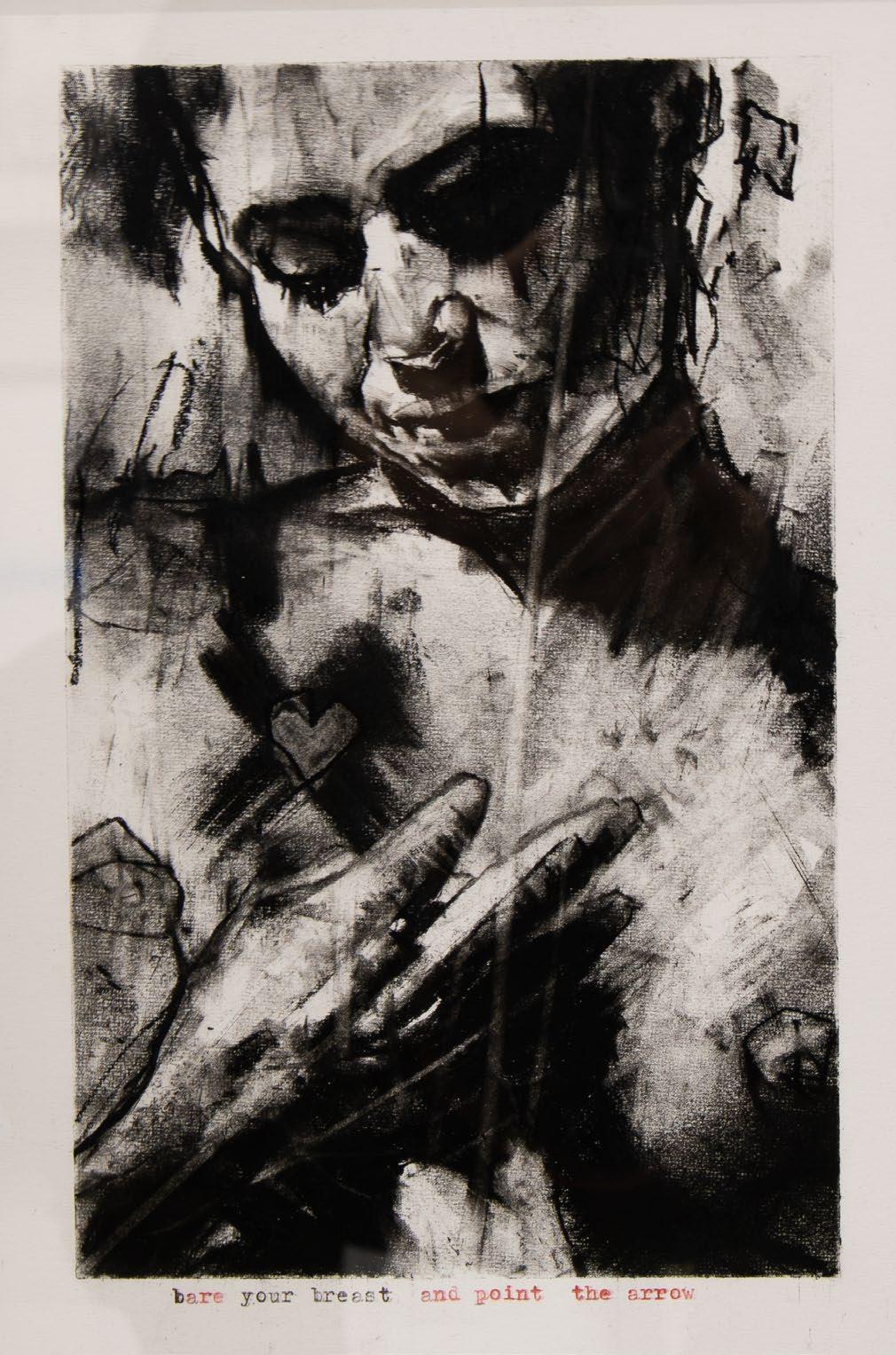
Art Space Gibraltar is a beacon of contemporary art, showcasing incredible works from both local and international artists. Their high-engagement exhibitions captivate art enthusiasts and collectors alike. As one of the biggest sellers of Christian Hook's art, their dedication to quality and excellence is evident. The passionate team, from their magazine editor to curators & art consultants, ensures a seamless and enriching experience for all visitors. We at MYCO Works are proud to support such a dynamic and inspiring gallery!

The Art Space Gallery is such a unique cultural space in Gibraltar. The artworks, team, projects, events and magazines are of a superb standard which is extremely refreshing for Gibraltar. It’s a wonderful place for art students to visit and gain inspiration!
The first issue of Art & Culture has been so enjoyable. A very professionally created magazine with wonderful articles and excellent works of art being depicted throughout. The photography is superb and the general design and layout magnificent. It is an excellent contribution to the Gibraltar community and may it grow from strength to strength under the professional stewardship of your editor Tammy.
The Art Space Gallery provides our visitors with a taste of Gibraltar’s cultural scene. It showcases local talent as well as ensures international art pieces are exhibited on the Rock, thereby adding to the variety of attractions and things to do in Gibraltar.
The Art Space Gallery in Gibraltar is a beautiful venue that has been sympathetically conceived and executed and is a phenomenal setting in which to view art. The gallery provides a warm welcome to visitors and the art is well curated and gives emerging artists an opportunity to showcase their work alongside established international artists through a diverse range of exhibitions.


We are thrilled to announce our new exhibition featuring Mr Brainwash. Starts September 2024.
Originals & Limited Editions.
“Mr Brainwash is a force of nature, he’s a phenomenon.”
Banksy
Scan here to find out more about Mr Brainwash.
(+350) 200 17777 art@theart.space artspace.gi

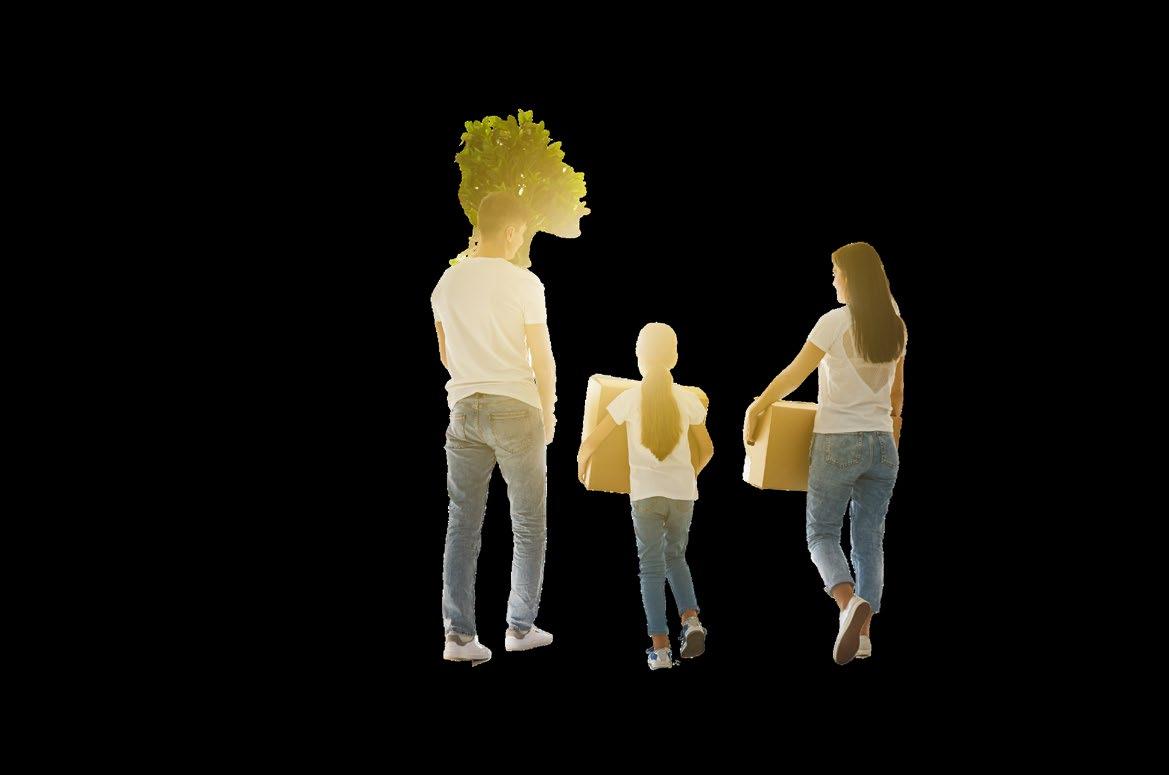


Sponsorship of artists is nothing new. From ancient times to the modern day, patrons of the arts have supported artists throughout art history for many different reasons.

During the Renaissance it was the patron, be that one wealthy person, a member of royalty or a group of rich benefactors, who would pay for the creation of a particular artwork and who were therefore able to dictate the cost, materials, size, location, and subject matter. Definitely not a case of ‘art for art’s sake’, but it did guarantee that if you were an artist and had a powerful patron, your financial security was all but guaranteed.
Nowadays, patronage (or sponsorship) can mean the difference between a starving artist living in a garret to an artist having their own studio. Artists no longer have to hold their hands out and beg for sponsorship because the internet has opened up a whole new world of financial support by providing a plethora of different ways to find
funding and income. Instead of getting sponsorship from one wealthy lover of the arts or a business, crowdfunding platforms enable artists to secure financial backing directly from fans and patrons.
Art sponsorship works both ways. Not only does it assist the artist but sponsorship by a local business can help support the community. Despite the numerous studies giving testament to how valuable the arts are to all of us at every stage of life, the arts are almost always the first to have their budgets cut. When a business makes a significant investment in the arts it shows that they, and the community, are flourishing.
Towns and cities with a vibrant and dynamic art scene become popular with tourists and visitors. Malaga is a great example. Once a place that people flew into and departed quickly from to get to their holiday destinations on the Costa del Sol, it transformed into a cultural hub with the opening of the Picasso Museum in 2003 and it now boasts around forty galleries and exhibition venues. This has led to investment from businesses, hotels, restaurants, tapas bars and shops.
For businesses wanting to attract top talent to relocate to Gibraltar, having a strong art scene makes it easier to convince people to move here, especially those with families who are looking at what is on offer in respect to cultural and art activities. Sponsorship doesn’t just have to be
financial. There are many other ways that businesses can support the arts. This might involve companies providing free or reduced cost products or services, such as catering or drinks for private viewings, the printing of invitations or paints and other materials used when installing exhibitions. The artist can provide benefits to the company in return, for instance company branding in an exhibition space and on any publicity.
For any artist, financial independence is so important. It allows them to fully dedicate themselves to their craft. When an artist’s work is featured in a gallery exhibition, it is not merely a demonstration of their talent but also an affirmation of their artistic skill. It indicates that their work has been considered worthy of being exhibited alongside other accomplished artists. This recognition can significantly boost an artist’s confidence and act as a catalyst for further acclaim and success.

Sponsorship not only helps the artist in show-casing their art but helps build a professional platform for the artist to grow and learn from. “ “
Art Space Gallery in Gibraltar held an exhibition in June to support the careers of emerging Gibraltarian and Campo de Gibraltar artists in the run up to Art Space 24, the International Contemporary Art Fair from 28th of August to 1st of September at the Sunborn Yacht Hotel. Some of the artists that exhibited at the Art Space Gallery in June included Shane Dalmedo, RoseAnn Victor, and Nadine Collado, all of whom are sponsored by local businesses.
Another artist, Gill Welland, sponsored by a business headquartered in Gibraltar, Financial Planning Group (EFPG), comments: “Sponsorship not only helps the artist in showcasing their art but helps build a professional platform for the artist to grow and learn from.”
It is important for businesses to sponsor artists in order to develop the
cultural sector but sponsorship should be seen as a collaboration bringing together complementary skills and experiences for both the sponsor and the artist. Renowned artists are able to get sponsorships quite easily, but beginners in this sector may struggle to find the right sponsors. Up-and-coming artists should look to companies or individuals that have supported artists or art events in the past, and identify businesses who may want to commission artists to create original works that align with their vision, values, or goals.
As the world grows more interconnected, the influence of culture and the arts on the future of business is increasingly apparent and crucial. Culture and the arts serve not only as sources of inspiration, expression, and identity but also as catalysts for innovation, collaboration, and social impact.


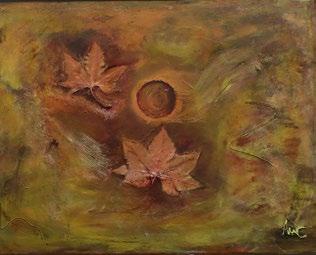
The arts not only improve the quality of life in a community, but as Corporate Social Responsibility (CSR) becomes more and more prevalent it can be seen that companies are moving towards funding community based art and moving away from traditional forms of corporate hospitality.
By Jo Ward

Curating is the art of selecting to give an impression, feeling, and an overall context. An artist and a curator are no different. The distinction is that an artist creates something from scratch and a curator uses something that already exists to put a series of things together. Curation is designing our life.

Curation is a skill used in the art world to showcase the best and most relevant pieces while considering context, theme, and audience. Through curation we can engage viewers by conveying stories and evoking emotions. It involves filtering through vast amounts of information or products to highlight the most relevant, valuable, or interesting pieces for a specific audience. Often possessing expertise in a particular field, curators use their knowledge to provide context, interpretation, and insight into the carefully selected collection. Whether curating art in a museum, creating a playlist of music, or selecting articles for a magazine, curation is about crafting a cohesive narrative or experience that enhances understanding, impacting the emotional state, or engagement with the chosen subject or concept.
Curating a space, involving intentionally arranging and organising elements within a physical environment, requires careful consideration of layout, design, lighting, décor, and objects to create a cohesive and aesthetically pleasing setting that resonates with its intended purpose or theme. This is essential for creating environments that reflect our personalities, values, and aspirations.
A well-curated space can inspire creativity, one of the most important aspects of what makes us emotional intelligent beings. By carefully selecting and arranging elements within a space, we can cultivate a sense of comfort, harmony, and authenticity that enhances our daily lives.
As well as enjoying an aesthetically pleasing environment, curating a space artistically can have a profound impact on our mental health. A wellkept, expressive environment can impact an individual emotionally, mentally, and psychologically. Having art in the house could persuade a stimulating and inspiring environment that uplifts spirits and enriches daily life. Personalized elements and artistic touches may create a sense of comfort and connection, creating a peaceful sanctuary for the mind to rest and rejuvenate as well as inspire
By carefully selecting and arranging elements within a space, we can cultivate a sense of comfort, harmony, and authenticity that enhances our daily lives. “ “
and motivate. Serving as a visual reminder of our values, experiences, and aspirations, art adds beauty, personality, and character to living spaces.
On a biological level, art positively impacts the brain in various ways by stimulating neural pathways, enhancing cognitive functions, and promoting emotional well-being. Engaging with art, whether by creating, viewing, or appreciating it, activates areas of the brain associated with pleasure, reward, and creativity. This activation can boost mood, reduce stress, and improve mental clarity. Art also encourages critical thinking, problem solving skills, and empathy development as individuals interpret and connect with artistic expressions.
The concept of our outer world reflecting our inner world is relevant to curating spaces. The way you
perceive and interact with your external environment is a reflection of your internal thoughts, emotions, and beliefs. By cultivating a harmonious, organized, and positive physical environment, you can create a space that nurtures your inner world. Conversely, disruptions, clutter, or chaos in your external surroundings may indicate inner turmoil, unresolved issues, or emotional distress that could benefit from attention and healing. This philosophy encourages intentional living to create alignment between your inner and outer worlds and highlights how important it is to be in an environment thriving with art and design.
By Petra de Letras


Introducing Mr Brainwash (real name Thierry Guetta). A French street artist who rose to fame through his collaboration with Banksy in the 2010
documentary Exit Through the Gift Shop. He was both featured in and responsible for the filming of the project.
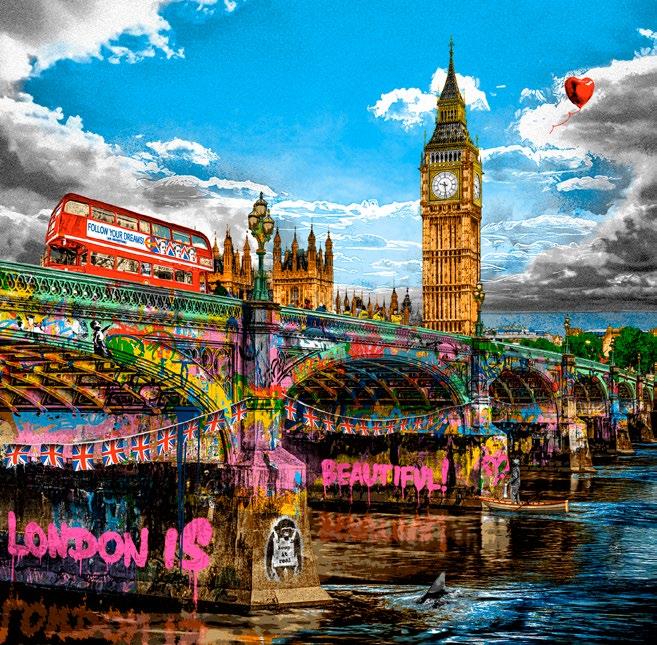

Mr. Brainwash’s style has been referred to as a “collision of street art and pop art”. He often juxtaposes cultural and contemporary icons (such as Marilyn Monroe and Kate Moss) and is greatly influenced by pop artists such as Andy Warhol and Keith Haring.
Using and reusing popular imagery and themes borrowed from other famous artists, such as Jeff Koon’s steel balloon animals and Banksy’s ‘Throwing Man’, Mr Brainwash aligns his artistic intentions with those of the original pop artists, producing art for everybody that can be experienced anywhere.
The artist’s debut exhibition Life is Beautiful (2008) had sales of five figures for single works and received praise from British street artist Banksy. The following year, Madonna commissioned Mr. Brainwash to design the cover for her album Celebration. His major auction debut occurred at Philips in 2010 where Charlie Chaplin Pink sold for $122,500, from an upper estimate of $70,000. He currently lives and works in Los Angeles
Mr Brainwash is a force of nature, he’s a phenomenon. “ “ Banksy
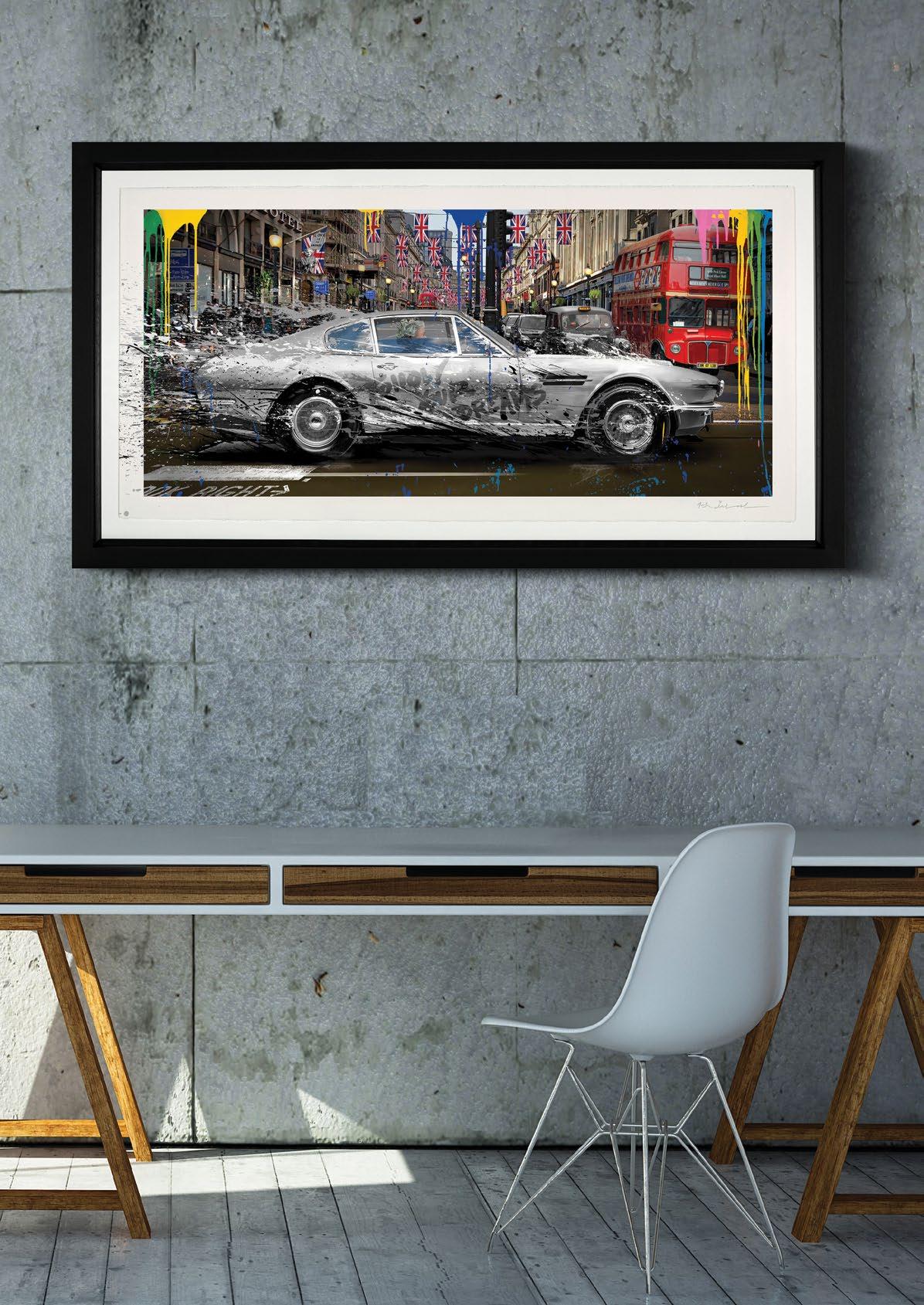
Art auctions are enthralling spectacles where the value of creativity is decided under the hammer’s fall. These events are not merely about the sale of artworks; they are vibrant, dramatic showcases where history, culture, and commerce intersect.
In this dynamic arena, two names stand out above the rest: Sotheby’s and Christie’s. These venerable auction houses have defined and dominated the art auction world for centuries. But what exactly is auctioning, and how do Sotheby’s and Christie’s conduct these grand events?
Auctioning, at its core, is a public sale in which goods or properties are sold to the highest bidder. The process is simple in theory but complex in execution. Items for sale are presented, and participants place bids until the highest bid is reached, and the item is sold. However, art auctions add layers of sophistication, drama, and intrigue to this basic premise.

The auction process begins long before the gavel strikes. It starts with the consignment phase, where sellers (often private collectors, estates, or galleries) submit their artworks to the auction house. These pieces are meticulously examined, authenticated, and appraised by experts to determine their value and estimate their potential selling price.
In this dynamic arena, two names stand out above the rest: Sotheby’s and Christie’s. “ “
Once the pieces are consigned, the auction house catalogs them, producing detailed descriptions and high-quality images for promotional materials. These catalogs are distributed to potential buyers, both physical and digital, to generate interest and anticipation. In the leadup to the auction, the artworks are exhibited in public viewings, allowing potential bidders to examine them closely.
On the day of the auction, a sense of anticipation fills the air. Bidders gather in the auction room, while others participate remotely via phone or online platforms. The auctioneer, often a charismatic figure, takes the stage, guiding the proceedings with a blend of theatrical flair and precision.
Each artwork is presented in turn, with the auctioneer starting the bidding at a predetermined opening price. Bidders signal their interest, often with a subtle nod or a raised paddle. As the bids rise, the auctioneer acknowledges each new bid, creating a rhythm and energy that captivates the room. The bidding continues until only one bidder remains, and the auctioneer declares the item sold with a final strike of the gavel.
Sotheby's Sotheby’s, founded in 1744, is one of the oldest and most prestigious auction houses in the world. It began as a bookseller’s business in London, but over the centuries, it expanded into the sale of fine art, antiques, and luxury items. Today, Sotheby’s operates in over 40 countries, with major sale rooms in New York, London, Hong Kong, and Paris.
Sotheby’s has a reputation for handling some of the most significant and high-profile art auctions in history.
Notable sales include Edvard Munch’s “The Scream,” which fetched $119.9 million in 2012, and Leonardo da Vinci’s “Salvator Mundi,” which sold for a staggering $450.3 million in 2017. These recordbreaking sales underscore Sotheby’s ability to attract top-tier consignments and wealthy bidders from around the globe.
The house’s success is built on a foundation of expertise and innovation. Sotheby’s employs leading specialists in various fields, from Old Masters to contemporary art, ensuring that each item is evaluated with the highest level of scholarship. Additionally, Sotheby’s has embraced technological advancements, pioneering online auctions and digital cataloging to reach a broader audience.
Christie’s
Christie’s, founded in 1766 by James Christie, is another titan of the auction world. With its first sale held in a London saleroom, Christie’s quickly established itself as a leading player in the art market. Today, it operates in major cities worldwide, including New York, Paris, and Hong Kong, hosting around 350 auctions annually.
Christie’s is renowned for its illustrious sales and remarkable auction results. One of the most famous auctions in its history was the sale of Vincent Van Gogh’s “Portrait of Dr. Gachet” in 1990, which fetched $82.5 million, a record at the time. More
recently, Christie’s made headlines with the sale of a collection of works by the late David Rockefeller, which totalled over $832 million in 2018.
A hallmark of Christie’s is its dedication to innovation and adaptation. The auction house has continually evolved, embracing online auctions and digital tools to enhance the buying and selling experience. Christie’s also places a strong emphasis on client relationships, offering personalized services and private sales that cater to the needs of high-net-worth individuals and institutions.
The process of valuing art is both an art and a science, requiring a deep understanding of historical significance, market trends, and artistic merit. At Sotheby’s and Christie’s, this task is entrusted to teams of experts who meticulously assess each piece.
Valuation begins with provenance research, where the history of the artwork’s ownership is traced. Provenance can significantly impact an artwork’s value, with pieces
The world of art auctions offers a fascinating glimpse into the interplay between creativity and commerce.

that have notable or distinguished ownership histories often commanding higher prices. Condition reports are also crucial, as the physical state of the artwork affects its desirability and value.
Market trends play a vital role in valuation. Experts analyse current demand for specific artists, styles, and periods, comparing recent sales of similar works to estimate potential auction outcomes. Art historical significance, rarity, and the artwork’s overall quality are also weighed in the valuation process.
The auctioning and valuing of art is a complex, multifaceted process that combines expertise, history, and market dynamics. Sotheby’s and Christie’s, with their centuries-old legacies, stand at the pinnacle of this world, orchestrating auctions that are as much about spectacle and culture as they are about commerce. These auction houses not only facilitate the sale of art but also celebrate its enduring value, connecting collectors with masterpieces and ensuring that the world’s artistic heritage is preserved and appreciated for generations to come. Whether you’re a seasoned collector or a curious observer, the world of art auctions offers a fascinating glimpse into the interplay between creativity and commerce.
By Amber Williams
“ “ the end
Stephen is a Suffolk based artist with a background in Architecture. He focuses his art on city skylines to help capture and preserve important places and memories for people.

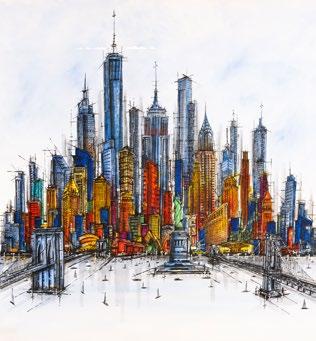
Primarily using acrylic paint on canvas to create iconic skylines, the artist ensures that each painting is a story of something, some place, or someone who changed a person and made them who they are today.
Scan here to find out more about Stephen

At times, his skylines are relatively literal and straight forward, capturing important places that mean something for his customers or himself. Other times they're more abstract to represent the way we experience a place differently depending on our state of mind.

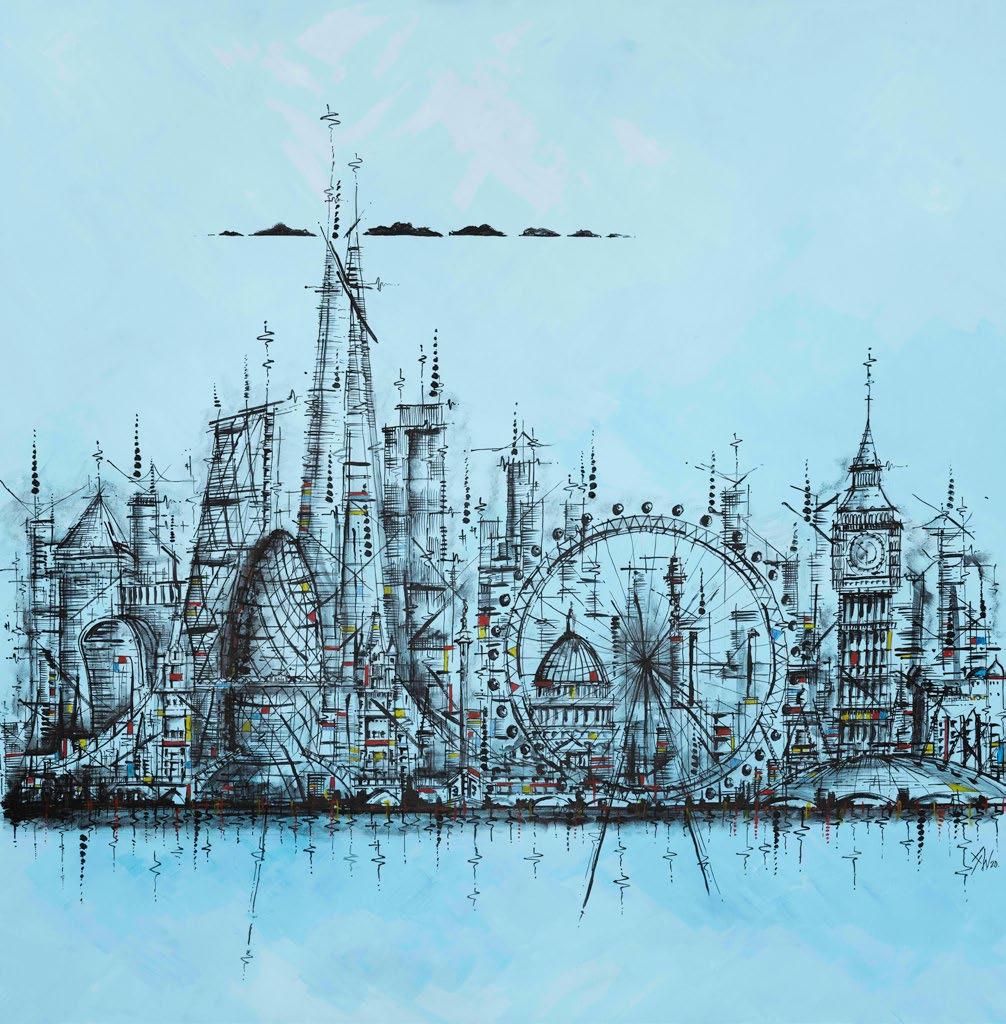
In the bustling, kaleidoscopic world of art, few events spark as much excitement and anticipation as art fairs.
These vibrant gatherings, celebrated globally, draw together artists, collectors, galleries, and enthusiasts into a unique, dynamic space where art is not merely displayed but actively engaged with, discussed, and exchanged. But what exactly are art fairs, and why have they become such pivotal fixtures in the cultural calendar?
At their heart, art fairs are grand exhibitions where multiple galleries present artworks for sale. Unlike the serene, contemplative settings of museum exhibitions or the singular focus of a solo gallery show, art fairs are bustling, commercial events. They serve as a platform for galleries to showcase a curated selection of artists and works, often blending the illustrious with the innovative, the established with the emerging.
While the primary purpose of an art fair is to facilitate the sale of art, their role transcends mere commerce. These fairs act as cultural epicentres, offering a melting pot of networking, education, and exposure. For collectors, art fairs are treasure troves of discovery, presenting opportunities to encounter new artists and acquire unique pieces directly. For artists, these events offer invaluable exposure to a broader, often international, audience and potential patrons. For galleries, art fairs provide a concentrated setting to promote their artists and cement their reputation within the art market.
Several key features distinguish art fairs from other art-related events, making them unique and influential:
• Art fairs typically boast a wide spectrum of artworks, from paintings and sculptures to installations and digital art. This diversity caters to varied tastes and interests, democratizing art and making it accessible to a wider audience.
• Leading art fairs draw galleries and artists from around the globe, enriching the fair’s offerings and introducing attendees to a myriad of artistic traditions and cutting-edge innovations.
• For industry professionals, art fairs are prime opportunities for networking. Collectors, curators, critics, and artists converge in these vibrant spaces, fostering relationships that often lead to future collaborations and ventures.
• Many art fairs incorporate educational components, including panel discussions, lectures, and workshops. These programs provide deep insights into contemporary art trends, market dynamics, and the artistic process, enhancing the overall experience for attendees.
• Some fairs feature specially curated sections or thematic exhibitions, spotlighting specific trends, genres, or emerging artists and offering a more focused viewing experience.
Art fairs have blossomed across the globe, each with its distinct character and focus. Here are a few of the most iconic:
Art Basel (Switzerland, Miami, Hong Kong)
Art Basel stands as the epitome of the art fair world, with prestigious editions in Basel, Miami Beach, and Hong Kong. It attracts leading galleries and showcases a high-calibre array of contemporary and modern art. Known for its meticulous selection process, Art Basel features works from the most celebrated artists alongside innovative pieces from burgeoning talents, creating a rich tapestry of the art world’s finest.
(London, New York, Los Angeles)
Frieze is a key player in the contemporary art scene, with fairs in London, New York, and Los Angeles. Frieze London, held in the verdant Regent’s Park, is particularly noted for its focus on cutting-edge contemporary art. The fair includes Frieze Masters, which broadens the perspective, featuring works spanning from ancient to modern art.
Armory Show (New York)
The Armory Show, held annually in New York City, is one of the leading art fairs in the United States. Covering a wide range of 20th and 21st-century artworks, it is renowned for its rich history, tracing its origins back to the groundbreaking 1913 Armory Show that introduced modern art to America.
The United Kingdom boasts a dynamic and diverse art fair scene, catering to a variety of audiences and artistic preferences. Here are a few notable mentions:
Nestled in the vibrant heart of London, the Battersea Affordable Art Fair is a standout event on the city’s cultural calendar. Its mission is clear and commendable: to make contemporary art accessible to everyone. With thousands of artworks priced under £6,000, it attracts a broad audience, from seasoned collectors to first-time buyers. The fair’s relaxed, welcoming atmosphere encourages exploration and engagement, making art acquisition a joyful and approachable endeavour. Watch this space, as the Art Space Gallery will be making its way to the London art scene!
The London Art Fair, held at the Business Design Centre in Islington, is a beacon for modern British art. Featuring museum-quality Modern British art alongside contemporary works from leading galleries, it serves as a barometer for the UK’s vibrant art scene. The fair’s curated sections, including Photo50, dedicated to contemporary photography, and Art Projects, focusing on emerging artists and innovative practices, offer a rich and varied experience for visitors.
The Other Art Fair, with editions in London and beyond, presents a refreshing twist on the traditional art fair model. By showcasing works directly from artists rather than galleries, it bridges the gap between creators and collectors, offering a more intimate and direct engagement with the art and its maker. This fair is known for its eclectic mix of artworks and its inclusive, democratic ethos, making it a beloved fixture for those seeking something fresh and unique.
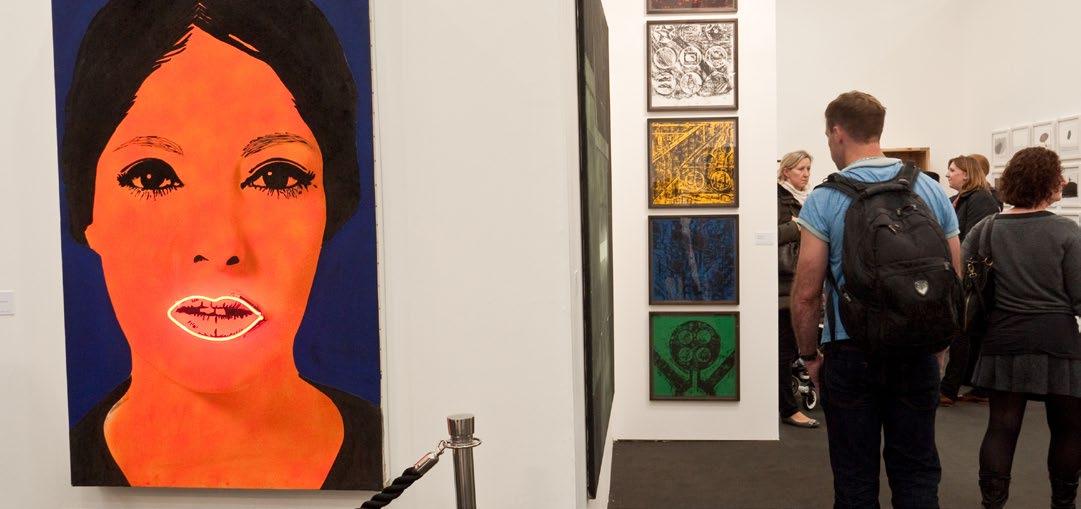
Art fairs are much more than marketplaces for art; they are vibrant cultural events that bring the art world to life. By gathering diverse artworks and fostering direct interactions among artists, collectors, galleries, and the public, art fairs create a dynamic environment where art is celebrated, critiqued, and, most importantly, shared. Whether you’re a seasoned
collector, an aspiring artist, or simply someone with a love for creativity, art fairs offer an unparalleled opportunity to immerse yourself in the ever-evolving world of art. From the prestigious halls of Art Basel to the accessible charm of the Battersea Affordable Art Fair, these events remind us of the power of art to connect, inspire, and transform.
By Amber Williams
If you are heading for Gibraltar on a cruise liner this autumn, here is a guide on how to maximise your sightseeing and plan a great trip on a time crunch with twentyfour hours of art and culture.

the Med
You don’t need to feel starved of art and culture on a cruise ship and if you have a hankering for adding a bit of art appreciation to your trip on the high seas, there are plenty of cruise lines that feature on-board galleries, art tours and art enrichment programmes with guest lecturers. In conjunction with prestigious art galleries there is an opportunity to join on-board events that will introduce you to contemporary and classic artists with exhibitions showcasing some of the most famous artists in the world, together with a chance to purchase affordable art (priced in the four and

five figure category) either at auction or from their comprehensive catalogues.
Budding artists can take advantage of learning a new hobby with an on-board artist-in-residence who will offer step-by-step watercolour painting or mixed-media tutorials, usually on sea days.
Once you dock in Gibraltar and disembark you will want to make the most of your time on shore which can range from between five to twelve hours or sometimes overnight.
Planning your trip is part of the fun, so here are some hints and tips to ensure you get the most out of your time on the Rock.
It’s worth remembering that Gibraltar is a British Overseas Territory and that the official currency is the Gibraltar Pound, however you can pay using the British pound but if you have any Gibraltar currency leftover you won’t be able to use it anywhere else, even in the UK.
There are several attractions that you may want to add to your list of things to see and do. One great way to pack a lot into a limited time frame is to apply for a one day digital visitor pass. The Gibraltar Pass combines most of the top attractions and much more including the Cable Car, Minibus Rock Tours, Skywalk, St Michael’s Cave, WW2 Tunnels, Great Siege Tunnels, Alameda Wildlife Conservation Park and other leading attractions.

The Pass can be purchased online on www.GibraltarPass.com and received by email. Visitors simply display the Pass on their mobile devices and get it scanned at each attraction to gain entrance at no further cost. The Pass also includes free transport on Citibus routes (from and to the border to the town centre) as well as over 100 freebies and exclusive discounts at activity providers, shops and restaurants across Gibraltar, such as a free glass of wine, free gin tasting, free tapas, discounted dolphin watching tours and much more.
With a growing and vibrant art scene in Gibraltar, there is plenty to investigate to quench your art thirst.
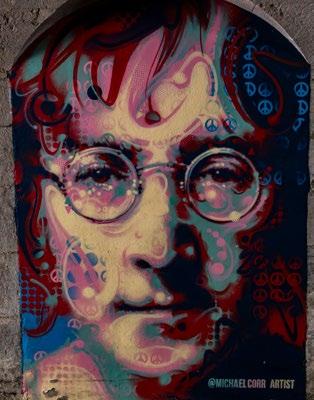
Street Art – The initiative to decorate Gibraltar’s streets in a creative manner was part of an urban regeneration programme, announced by the Government in 2017, focusing on the renewal and beautification of Gibraltar’s Old Town. Gibraltar Cultural Services on behalf of the Ministry of Culture launched a Street Art Mural walk in 2021. Using a flyer that can be downloaded on www.culture.gi you can take a selfguided tour around the fifteen murals that bring to life some of the walls dotted around town, improving the physical appeal of building facades. The murals, celebrating some of Gibraltar’s multilayered history as well as depicting some notable events, have been created by local and international artists. A largescale mural in Ragged Staff shows Lord
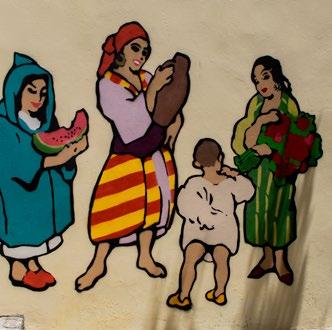
Nelson’s flagship in his victory at the Battle of Trafalgar. The image shows the HMS Victory being towed into Gibraltar, using references from 19th Century Clarkson Frederick Stanfield oil paintings and reflects Gibraltar’s proud military and naval history. One of the more recently completed murals is of legendary musician John Lennon which is in reference to The Beatles musician travelling to Gibraltar to marry Yoko Ono in 1969.
Art Galleries – There are a host of galleries in Gibraltar exhibiting everything from works by Gibraltarian artists to international contemporary artists. Alongside the Fine Arts Gallery, GEMA (Gibraltar Exhibitions of Modern Art), the Gustavo Bacarisas Gallery and the Mario Finlayson National Art Gallery is Gibraltar’s newest gallery, Art Space Gibraltar, a contemporary art gallery that serves as a dynamic cultural hub, showcasing a wide array of works from some of the most renowned artists of our time. Situated in the old Police Station in Irish Town, the building has been converted into Art Space, housing paintings, sculptures and installations.
Art Fair 2024 – A fantastic way to spend the day is by visiting Gibraltar’s 1st International Contemporary Art Fair taking place between the 28th August to 1st September. In this Art Fair you will find a variety of artworks peppered around every corner of the Aurora Ballroom on The Sunborn Yacht Hotel. Exhibited in various layouts and designs, you can easily access the different corners of the space and find


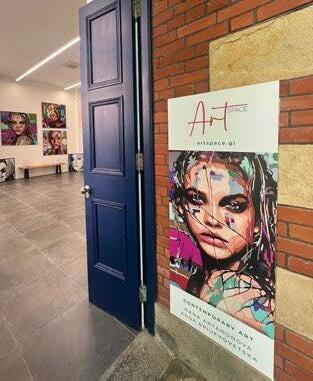
a combination of both international and local artists, as well as renowned and emerging ones.
Gibraltar is making a name for itself as a hub for artists and galleries. Whether you visit for a day after docking at the Port or have longer in which to enjoy the various galleries, there is no doubt that Gibraltar’s artistic landscape is blooming.
By Jo Ward

An Art Historian is a learned and academic individual who holds extensive knowledge in the History of Art. Through the study of aesthetic objects, an Art Historian develops the ability to provide a visual analysis on an artwork, building or other artistic visual representation, founded on a substantial breadth of knowledge about the history of art. Art History is an extremely broad subject, whereby its historians typically specialise in a particular time frame or concern. From art criticism and philosophy, to socio-political and historical concerns, having an in-depth understanding of artistic movements, styles, traditions and symbolism, an Art Historian is able to deduct a unique theory based on years of study within their chosen field. Able to critique art from an academic standpoint, the political, social and historical events which informed the art at the time offer a pivotal dimension to stylistic analyses and further develop the iconography in question.

What careers exist within this broad subject area?
As a highly subjective and broad subject within the Humanities, studying History of Art can potentially lead to a diverse array of career options. Not only does an Art Historian acquire acute communication and analytical skills, but is typically a highly creative person who can specialise in a variety of professional areas. From becoming an Art Critic who critiques the works of artists, to a Restorer who skilfully preserves and restores artworks, or a Curator/Gallery Manager, who creates the perfect exhibition space that factors in a plethora of curatorial concerns.
In the United Kingdom, a variety of exemplary Russell Group Universities offer unparalleled Art History qualifications. Selecting which University to attend can be an overwhelming and daunting experience. Among the many reputable academic institutions which exist, below is a selection of our personal favourites for the study of History of Art.
Being one of the top ten universities in the United Kingdom, Warwick’s History of Art department offers a special opportunity to study abroad in Venice during the final year of the course. Immersing students in the field of Art Historical theory, lectures often taken place in museums, galleries and manors. Teaching staff at Warwick University consists of scholars of international standing who offer their
own valuable research and expertise to the subject. From antiquity to the present day, the degree course at Warwick offers something for every student. Warwick’s famous Mead Gallery is the largest multi-venue complex outside of London, and holds one of the most important art collections in the country, with over 1,000 pieces. Some of the best contemporary art exhibitions in the country take place here three to four times per year.
The renowned Courtauld Institute is considered to be ranked within the top 3 best universities for the study of Art History in the world. As an elite and highly specialised institution, the Courtauld solely offers subjects within the study of Art History. From diplomas, to degree courses in curation and conservation, the Courtauld is home to one of the most exclusive galleries in the world, housing original Manet’s and Van Gogh’s. Producing the best student dissertations in the world, the Courtauld is renowned among any Art Historian.
Being the chosen course and place of study by the Princess of Wales, Kate Middleton, History of Art at St Andrews is considered one of the top institutions in the United Kingdom to attain a humanities degree. With a versatile degree offering highly engaging lectures and a small cohort of students, St Andrews is known for its ability to “strike the perfect balance between academic rigour and university life”.
“Choosing to study History of Art for my degree in the prestigious Warwick University was the best decision I ever made in life. After being awarded the title of Scholar in 2014, my hunger and love for learning and academia only intensified. I have lived some incredible life-changing experiences from making one simple decision to study this subject and enrich my life in a way I never thought possible. Working firsthand with some amazing professors and cultural organisations opened up a world of culture and admiration for those who are so passionate about the art world, and dedicate their lives to research. Spending years travelling the world and visiting some of my favourite museums and galleries, one of my most memorable anecdotes was in Florence, when I enrolled on a photography course in 2018. The father of my instructor was a restorer contracted by the Uffizi Gallery, and invited me to visit his studio. Before heading off to

the train station and travel westward to Pisa, I followed my instructor down a narrow cobblestoned alleyway in the centre of beautiful Firenze, entered his father’s workshop and was astounded by suddenly being in the presence of Botticelli’s and Titian’s galore! Being
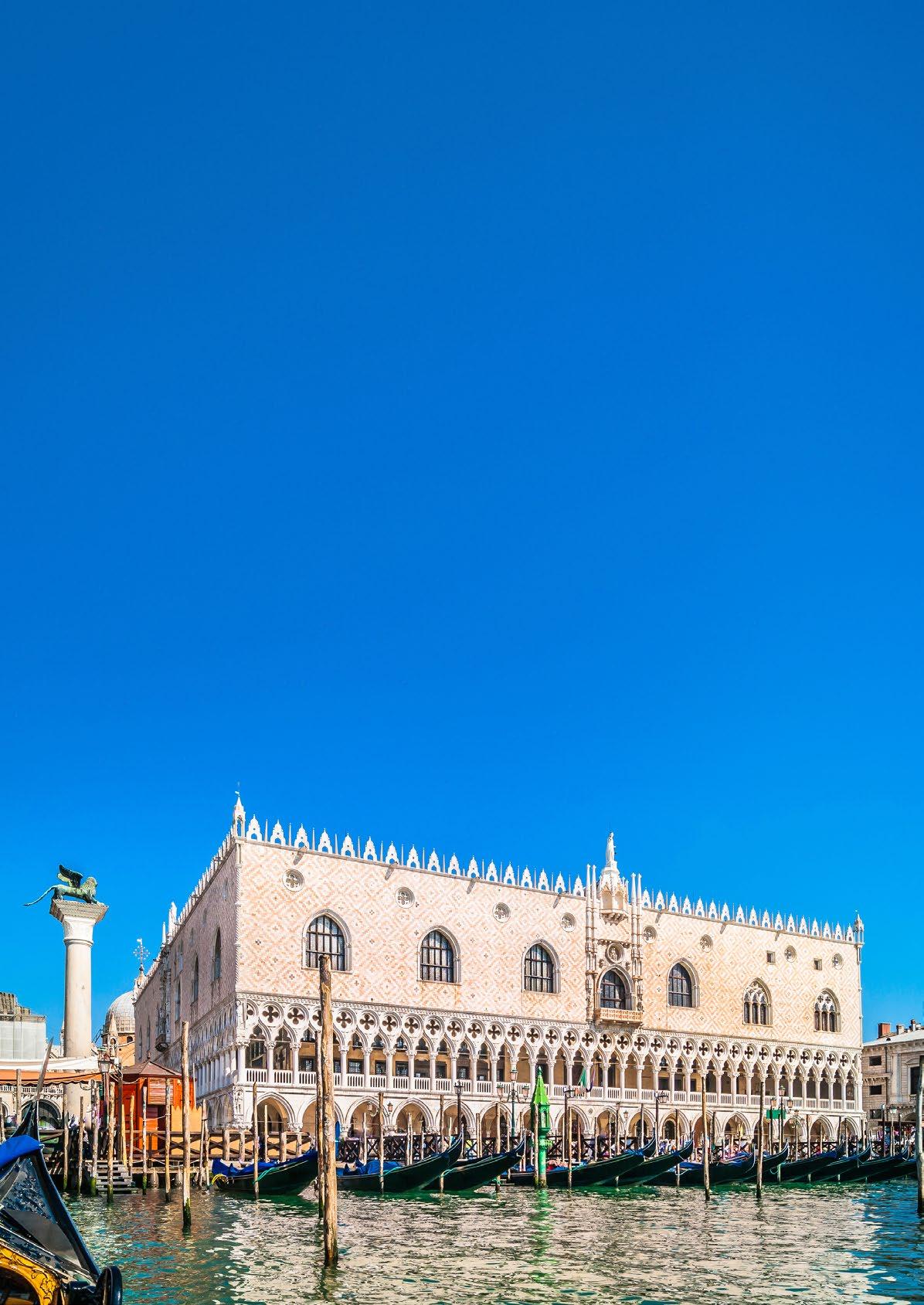
face to face with these masterworks in a highly secretive and secluded location in the epicentre of the city was a remarkable experience”.
By Tammy Levy


996% 6%
of UoG students feel satisfied that the knowledge and skills they take away from their programme support their career aspirations.
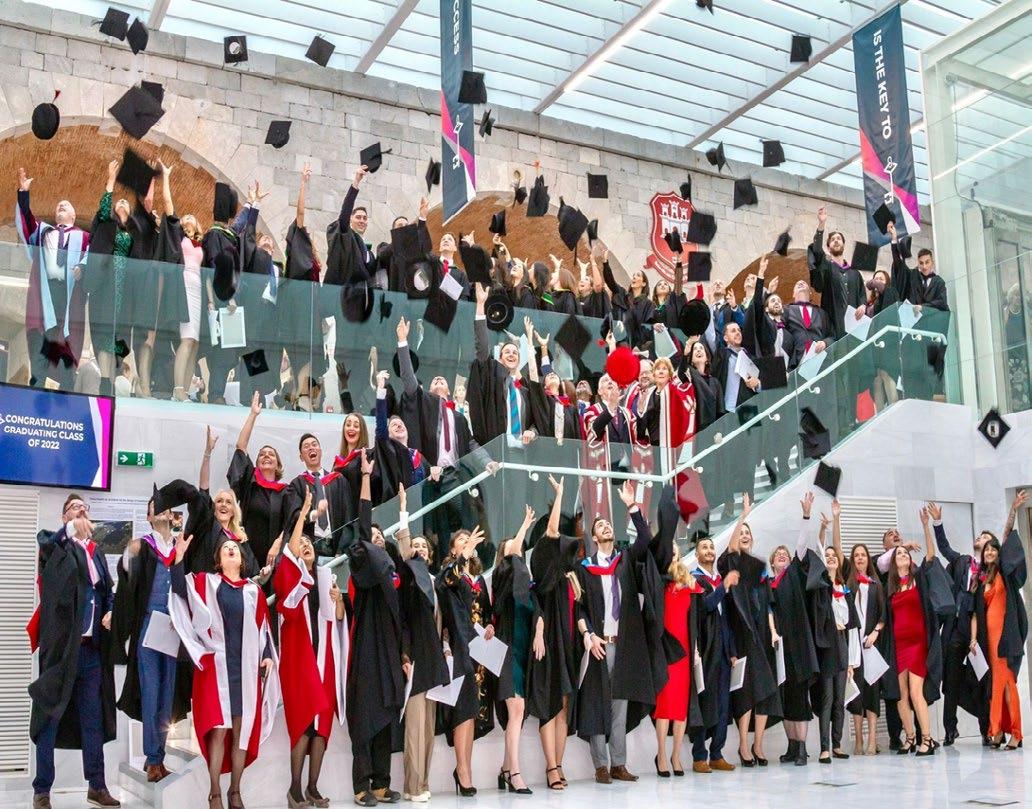

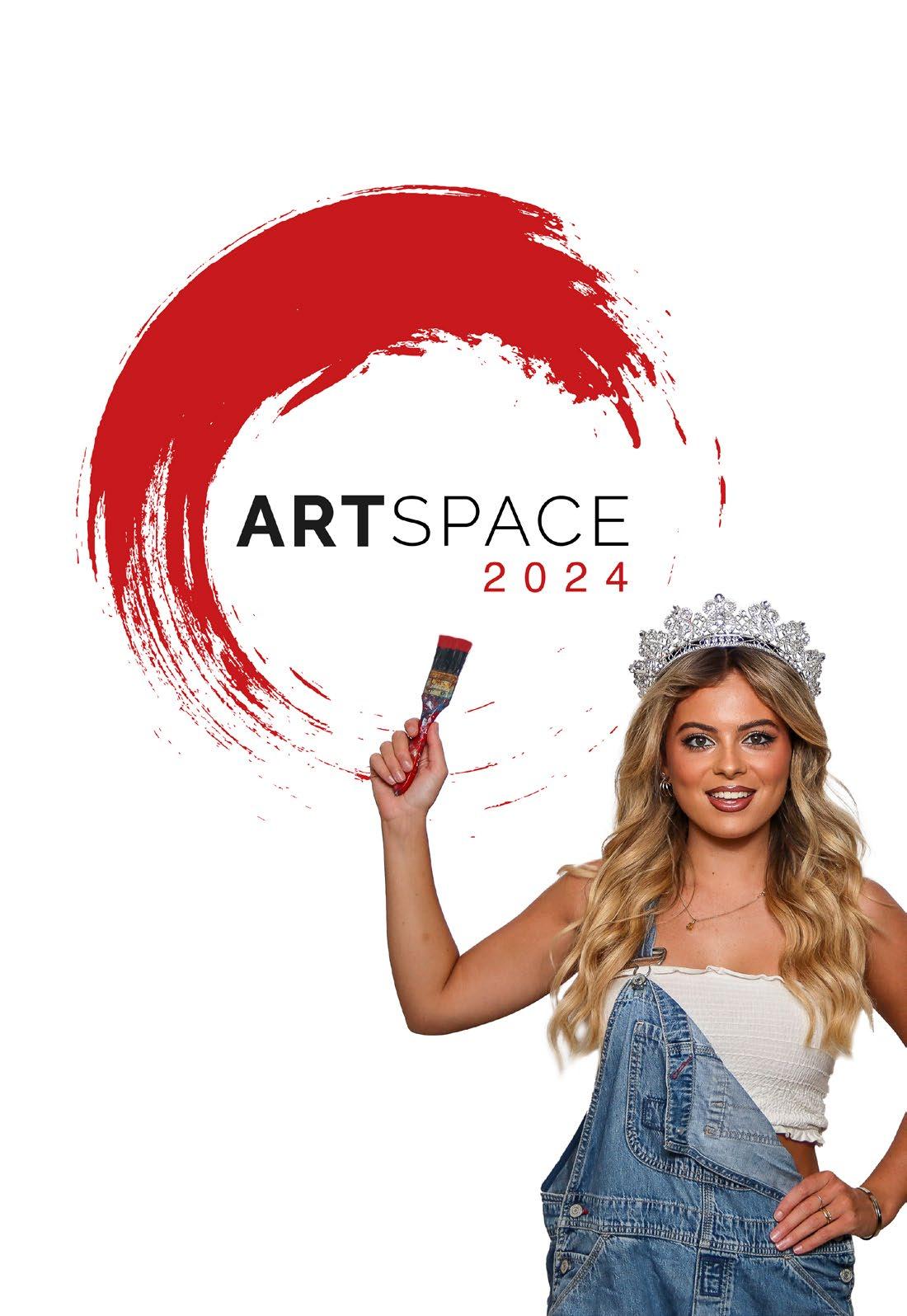
Introducing Gibraltar’s First International Contemporary
Fair
Hosted at the Sunborn Yacht Hotel 28th August - 1st September 2024


Hosted in the Aurora Ballroom at the Sunborn Yacht Hotel, Art Space strives to give recognition to the artists whose art lines the panels and exhibition spaces of the ballroom.
Celebrating the skill and talent of many, our team at Art Space has carefully curated an accessible space for all to enjoy. Seeking to promote art and culture both in and out of the Iberian Peninsula, we graciously extend a hand and invite you to interact and be enveloped in a room filled with colour and human expression.
Not only does the Art Fair aim to provide a feast for the eyes, but it also becomes a learned and educational experience, where one can find out more about each and every story that lies behind the artworks.
Some of our wonderful artists will be readily available to meet and greet you, and introduce their portfolio of works first-hand.
With a balance of emerging and well-known artists, Limited Editions and Originals, the Art Fair strives to present something for everyone, and make art accessible to the public. Should you find a hidden gem which piques your interest, our team will be available to answer all of your queries and help you with your purchase.
Aiming to give every piece of art a happy home, we eagerly welcome you to make the most of the space and enjoy the display which has been crafted with so much love and care.
The venue

Welcome to the Sunborn Yacht Hotel Gibraltar! Oozing luxury and opulence, the Sunborn is the ideal place to relax and enjoy a peaceful holiday in sunny Gibraltar.
The Sunborn Group originally pioneered its initial floating hotel concept in 1998. Since then, various yacht hotels have been peppered around the world, including our beloved Iberian Peninsula. Being the only company to successfully build a fleet of fully functioning, fivestar luxury hotels, the Sunborn also boasts a range of luxury experiences from exquisite dining to indulging in a zenful oasis of peace and tranquillity at the spa and wellness centre.
Situated on the top deck, one can find the Barbary Restaurant, characterised by a relaxing atmosphere and breath-taking views of the bay of Gibraltar. The nearby Aqua Bar also offers guests the option of enjoying a drink by the pool, or alternatively, the Sunborn Gastro Bar located on the third floor, exhibits a scenic view of the harbour while also providing a varied food menu and regular live music performances.

At the Infinity Spa guests can fully relax and enjoy being pampered in this first-class private sanctuary. Treatments can be tailored by expert therapists for specific skin types with the best of what Elemis Skin Care has to offer. A variety of treatments are available, from facials and massages to bespoke hair and make-up packages, aiming to promote a sense of calm and wellness with active natural ingredients which nourish, hydrate and renew.
The Aurora Ballroom provides a large and varied space for many different types of events including wedding celebrations and business functions. At Art Space, we have taken advantage of this flexible event facility in the creation of our 2024 International Contemporary Art Fair. With its retractable walls, six conference rooms, partitions, screen projectors, integrated dimming ceiling lights and marine windows, the Sunborn is certainly an architectural marvel of our time with its array of facilities primed for any occasion.
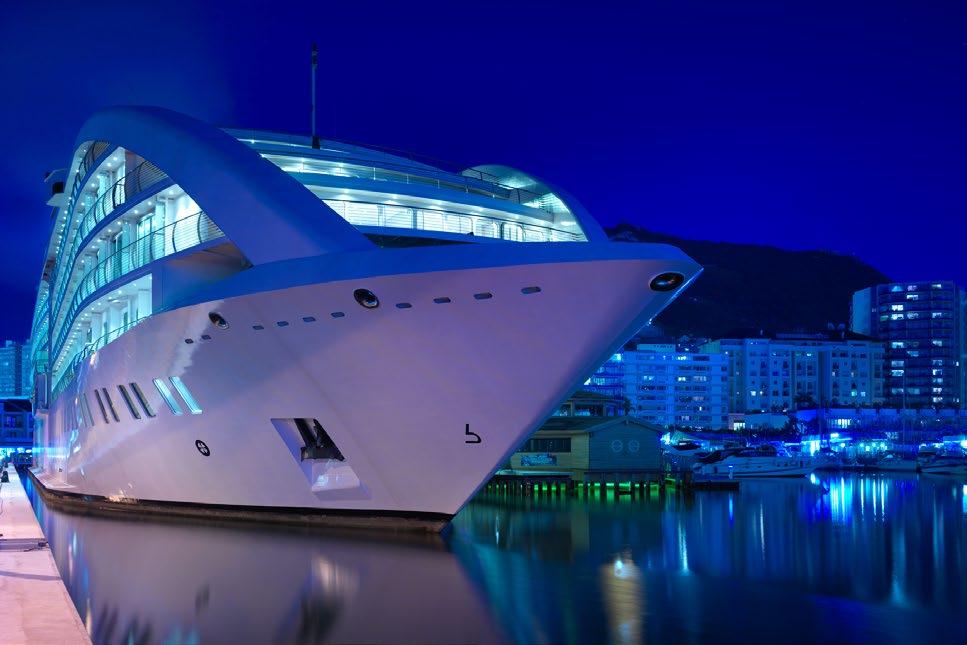

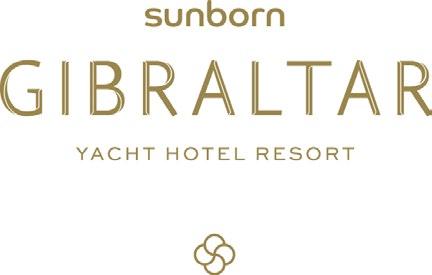


Bozhena Fuchs (Czech Republic)
Landscapes
Oil on Canvas
An award-winning artist, Bozhena currently resides and works in Prague. Her greatest passion lies in capturing the beauty of the sea and painting cityscapes.

Stephen Watkins (UK)
Cityscapes
AcryliconCanvas
With a background in Architecture. He focuses his art on city skylines to help capture and preserve important places and memories for people.
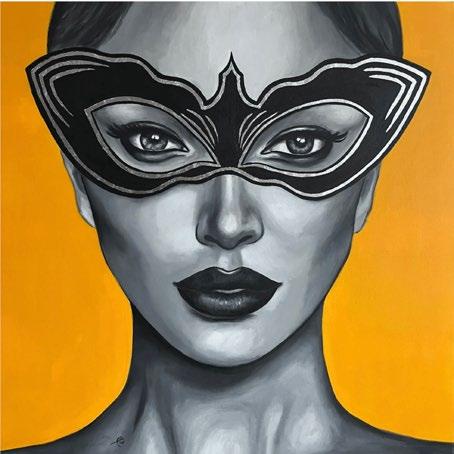
Briukhovetska (Ukraine)
Portraits
Oil on Canvas
Her canvases mainly comprise of scenes depicting women with the notion that behind their external beauty there is always a storm of feelings, a character, a story that makes each portrait unique.

Chris Bourne (UK)
Landscapes
Mixed Media
Chris Bourne is a British artist living in St.Ives, Cornwall, and delving into the world of Impressionism.

Mr Brainwash (France)
Figurative Mixed Media
With an orchestrated collision of Pop Art & Street Art, Mr Brainwash navigates the world of film, sports, music and celebrity culture in a parody alongside artists like Banksy.
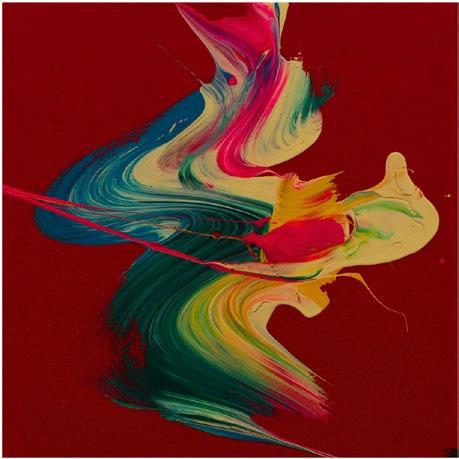
Isabelle Breitkopf (Germany)
Abstract
AcryliconCanvas/Sculpture
Ranging from soft to cheerful compositions, her body of work incorporates complex structures and a unique expressiveness which instantly calls the attention of the viewer.
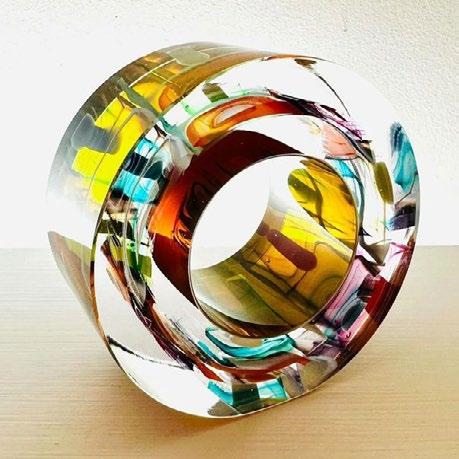
Graeme Hawes (UK)
Sculpture Glass
Graeme is an experienced glassblower who fuses together traditional handmade techniques with a contemporary edge in his brightly coloured glasswork.
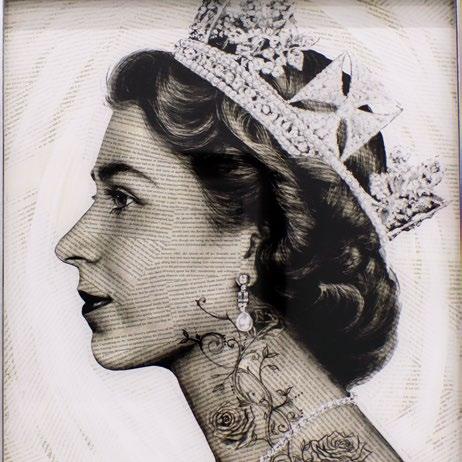
Pete Humphreys (UK)
Figurative Mixed Media
Drawing inspiration from the Impressionists, Pete incorporates their loose brushwork into his compositions, creating mixed media scenes and portraits that emulate the cinematic technique.
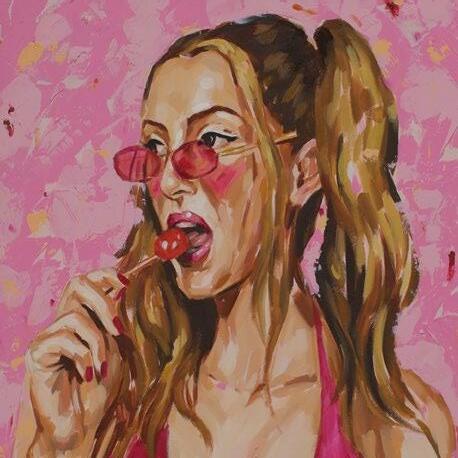
Joss Clapson (UK)
Figurative Mixed Media
Joss Clapson has always experimented with different mediums including ink, pastels, charcoal and oils. She has developed her style by taking inspiration from the reckless youth culture of the 1960s.
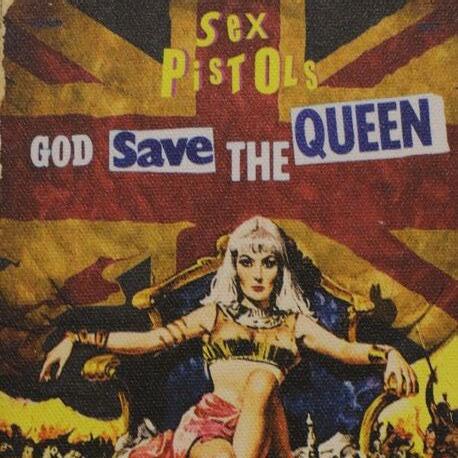
Linda Charles (UK)
Figurative Mixed Media
The artist Linda Charles strives to produce work that both connects on a cerebral and visual level, producing the same feelings in the viewer as it does with her when she paints it.
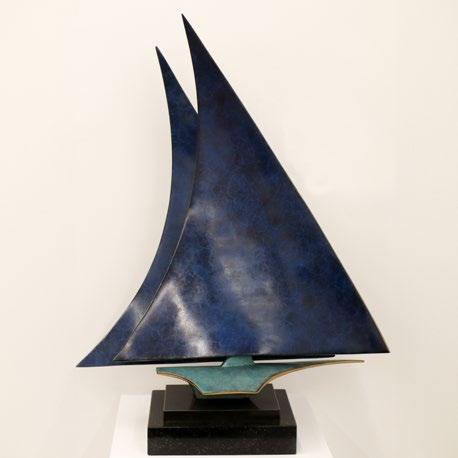
Duncan MacGregor (UK)
Landscapes
OilonCanvas/Sculpture
Innovative British artist Duncan MacGregor uses sophisticated techniques to create beautiful sailing scenes, coastal landscapes, abstract artworks and stunning sculptures.

Nana Artamonova (Ukraine)
Portraits
Oil on Canvas
Nana Artamonova is a Ukranian artist based in Spain. Specialising in contemporary female portraits in her signature NANAart style, her artworks are characteristically recognised by their fauvist complimentary colour combinations.

Lee Tokeley (UK) Figurative SprayAcrylic
East London Street Artist Lee Tokeley creates murals, and original artworks with spray paint and exquisite brushwork on vintage newspaper.

Philip Gray (Ireland) Landscapes Oil on Canvas
The artist paints in unexpected and sometimes dangerous locations, winning him a unique reputation as an ‘extreme artist’ and adventurer.
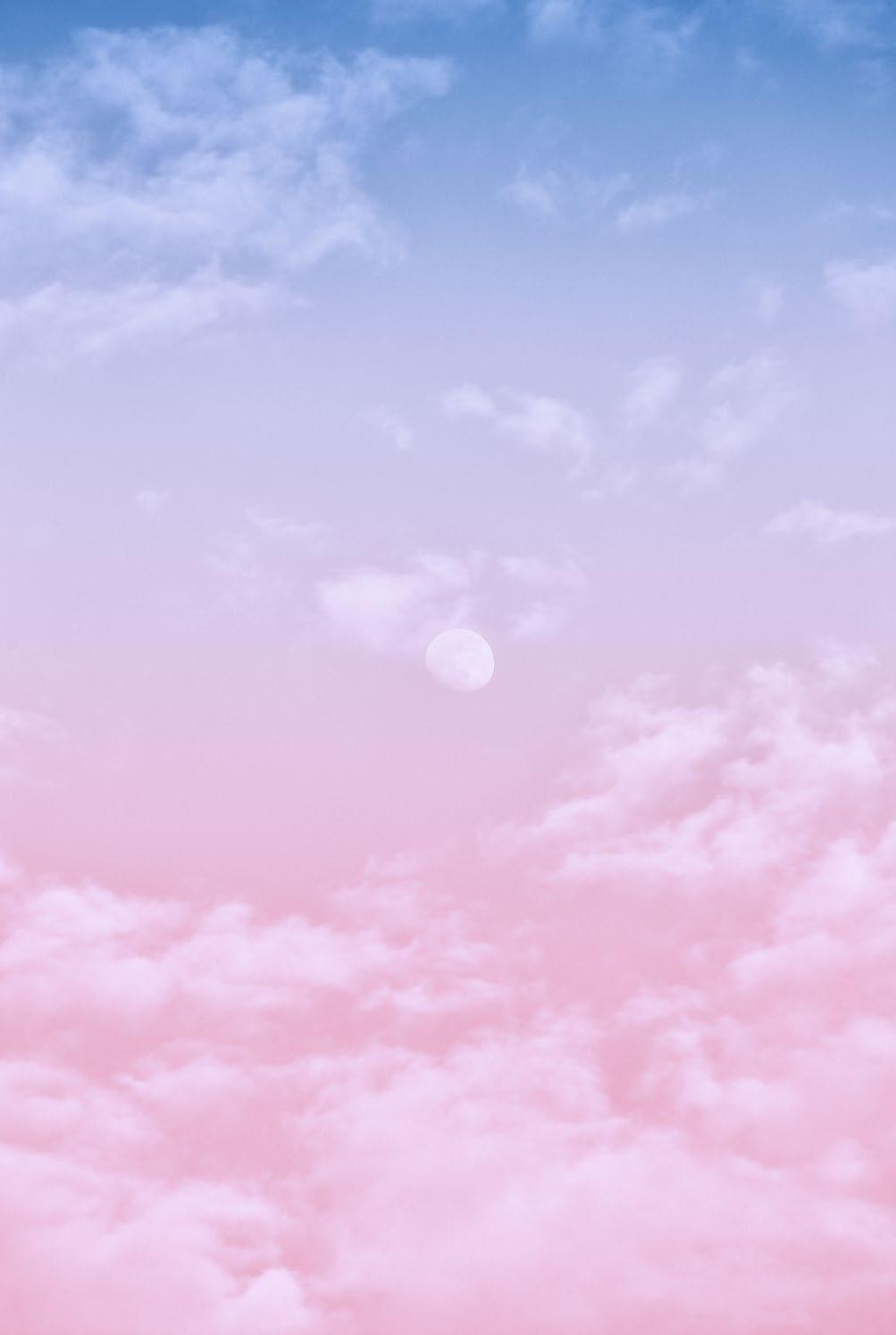
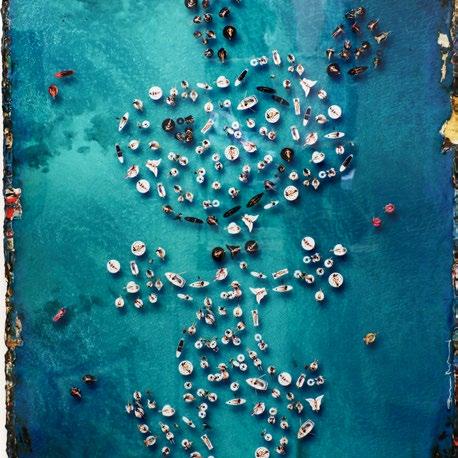
Bram Reijnders (Netherlands)
Landscapes
Oil on Canvas
The artist paints in unexpected and sometimes dangerous locations, winning him a unique reputation as an ‘extreme artist’ and adventurer.

Samuel Thomas (UK)
Landscapes
Mixed Media
Samuel Thomas captures idyllic places and sunnier visions of the world to escape the darkest days we may find ourselves in.

Mixed Media
Focusing on contemporary portraits and abstract themes, the artist utilises his skills in both graphic design and painting.
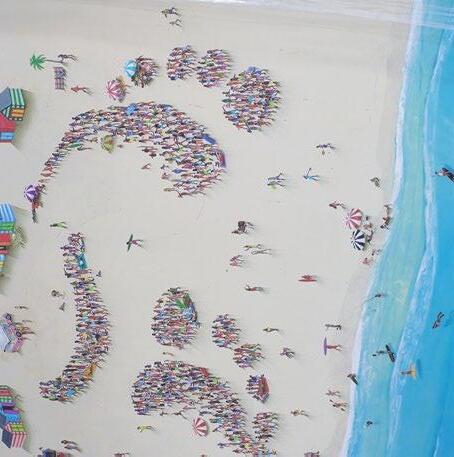
Craig Alan (California)
Figurative
Oil on Canvas
California based artist Craig Alan first recognised his creative drive when he used crayons on his parents' walls.

Scott Tetlow (UK)
Figurative Ink on Canvas
His trademark illustrative style creates a fusion between traditional oriental art and the contemporary.
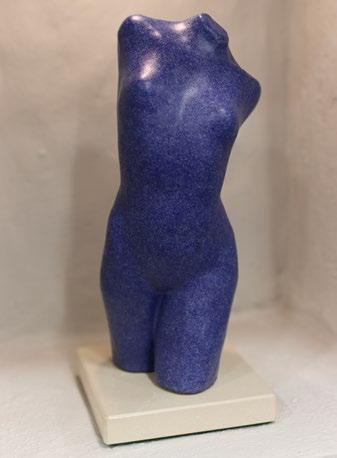
Susan Hartley (UK)
Sculpture
Stoneware
She explores shape, form and texture through her art and interprets the human form in a fragmented, twisted & arching way.

First Floor Suites, 39 Irish Town, Gibraltar +350 200 72150 info@attlev gi





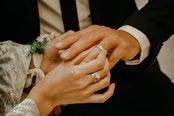


Figurative
Tony Hinchliffe strives to evoke emotion through his paintings. His artwork embodies the feeling of energy, exploration, creativity and escapism.

Figurative
Giclée on Canvas
His art is characterised by playfulness and exudes a tongue-in-cheek provocative attitude in a popinspired style.
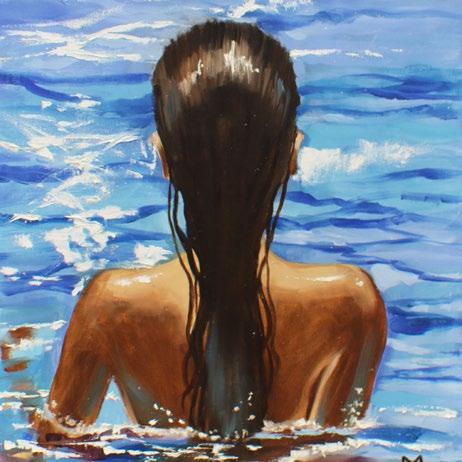
Monika Luniak has been painting for as long as she can remember. Although having attended art schools in Europe, her style is in-keeping with her own sense of self.
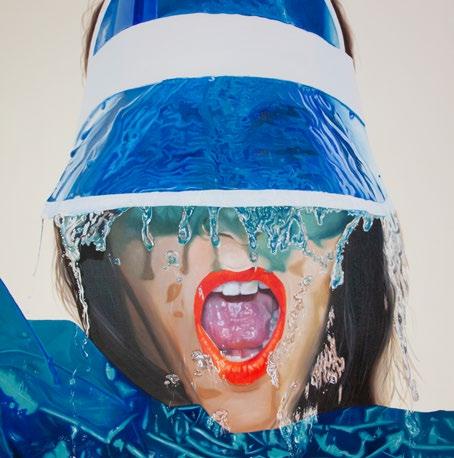
Figurative
Mixed Media
Her art consists of various art styles using different techniques, media, materials and stylistic elements. For some time now she has specialised in realism using oil paints on canvas. Often her paintings will include an element of reflection or fluid.
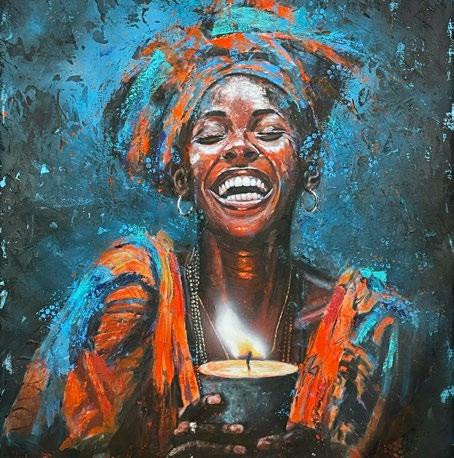
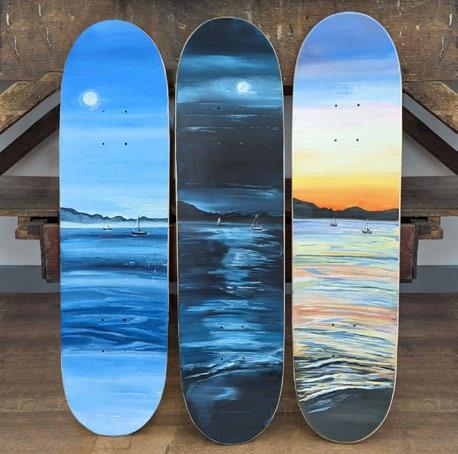
AcryliconCanvas
Also working as a surgeon, Juan Torres is a self-taught artist who focuses on three key artistic practices: the contrast between light and dark, the intensity of colour and the creation of an immersive background.
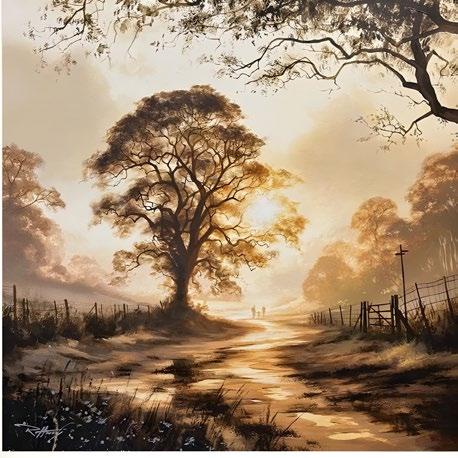
Roffway (UK)
Landscape
Oil on Canvas
After studying art and photography, the artist reflects a fusion between both disciplines in the soft focus created which meets the realism of painterly traditions.
Inspired by the wisdom of Pablo Picasso, Hammond captures moments in life that people can hold on to forever.
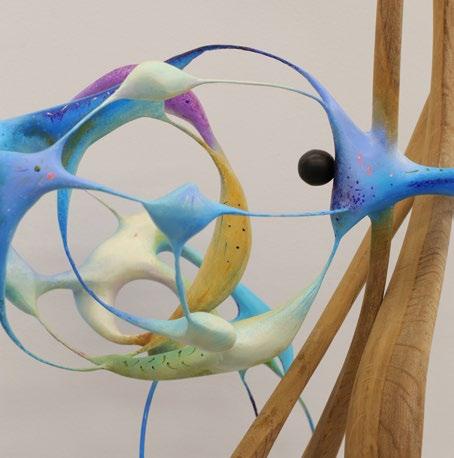
Mark Purllant (UK)
Sculpture
OilonMapleWood
Winner of the 2023 Sculpture Prize at the London Biennale, Purllant’s abstract sculptures boast an intricate weaving of materials which create circular and elongated forms creating dynamism and movement from every angle.

Dan Pearce (UK)
Figurative
Mixed Media
Dan Pearce combines graffiti, traditional painting, collage and textured resin in his contemporary street art pieces which carry subversive comments towards contemporary culture.

Fabian Perez (Argentina)
Figurative Oil on Canvas
Influenced by his travels to Japan, Fabian Perez aims to combine figurative & abstract styles, likening painting to music.
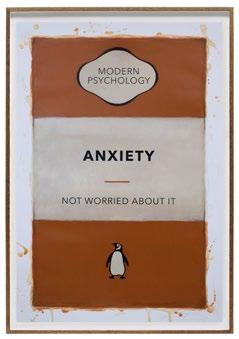
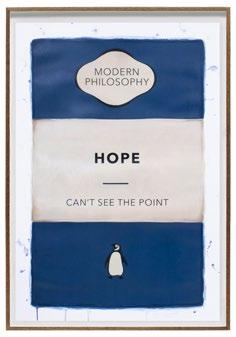
The Connor Brothers (UK)
Framed Books
UniqueonPaper
Re-imagining Pelican books, the artists’ present an unfiltered version of witty vintage book covers to decorate one’s walls in a tongue-in-cheek manner.
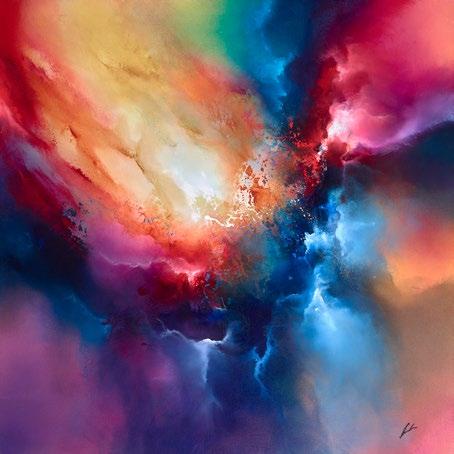
Simon Kenny (Ireland)
Abstract
Mixed Media
Inspired by the huge expanse of space and celestial skies, Kenny displays a luminous world of vibrant, bright colours filled with dynamic motion in his abstract compositions.
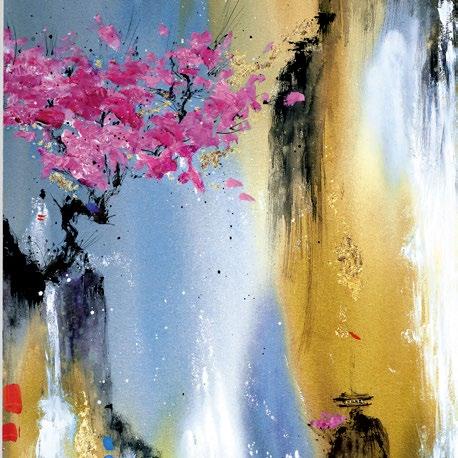
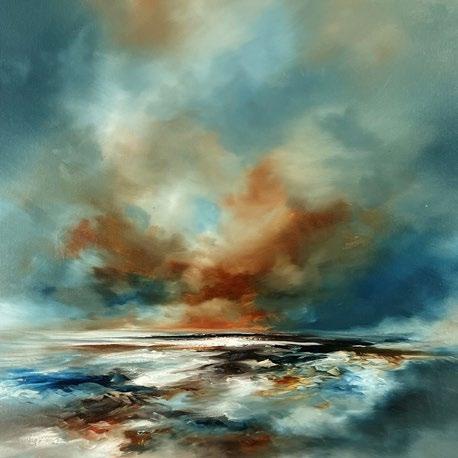
Fusing the East and West, Akiyama displays an expanse of fluid brushstrokes to create ‘chi-sho’ – a source of joy for the viewer in her relaxed impressionistic style, full of life and energy.

By expressing the power of light interacting with water, Johnson shows an abstract, surreal take on the natural world.

Our art bags have been developed with first-hand knowledge in the industry and an awareness of standards needed to protect artworks and frames.
3 layers of protective material
Acid free soft lining & water resistant
No imprinting onto the artwork
Reusable with easy to use re-sealable flap
Environmentally friendly with insulation properties
See artpakk.gi for our ‘best match’ calculator
Contact (+350) 200 17788 sales@artpakk.gi artpakk.gi

Andrei Protsouk (Ukraine)
Figurative
Oil on Wood
Symbolic of freedom in American society, Protsouk displays a fragmented, cubist style to many of his artworks.
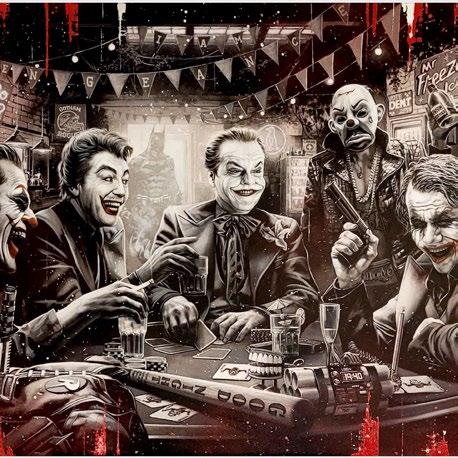
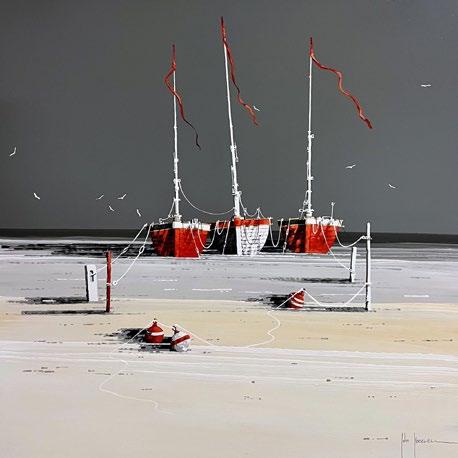
John Horsewell (UK)
Landscape
AcryliconBoard
Depicting tranquil shores and peaceful landscapes, Horsewell expresses his love for the natural world around him.

Portraits
Mixed Media
The artist showcases a portfolio of diverse works ranging from portraits to landscapes in both pencil & oil paint.
Inspired by the Baroque & Renaissance eras, Chuck creates stunning portraits influenced by his interest in high fashion.

Landscapes
Oil
Primarily focusing on urban landscapes and semiabstracted figures, Melegari displays a fascination with oil paint and its versatility.

Figurative
Mixed Media
Drawing inspiration from figurative, street art, fashion, portraiture and the abstract expressionists, Welland has a varied portfolio of bold and brightly coloured artworks to illuminate any space.
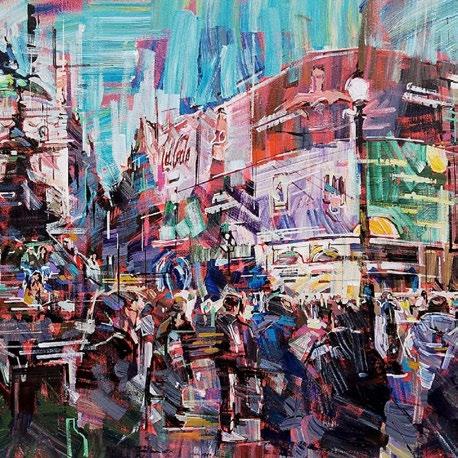
Landscapes
AcryliconCanvas
Brown’s loose brushwork takes its influence from the Impressionists and Fauvism. Mainly focusing on street scenes, Brown enjoys evoking a sense of atmosphere in his paintings.

Abstract
Mixed Media
Nadine Collado is a Gibraltar based artist who creates abstract artworks using a variety of mediums. Her vibrant diptychs are ideal works of art to decorate any interior.
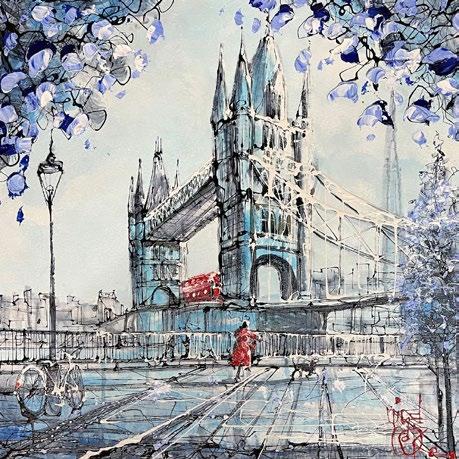
Landscapes Mixed Media
After spending many years travelling as a caricature artist, Cooke creates a highly illustrative portfolio of paintings, mainly comprising on dynamic cityscapes.

Leslie Gaduzo (Gibraltar)
Landscapes
Oil on Wood
Former architect Leslie Gaduzo focuses on the impact that human beings have on our surroundings and environment. Expressing himself through his art to create meaning and give way to independent thought, Leslie challenges the boundaries in his realistic yet abstracted compositions.
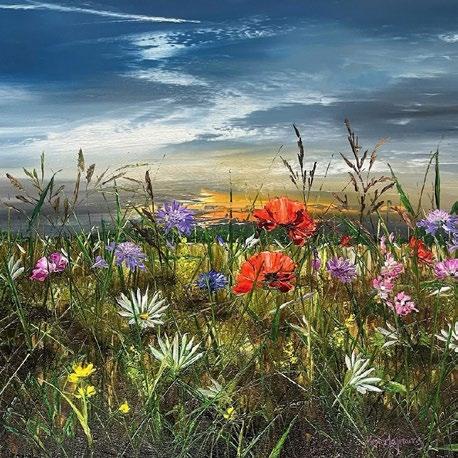
Focusing on the natural beauty of the countryside, Harris layers and blends her pigments with a palette knife to create variations in tone and texture.

Shane Dalmedo (Gibraltar)
Figurative Mixed Media
Shane Dalmedo presents a highly contemporary depiction of characters in her compositions. Steering away from normalised artistic interpretations of the human body, Dalmedo presents a unique thoughtprovoking array of artworks.

Figurative
AcryliconCanvas
Self-taught artist Rose Ann Victor began drawing and painting in 2007. Expressing herself and her interest in photography through her artworks, she creates highly intriguing and skilful compositions.
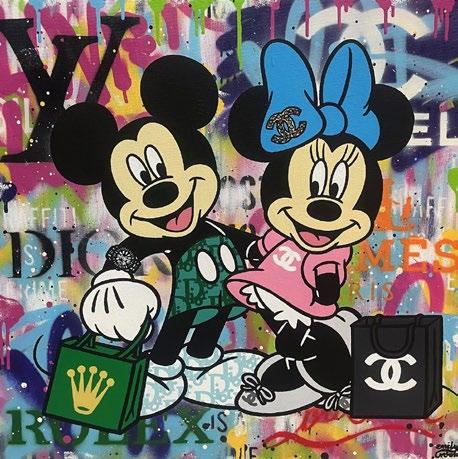
AcryliconCanvas
Influenced by pop culture, Crook’s artworks are heavily inspired by street art, fashion and Walt Disney among other cartoons.

Mark has work in commercial and private collections across the world and has exhibited locally and nationally.

Mark won the sculpture prize at the London Biennale in 2023, and his artworks are mostly large mixed media pieces in wood and oil paint. The abstract sculptures boast an intricate weaving of materials which create circular and elongated forms creating dynamism and movement from every angle.
What inspires your artwork?
People, nature, experiences… the world around us. My work is a reflection of me, it draws on many facets of my life to bring to reality a presence. I enjoy finding balance, physically and philosophically, through contrasts, tensions and harmony. I see it as a narrative of the world’s fragility and splendour.
How do you create your artworks and what is the process and medium you use?
I create through intuition, reacting to the process and materials. Drawing is still a huge part, but only in an informative role, not in a traditional working
drawing way. When I start making, I don’t know where it will take me. I don’t know how the wood will bend or carve, what fractures may happen. I don’t know what relationships with other materials may develop, or why I might try something I’ve never done before. I liken it to a ‘Lord of the Rings’ adventure!
Have you encountered difficulties when creating your artworks?
There are difficulties in everything, I tend to see them as challenges which I enjoy conquering. The wood might break or split, the form might just take ages to find that right aesthetic balance, differences not connecting well together, paint colours fighting against their position in the sculpture. The process must have difficult parts, otherwise it just doesn’t feel right. Those difficulties often lead to something new, something you wouldn’t normally have done. For example, a carving breaks whilst trying to steam bend it, actually becoming a new route that allows more exciting opportunities.
Scan here
to find out more about
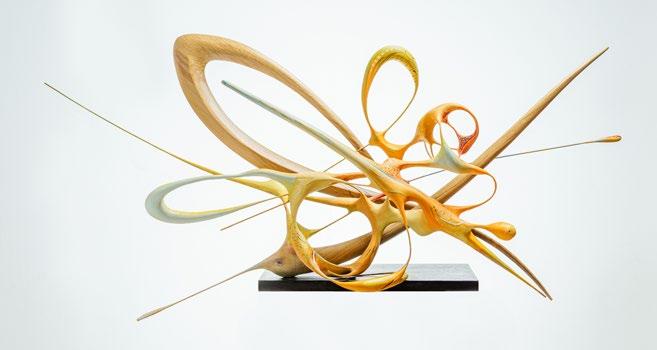
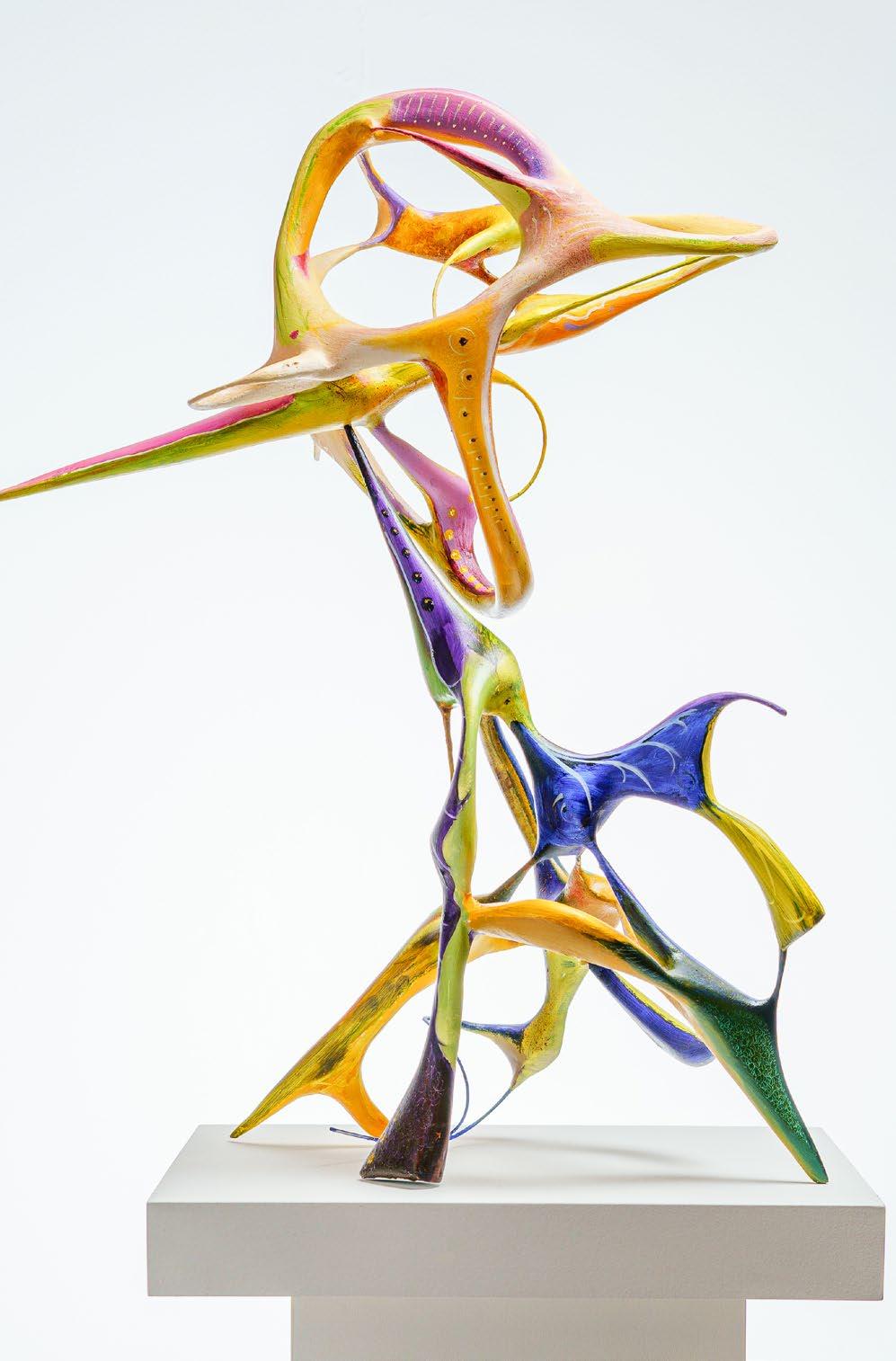
I coach judo and am constantly looking at how the body moves, how small actions can create huge responses. “ “
I love Degas, especially his pastels and was always drawn to Van Gogh. That whole period around Impressionism inspired me when growing up. “ “
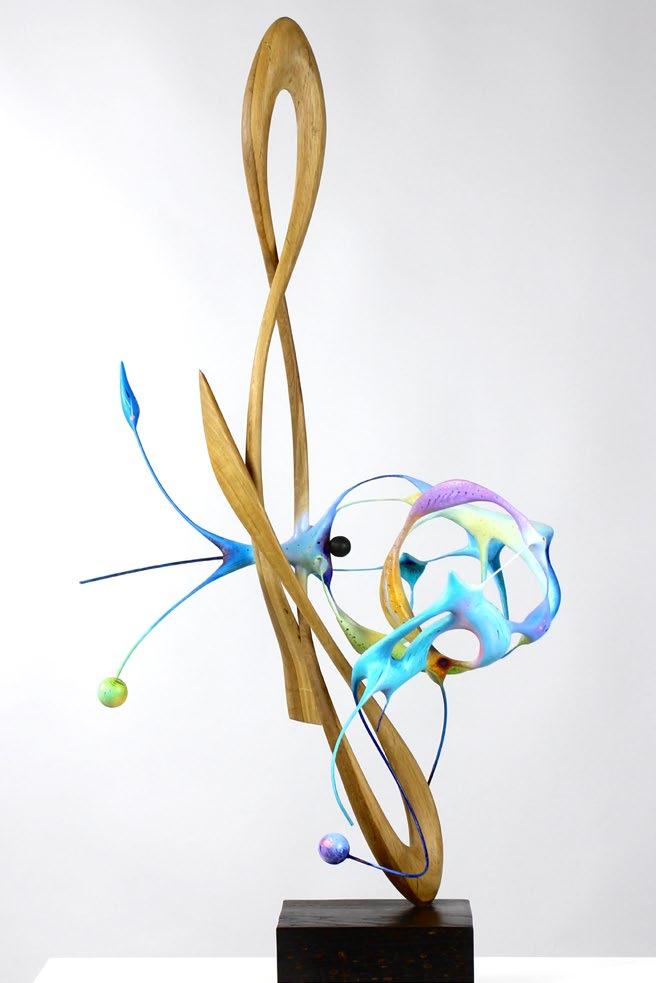
Do you intend for your artworks to be received in any particular way by the viewer and what reaction do you want to incite in the public?
There is an immediate aesthetic to my work, one that attempts to lure people in. A flow, sense of movement, but with combined energy and tranquillity. The materials and forms often stimulate questions about how it is made. Quality in craftsmanship and artistic skills are important to me, but there is also a deeper philosophical laying of questions for those who want to delve deeper. That is individual. I heard a recent interview with Bernie Taupin who said of his lyrics that often others’ interpretation of the meanings are far better than his own. Some of the personal reactions to my work that have been disclosed to me, have really amazed me and stopped me in my tracks, and not ones that I could
ever have envisaged. The problem is you need to give yourself over to that possibility, and in today’s world we are bombarded by images that perhaps mean we become less available to allowing such emotional stimulation.
Who are your biggest artistic influences?
I love Degas, especially his pastels and was always drawn to Van Gogh. That whole period around Impressionism inspired me when growing up. I really like Gabo and when I first saw Frank Stella’s sculptures, I found a real resonance. More recently I have been looking at Gustav Klimt and how he combined various genres, and I have to say I rather like Maggie Hambling’s ‘way’. I also have an interest in Japanese art and craft, the sheer quality of craftsmanship is unrivalled.
What motivates you to create art?
Living! There is just something in me that requires me to do it!
How has your style changed over time?
It is a constant evolution, otherwise for me it’s not worth doing. I cannot do the same thing again and again as I don’t see the point. I guess many will see that there was a major change in my work about 6 years ago, from figurative to abstraction. However, I have come to realise that my abstraction is very much an expression of the figure, perhaps more holistically, an essence of…… and maybe even simply self-portraits. I coach judo and am constantly looking at how the body moves, how small actions can create huge responses. That process is certainly represented in my abstraction.
What do you think of the Art Space gallery and having your limited editions up on our walls?
As yet I haven’t had the chance to visit, but from the various online sources I can see it is a fantastic space to present work. It is clear that there is an interest in art within the community and great to see how the gallery is developing a major role in this. I have previously sold some notable pieces in Spain and there seems to be a real interest in my work, so the Art Space Gallery feels like a great opportunity to be involved in.
If you could describe your art in 3 words, what would you say? Unique, creative and innovative.
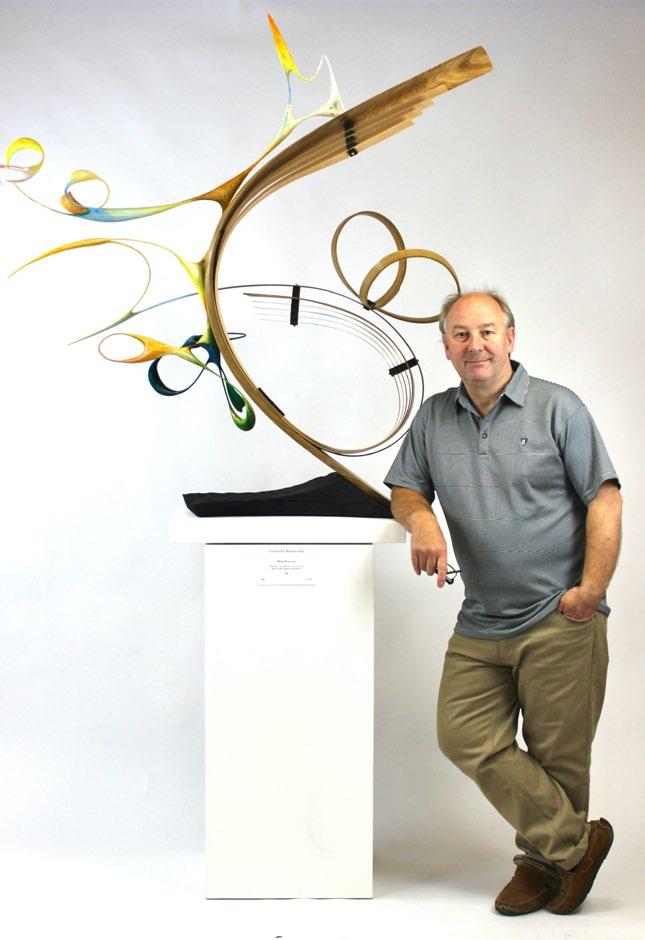

In today’s world we are bombarded by images that perhaps mean we become less available to allowing such emotional stimulation. “ “
Art and music are two forms of creative expression that have been intertwined throughout history, each influencing the other in profound ways. While art is primarily visual and tangible, music is an auditory experience that can evoke powerful emotions.
Despite their differences in medium, both art and music share a deep connection in their ability to communicate, inspire, and resonate with individuals on a fundamental level.
Music, as an art form, is a universal language that speaks directly to our psyche. Having power to arouse a wide range of feelings, from joy and excitement to sadness and nostalgia, often without the need for words. Through melody, rhythm, harmony, and timbre, music can convey complex emotions and narratives, creating a unique emotional experience for each listener.
On a biological level, music has been shown to have a profound impact on the brain and body. Research has revealed that listening to music can stimulate the release of neurotransmitters such as dopamine, which is associated with pleasure and reward. The neurological response can explain why music can elevate our mood, reduce stress, and enhance our overall well-being.
Moreover, studies have demonstrated that music can affect various physiological functions, such as heart rate, blood pressure, and respiration. For example, listening to calming music has been found to lower heart rate and blood pressure, inducing a state of relaxation and tranquillity. In contrast, upbeat and energetic music can increase heart rate and
boost energy levels, making it ideal for physical activities or motivation.
The link between art and music becomes even more apparent when considering the visual arts, such as painting, sculpture, and photography. Artists often draw inspiration from music to create visual representations of sound, rhythm, and emotion. Equally, musicians may find inspiration in visual art to compose music that captures the essence of a painting or sculpture. Leonardo da Vinci, aware of the deeper relationship between art and music said, ‘Painting is poetry that is seen rather than felt, and poetry is painting that is felt rather than seen.’
The link between art and music is a powerful and multifaceted connection that enriches our lives in profound ways. “ “
The synergy between art and music is perhaps most evident in multimedia art forms, where visual and auditory elements are combined to create immersive and multisensory experiences. Installations, performances, and exhibitions that integrate art
and music can engage audiences on multiple levels, stimulating their senses and emotions in a holistic way.
Furthermore, the act of creating art or making music can have therapeutic benefits for individuals, promoting selfexpression, mindfulness, and emotional release. Engaging in artistic activities has been shown to reduce anxiety, improve mood, and enhance cognitive function, providing a creative outlet for processing thoughts and feelings.
In conclusion, the link between art and music is a powerful and multifaceted connection that enriches our lives in profound ways. Whether through the emotional depth of a musical composition, the visual beauty of a painting, or the fusion of art and music in multimedia experiences, these forms of creative expression can inspire, transform, and connect us on a deeply human level. By embracing the synergy between art and music, we can tap into our creativity, expand our perception, and cultivate a greater appreciation for the beauty and complexity of the world around us.
Featured for the Art Fair advert, playing live in the Art Space Gallery, multi-genre violinist L3V performed a solo among the gallery’s fantastic pieces of art. As part of Art Space’s initiative, this was one of the many multi-disciplinary collaborations that the gallery is keen to nurture and promote.
Tell me a bit about your musical background and how you ended up playing the violin:
I am originally from Slovakia and have been playing the violin since the age of five. I was eventually accepted into a university in Vienna from the age of eleven to twenty-five. From there it all started. My musical background is classical music, but I have also explored other genres, particularly electronic music. Now I am developing my own electronic music and am learning how to DJ.
Can you describe the process of choosing the pieces you performed and how you think they complemented the setting?
I chose the pieces that suited my violin, I also considered the setting of the gallery. I saw the gallery had a lot of different colours, so I wanted to choose pieces that were just as colourful. I decided to choose emotional pieces to reflect the emotion of the pieces of the gallery. The violin is a very dramatic instrument, and I can always bring out the emotion that I am trying to convey.
What emotions and feelings were you trying to convey and how does that connect with your audience in such an intimate setting?
For me it’s more about the connection with people, and I have found after many years of performing, the easiest way to connect with people is through emotions. I always try to make those listening feel good and connected to themselves. During my performance in the art gallery, I played positive, energetic, and uplifting pieces. It was the feeling that I was aiming for.
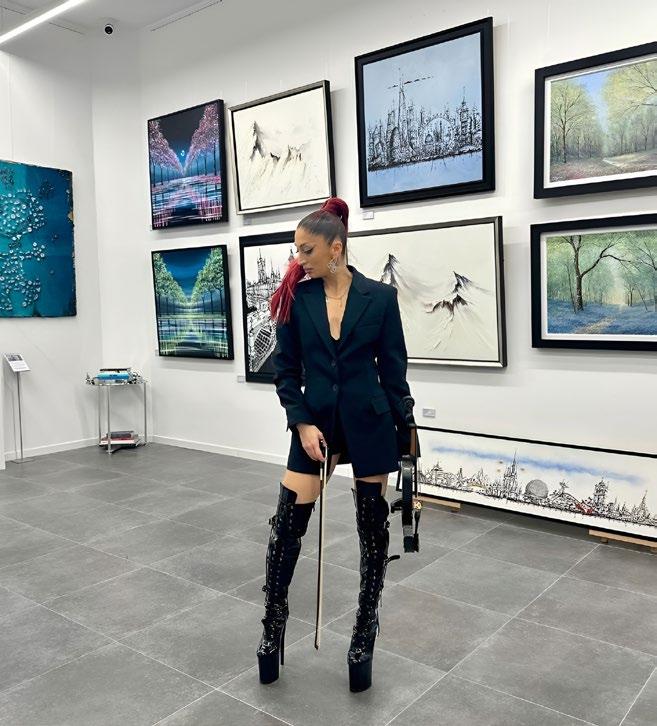
I think the pieces that I chose had to be beautiful, because in an art gallery I am surrounded by beauty.
Do you see any correlation between music and painting?
Art is an expression of emotions and self. Music and art are very similar in that way. With an instrument you play the music with sound, harmony, and rhythm. With art you express your emotions by using material forms. It is still the same process of creating, but just using different mediums. Reflecting the times that we are living in is also another aspect that both art and music have in common.
Based on your relationship with music, how do you think music and art have an impact on an individual?
It is a positive impact. It allows people to embrace their feelings, embrace what they think and express the things that are happening around them. You can express that moment that you will never relive again. Music gives hope to people, I think in these times this is the most impactful thing you can give to someone, considering how much we need it.
What do you think about art galleries displaying other forms of art such as music?
Music and art go really well together. I think it’s beautiful and it should be implemented more.
Do you think being in a room full of other artforms can inspire improvisation?
When you’re in the art gallery, you feel the expression from the pieces, so you get inspired from it. I absolutely played differently in the art gallery than I would have played at home.
Do you make your own music and where can we hear it?
I am preparing my new stuff that I’m going to release. I’m starting to be a DJ where I add my violin to my tracks. I’ve had the opportunity to play on big stages with famous DJs in drum and base from the UK and Spain. I’m really excited that people like my violin because it’s a rave culture and when I arrive with my violin no one knows what to expect. And their response is always super positive.
By Petra de Letras

The creative and imaginative power that these young people have is incredible, and the work is amazing. “ “
With the landscape of art and culture continually evolving, Gibraltarian artist and President of the Fine Arts Association Gino Sanguinetti says that Gibraltar could become a vibrant cultural hub, potentially attracting big names to establish galleries on the Rock.
Gino Sanguinetti was born in Gibraltar in 1957 and explains that he started painting at the age of four and has not stopped since. “My family were all very cultured, not only in terms of fine arts but also music, and they recognised that I was talented and fully supported my artistic endeavours,” he comments. Educated at the Boys Gibraltar Grammar School, Gino went on to study Modern Languages at Southampton University where he achieved a BA (Hons) Degree. Fluent in English, Spanish, Italian and French, Gino went to live and paint in Paris from 1983 until 1996, exhibiting with the ‘Galerie Alain Selmersheim’.
Paris was the hub of the art world, or at least as Gino comments “the thermometer to Europe”, but after thirteen years away he came back to Gibraltar. “They were just starting the Fine Arts Association and I began advising them, so I stayed another month and that turned into years,” he says. In 2000 with the development of Casemates, the Fine Arts Gallery opened and from 2004-2012 Gino was President of the Association.
With so many exhibitions taking place at the gallery, Gino says he felt as if he had created a manageable monster. “I knew we had to go professional and this is when Gibraltar Cultural Services launched, and I became a part of that company and a

civil servant, and although my heart is with the art – I am a bit like an umpire in tennis, I can see both sides.”
Developing his artistic style over the years, Gino tells me that he paints abstract art with figurative elements. “What an artist should do is to ‘feed the beast’ by being curious and being as sincere in their work as possible,” he states. Agreeing that the art world has changed because of the internet, Gino thinks that artists can get lost in other people’s work by ‘doomscrolling’. “Once you know how the ingredients work, it is up to you to find your own style.”
“I am a glutton in taking in cultural information, not only pictorial but

musical and literary as well because it is all connected, and ultimately it is about energy and you have to go inside your body to find your inspiration”, he says pointing to his chest. “I hope I am a better painter than I was forty years ago, but it is like any great artist - they develop over the years.”
We meet to talk at the Gustavo Bacarisas Gallery, also situated in Casemates, which opened in 2000 as part of the Cultural Services project. “The gallery was refurbished twenty years ago and it is a wonderful space,” Gino comments. Gino goes on to state that they have been very lucky with the support of both the GSD and GSLP governments.
“Look at those walls,” he says, “these are not anonymous walls, these are a memory - you are in a place of history.”
There is no doubt that Gibraltar invests in art education, with schools such as Westside and Bayside exhibiting the work of students in the Fine Arts Gallery every year. “The creative and

imaginative power that these young people have is incredible, and the work is amazing,” Gino concurs. “Gibraltarians are very different, and if you look at their art they all have their own voice, and that is very important and mature.”
Gino is embedded in the arts and cultural scene in Gibraltar and has watched as new galleries are opening up here. “The more the merrier I say and if we can make Gibraltar a hub for art and get away from the cliché of buying cigarettes in Main Street, so much the better.”
With an eye to the future of art in Gibraltar, Gino has an idea that would see the Rock become a hub for art tourists. “There is a Louvre in Abu Dhabi, there is a Pompidou in Malaga, so why can’t we have a Tate in Gibraltar?” he asks. Maybe not on the same scale as the Guggenheim in Bilbao, but it makes sense. Who went to Bilbao before the Guggenheim?”
With local artists such as Christian Hook and Monica Popham, whose art is so greatly supported by the Art space Gallery, their work is reaching wider audiences by winning Sky Arts Portrait and Landscape Artist of the year. They are helping to put Gibraltar on the global art map. “Funnily enough,” Gino says, “when Monica was here the other day, a light bulb went off in my head, just like my idea about the Tate Gibraltar.”
“Why not have Sky come to film either Portrait or Landscape Artist of the Year in Gibraltar?”
As far as Gino is concerned, the future for art and culture in Gibraltar is very bright and it will continue to be so. “One of the benefits is that a paper and pen or pencil is not expensive, and a good sketch doesn't cost a lot

to create,” he explains. “The advantage of the Fine Arts is that we create things that stay - other things are ephemeral - such as music, theatre or dance, and although you may film performances, if this gallery closes and we come back in 2000 years’ time – the artworks will still be hanging here, which is crucial for Gibraltar’s identity.”
By Jo Ward
Why not have Sky come to film either Portrait or Landscape Artist of the Year in Gibraltar? “ “ the end
At the Art Space gallery we have exhibited various portraits by Anna Briukhovetska since we opened our gallery doors. Focusing on bold colour tones and stark representations of female figures on canvas, Anna’s artworks immediately capture the viewer’s gaze upon entering the gallery.
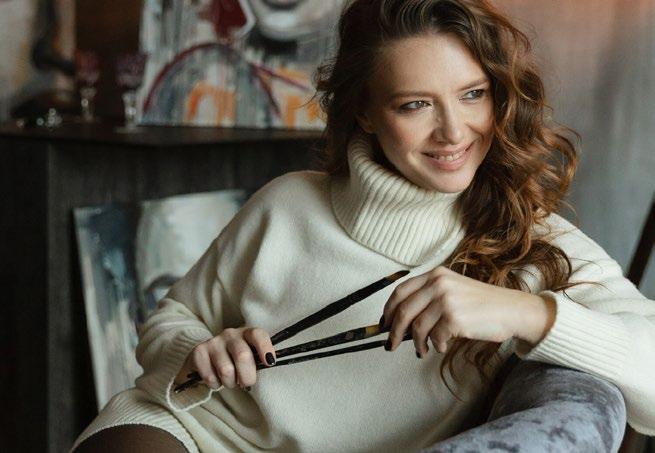
Ukrainian artist Anna Briukhovetska delved into the world of art and creativity after studying Law at university. Pursuing her interest in classical drawing, painting and interior design, the artist and her family moved to Odessa due to the disruption with the Ukrainian war.
Despite undergoing a tumultuous life change, this gave her the impetus required to fully delve into her creative skillset and translate her emotions into a visual creation overwhelmed with colour and contrasts.
Anna aims to showcase the beauty of life and nature through her work. Her canvases mainly comprise of scenes depicting women with the notion that behind their external beauty there is always a storm of feelings, a character, a story that makes each portrait unique.
Scan here
find
It has always been my aspiration to discover myself in creativity. “ “
INSPIRING LOVE
by Anna Briukhovetska
ORIGINAL
80 X 80 cm
A personal favourite which has graced our gallery walls in the artist’s own selfportrait titled Inspiring Love. Featuring a three-quarter close-up of Anna herself, the viewer instantly catches her gaze as if caught off guard. In monochromatic tones of grey and blue, Anna’s femininity shines through the canvas as demonstrated by the undulating contours of her lips, cheeks and wavy locks of hair. Her beauty is captured in her signature Pop Art style, and pays homage to herself as not just the creator, but also as the muse.
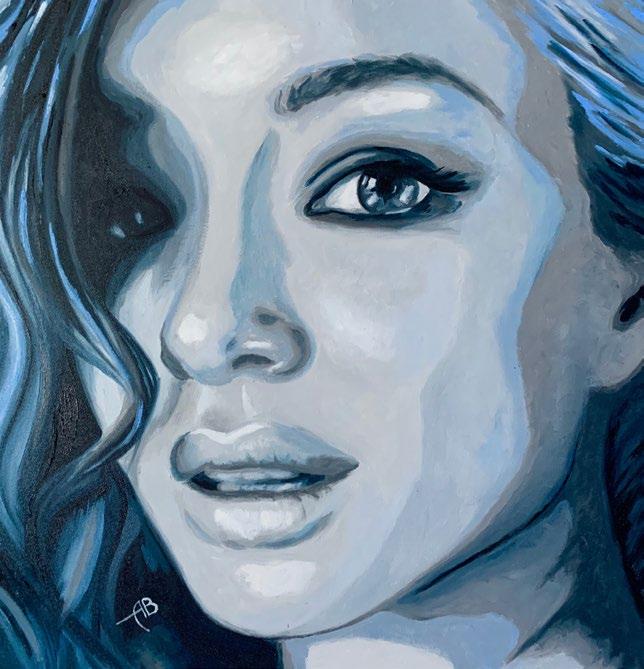
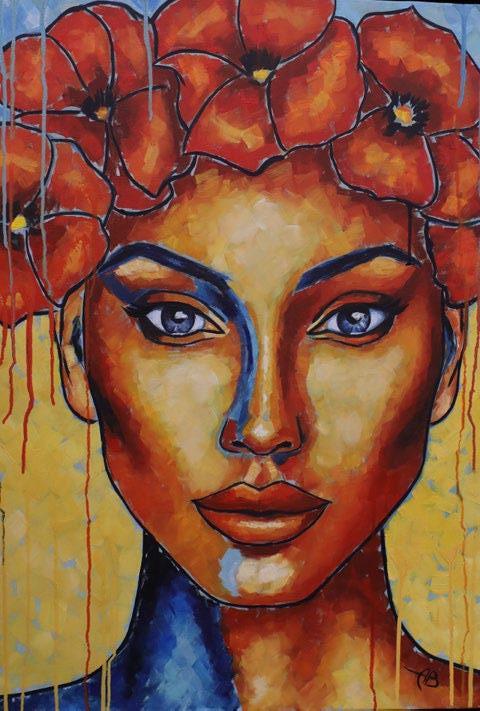
UNBREAKABLE by Anna
Briukhovetska
ORIGINAL
100 X 80 cm
Unbreakable is a bold piece by Anna Briukhovetska, not only strong in title, but also in image. Featuring a prominent female figure gazing directly at the viewer, the artist goes back to basics and plays with the primary colour wheel featuring blue, red and yellow throughout the canvas. With defined cheekbones, an unwavering stare and dramatic jaw line, Anna subtly references strong masculine features which are juxtaposed with the figure’s floral headdress, emblematic of femininity. Indeed, one is reminded of the renowned paintings by Frida Kahlo, in which the feminist artist also portrayed herself in a similar style and is considered an advocate for women’s rights and freedom of sexuality. Negating gender stereotypes, both artists allude to female strength and empowerment in their artworks.
Despite being largely excluded from the mainstream narrative throughout history, women have played a fundamental role in the art world for many eras and within many cultures.
In the Renaissance, women were allowed to participate in the arts, however often limited to less prestigious mediums, and rarely credited for their contributions. Despite this, today there has been a growing awareness of the need for gender equality in the art world, where many organisations are working to promote female artists and provide opportunities for women to thrive in the creative field.
The rise of the romantic movement, during the 19th century had a substantial impact on women creatives. Emphasizing emotion, imagination,

and individualism, this era fostered popularity among female artists, allowing them to express their feelings and experiences, exploring a softer approach in their works. In the 20th century, women continued to make their mark among creatives, female art movements aimed to challenge patriarchal norms and promote the works of women artists, like Frida Kahlo, Georgia O’Keeffe, and Louise Bourgeois who are widely recognised and celebrated.
With a renewed sense of confidence, women choose to use their platform to address issues both personal and social. Best known for her uncompromising and brilliantly coloured self-portraits that deal with such themes as identity, the human body and death, Frida Kahlo, revolutionized the art world with her raw emotional expression, bold symbolism, and unapologetic self-portraits. Her unique style blended traditional Mexican folk art with surrealism, creating a powerful visual language that continues to inspire artists today. Kahlo painted images that spoke to the realities of being a woman. She depicted childbirth, breastfeeding, abortion, and death while also critiquing society. Rebellious and shamelessly authentic, Frida Kahlo frequently challenged traditional gender roles, often dressing in male clothing, sporting a unibrow and moustache, later to be interpreted as symbols of defiance against traditional beauty standards and gender norms. By
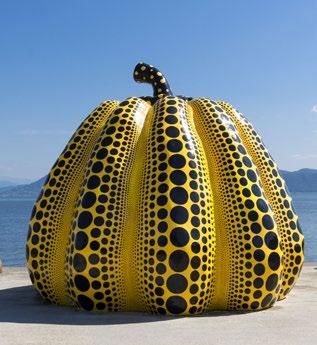
proudly displaying these features in her self-portraits, Kahlo challenged societal expectations of femininity and beauty, asserting her unique identity, and embracing her natural appearance, inspiring others to embrace their own authenticity.
In 1932, just twelve years after women were granted the right to vote in the United States, Frida Kahlo was bringing women’s issues to the forefront of the collective consciousness. The perspective of female artists brings a crucial balance to societal narratives, shedding light on diverse experiences, challenging stereotypes, and amplifying marginalized voices. Female artists offer a nuanced lens through which to view the world.
Now, in the dynamic world of contemporary art, the past decade has brought to the forefront a remarkable group of female painters and sculptors whose work is captivating audiences worldwide. Among the top talents making waves are Yayoi Kusama (Japan) - known for her immersive installations and polka-dot motifs; Jenny Saville (UK) - celebrated for her powerful and visceral depictions of the human body; Cindy Sherman (USA) - renowned for her conceptual self-portraits exploring femininity and identity; Kiki Smith (USA) - renowned for her diverse body of work exploring themes of feminism, mortality, and spirituality; and Simone Leigh (USA) - recognised for her powerful and evocative sculptures addressing themes of race, gender, and history. These visionary artists are reshaping the art landscape with their diverse perspectives, pushing boundaries and inspiring dialogue through their compelling creations.
Art promotes cultural appreciation, empathy, and open-mindedness, helping develop a broader perspective of the world. Which is why, it is so important to
expose art and creativity to early years. Studies have shown that engaging in creative activities such as drawing, painting, singing, and dancing can have a significant impact on a child’s cognitive, social, and emotional development. Early childhood, (the period from birth to age eight) is a critical stage in brain development, the experiences a child has during this time can have a profound and lasting impact on their future success in life.
Art is a platform for children to unleash their boundless creativity and imagination where kids can express themselves freely in the practice of exploring different concepts, and perspectives. Exposing children to different artforms is essential for a young mind’s holistic development. Engaging with art nurtures imagination, critical thinking, and problem-solving skills, encouraging self-expression, boosting confidence, and cultivating emotional intelligence. When children create art, they develop a sense of achievement and pride in their creations, providing a safe space for self-expression without fear of
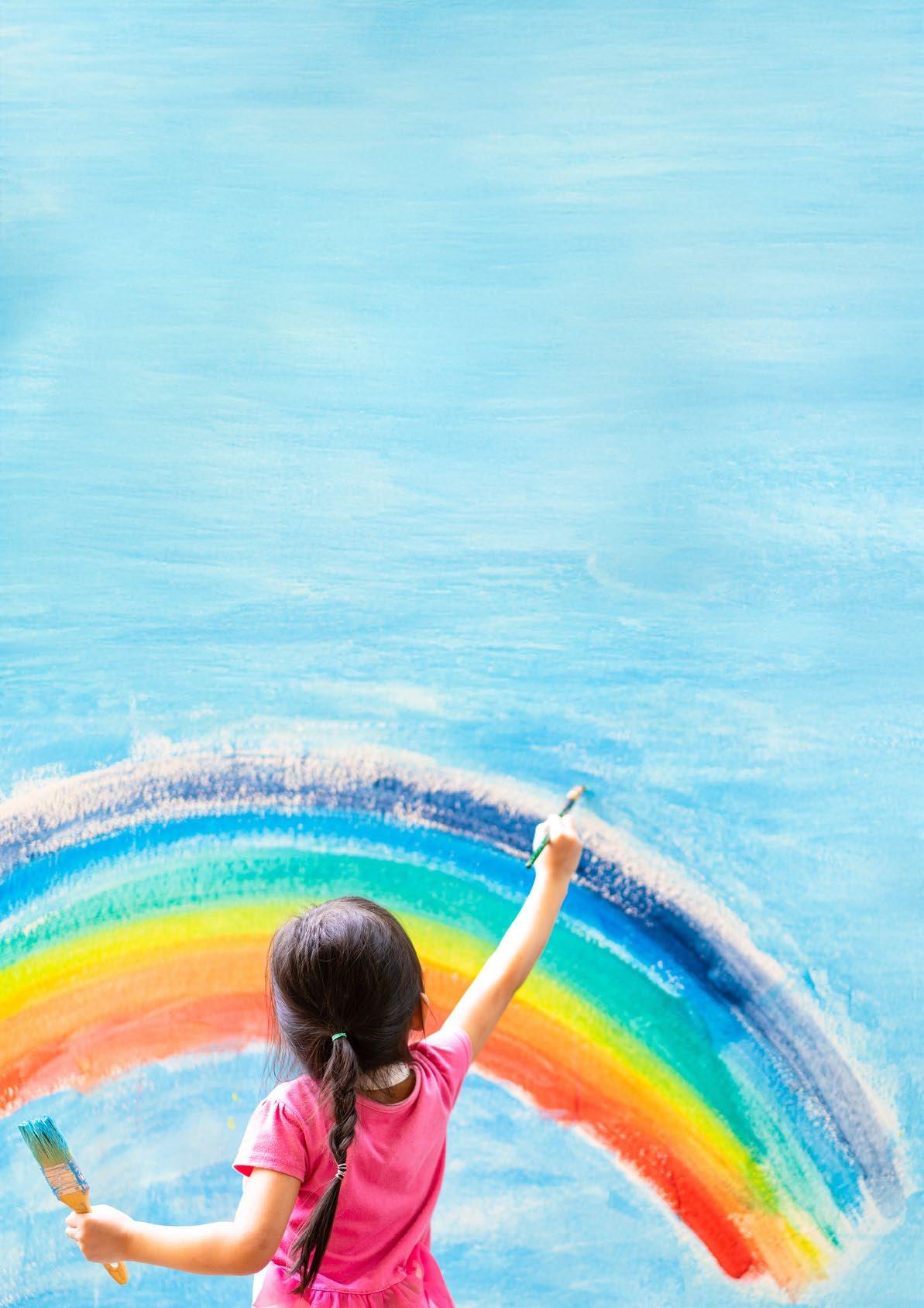
judgement, helping build their selfesteem and encouraging them to take risks and try new things.
Therapeutic in helping children to process difficult emotions and experiences, art serves as a powerful tool to express feelings and thoughts in a healthy and constructive way, providing an outlet for young minds to channel their internal world, whether it’s joy, sadness, anger, or confusion.
Women in the art world bring diverse perspectives, challenge norms, and inspire change, enriching culture and society. Exposing children to art undeniably nurtures creativity, empathy, and critical thinking, cultivating holistic development and wellbeing. Both empowering individuals to express themselves and navigate challenges with resilience while contributing meaningfully to a more inclusive and vibrant world. Just as the beautiful words of Maya Angelou reflect, “A bird doesn’t sing because it has an answer, it sings because it has a song.”
By Petra de Letras
A bird doesn’t sing because it has an answer, it sings because it has a song. “ “
Maya Angelou

I instantly fell in love with painting as a child, the perfect opportunity to let my imagination run free, I was particularly drawn towards painting scenes where I wanted to be mostplaces where I could escape and put myself within that picture as it slowly came to life in front of me.
I use a similar process with my imagination today, especially in my seascape paintings. There is something quite freeing about painting a big seascape, those infinite blue summer skies, so full of mystery and promise, a little artistic license here and there to depict a mood, a subtle suggestion of breaking waves in the middle ground can instantly pull the piece together. A big expanse of sand seamlessly joining the ocean with such understated enthusiasm, like two soul mates meeting for the first time.
The occasional patches of shadow cast by those larger than life cumulus clouds, happy clouds, all passing through like the perfect dream. My figurative career technically started back in secondary school, at the age of about twelve. I noticed an energy change amongst my class mates and with it a growing demand. It would have been an understatement to say they were showing a little interest in the shopping catalogues - the lingerie section in particular. I saw a gap in the

market, created a loose business plan and got to work.
I started making pencil drawings of these beautiful people, selling sketches as fast as I could create them, very quickly word got out, demand outstripped supply - it was all going rather well, I even sold a pencil drawing of a male model to the music teacher.
Unfortunately the powers that be decided that my profiting from such artwork was frowned upon and I had to put my plans on hold for a while. I look back fondly on this period of my career that I like to refer to as ‘The gold rush’.
Looking back on this loosely held together business plan I can now see that the fundamental element was 'timing'. These complications bought a premature downfall to my figurative career... at least for a few years anyway. Fast forward to the present day and I am doing almost exactly the same thing.
My process is constantly evolving, I rarely stick with exactly the same approach to my painting, even if it is working. I think it is so important to continue experimenting with new techniques and ideas, for me this is fundamental in my growth as an artist.
One thing that mostly remains the same in my oil painting is the medium I use - a fast drying medium which helps me maintain a momentum. I prefer not to wait too long for layers to dry, so this medium is fundamental to the expressive way I like to work.
My goal in creating art is simpleto do the best job I possibly can, particularly concentrating on creating a mood and intimacy within the moment I am describing. I want the viewer to be intrigued by what I have painted. I deliberately leave certain areas of my paintings loose, suggestive and abstracted, this helps me control

how the viewers eyes move around the picture and adds an element of working out for the viewer.
Originally I trained as an illustrator making my work extremely detailed early on in my career. A few years after graduation I came across the work of Edward Seago, I instantly became a fan - so loose and expressive, I loved it! I made it my mission to create a similar sense of expression yet at the same time maintain areas of detail where I wanted to create a focal point - for a while I consciously worked fast using very large brushes so that I wouldn’t be tempted to fuss with unnecessary detail or over describe something too early on. Once my initial blocking in had been done and I had worked out my tonal values the light element of the piece would often appear with little effort - I avoid using neat white
Creativity is merely an expression of how one feels on a given day, so in theory, you will never get it wrong - just gently consider your expectations, maybe give yourself a pat on the back because you stepped up to the plate and had a go. “ “
because I personally think a light colour highlight that compliments the value of the colour next to it is far more effective.
My favourite gallery/museum is the Ashmolean in Oxford. The Ashmolean is a superb place to visit, exhibiting some really significant pieces of art. I often visit Oxford, arriving very early, especially in the summer. I walk the couple of miles across port meadow following the river as it meanders into the city centre - I love those starts to the weekend - relaxed, positive vibes that people have on a sunny Saturday morning. I usually wander round or sit in cafés making sketches of people going about their daily business, gauging how sensitive they are to their environment and making up stories about what may be going on in their lives. I find this direct observation work crucial to understanding my subject, it also helps keep my mark-making lively and expressive.
There is rarely a time where I am not thinking about my painting - even when I fly my paramotor at several hundred feet I am considering the landscape and the challenges of painting such a scene, a project that is already underway.
By Tony Hinchliffe

Samuel
Thomas has uplifted every gallerygoer that has walked in through
the doors of the Art Space Gallery. With his detailed and extravagantly textured landscapes which immerse the viewer, a unifying theme that runs throughout his paintings is that of escapism.
He captures idyllic places and sunnier visions of the world to escape the darkest days we may find ourselves in. The following interview truly captures the essence of Samuel’s artistic goals and dreams, as he makes us privy to his creative thoughts and stylistic process. Searching for art and inspiration outside of the traditional confines of a gallery or museum, the artist reveals a distinctive search for innovation, focusing on the external world and the very best that nature has to offer.
What inspires your artwork?
There is so much beauty and wonder in the natural world, this is what inspires me to paint my landscape paintings of the woodland and the coast. In my paintings, I am always highlighting the optimistic elements that we feel when we are immersed in nature itself. It’s all about capturing that human experience of being in nature, and how that makes us feel uplifted, rejuvenated and revitalised.
What is the process & medium you use to create your art?
I firstly take photographs out in nature, then back in the studio I create sketches and transfer the sketches onto canvas. I then start using block
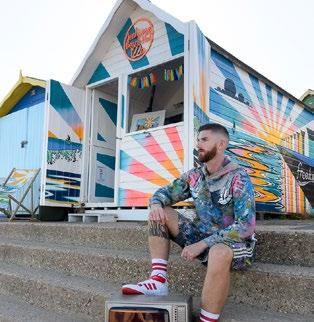
colours using acrylic paint and I then build up the canvas gradually in a series of different layers and tones.
Have you encountered difficulties when creating your artworks?
As artists, we are always trying to create something we see in our minds. Sometimes what we create on the canvas isn’t quite what we embarked on. However, we also discover other elements through the creative process. There is always room for deviation from the original plan. That’s what makes creativity so wild and free and expressive.
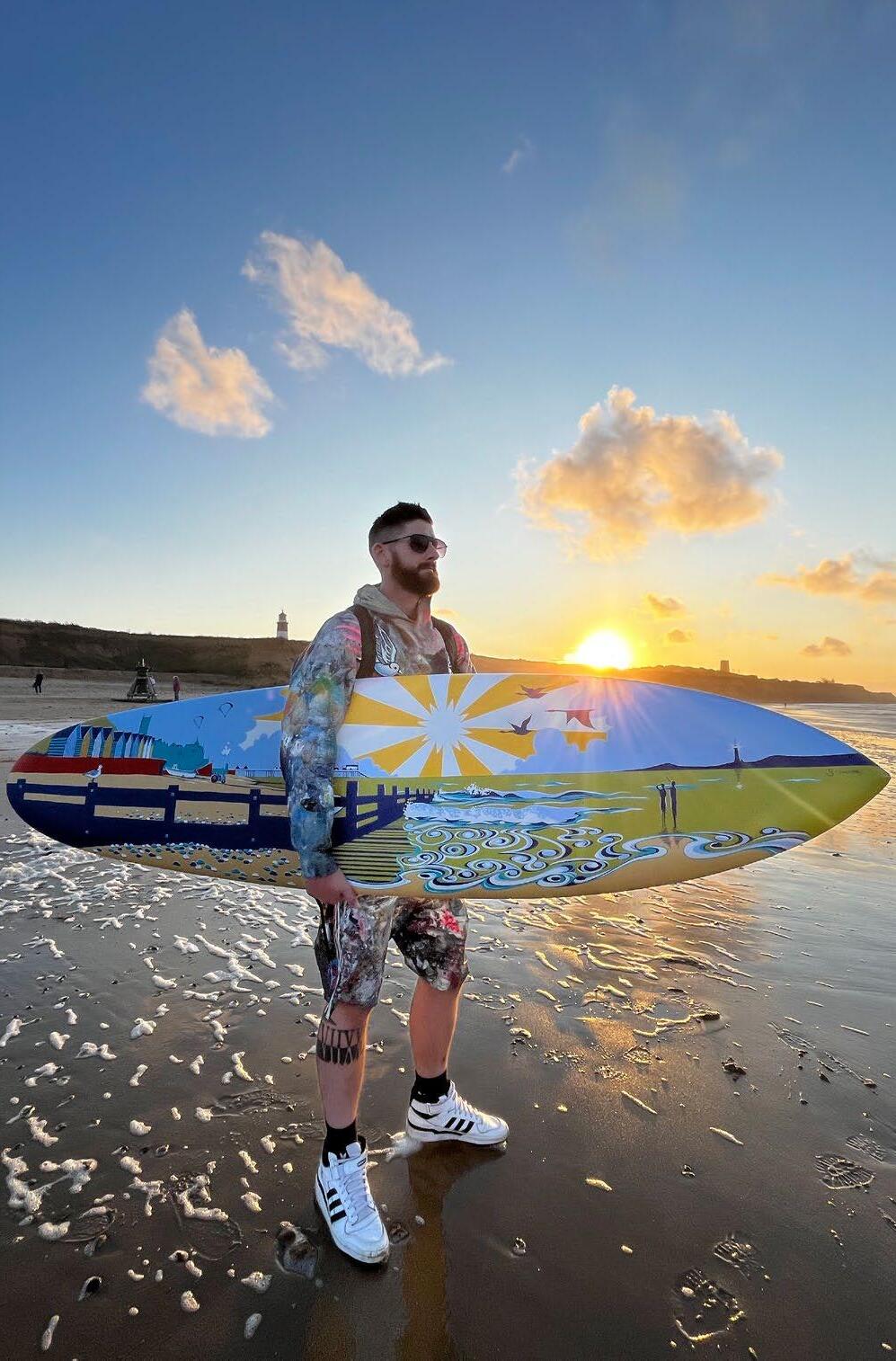
My signature style is a blend of pop art and geometric patterns fused together to create some very unique and optimistic landscape paintings of the countryside and the coast.
My paintings aim to recapture those rare moments in life when we pause and we say ‘oh wow that’s beautiful’. “ “
Do you intend for your artworks to be received in any particular way by the viewer?
I want people to stop and stare at my paintings and be transported to a slightly different time and place. My paintings aim to recapture those rare moments in life when we pause and we say ‘oh wow that’s beautiful.’ In doing so we can feel uplifted and our state of mind improves..
Who are your biggest artistic influences?
I do not have any specific artistic influences. Instead, as an artist and as a person I soak in and experience life itself, from many different aesthetic styles and moods, from movies, music videos, music, and aesthetic styles from past to present. What I try and create in my paintings is an atmosphere rather than just an aesthetic style.
What motivates you to create art?
I enjoy the process of creating artwork, it’s always an inviting challenge. Being in the studio, creating a new piece of artwork is when I’m at my happiest.


How has your style changed over time?
My signature style is a blend of pop art and geometric patterns fused together to create some very unique and optimistic landscape paintings of the countryside and the coast. I am renowned for this style. However I also work in other styles, including softer textural portrayals of the world to darker dreamscape atmospheric paintings.
What do you think of the Art Space gallery and having your artwork exhibited with us?
I think that Art Space is a very diverse and inviting art gallery. I always enjoy having my artwork shown in different countries, so the art can reach a wider audience of people, and therefore I am very proud that the Art Space gallery is showing my artwork.
If you could describe your art in 3 words, what would you say?
The three words that define my artwork would be… Optimistic, vibrant and mesmerising.


Do you have a favourite gallery or museum?
To be honest, I prefer to see artwork being made in a live environment. Therefore, I prefer to explore a place and explore the graffiti covered walls in industrial cities by living artists who are truly expressing themselves. The artwork in those environments for me feels alive and truly belonging of the moment. It is art that is being made by people who have something to express, it is also free from the pretentiousness that can sometimes be apparent in formal art galleries.
I pride myself on being a self-taught artist because it means that I am free to move in different directions in my artistic career. For example, I have used Surfboard’s to paint onto in the past as well as a real three-dimensional beach hut on the East Anglian coast of England.
You can see all of these exciting projects on my Facebook and Instagram page @samuelthomasart
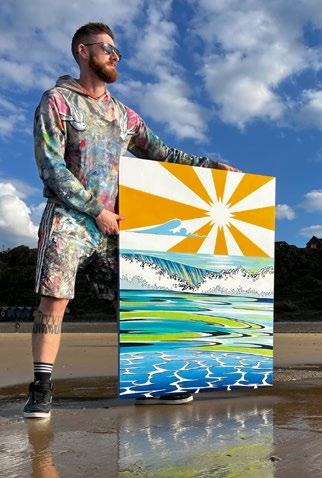
There is always room for deviation from the original plan, that’s what makes creativity so wild and free and expressive. “ “ the end
It would be incredibly difficult to discuss in detail the various periods, artistic styles, famous artists and their works in just one article.
The abundance of art styles throughout the ages have produced some of the most recognisable works that persist in today’s pop culture. Paintings such as the Mona Lisa, Michelangelo’s Sistine Chapel, The Birth of Venus by Botticelli or Jackson Pollock’s drip paintings have become so famous, that they are what most people consider a ‘masterpiece’. Aside from the fact that they are exceptional pieces of work and produced by exceptional people, they are in fact the best kind of ‘products’ to arise from each period. For example, when we think of the Renaissance period, we are immediately attracted to paintings that scream religious adoration, symbolism, nudity, fine sculpture work… Yet when we think of the expressionism period we might turn to artists like Van Gogh or Kandinsky. The cultural shift during this time frame throughout Europe, bled expressionism into other forms of artistic practices such as literature, music and theatre.
Artists from each point in history, have produced works that are not only exceptional in skill and artistic mastery, but are also products of their time. One piece that solidifies this notion is Andy Warhol’s Soup can by Campbell’s Soup!
As Andy Warhol states:
I used to have the same lunch every day, for twenty years, I guess, the same thing over and over again. “ “ Andy Warhol
One could argue that the monotony of this work is an extension of the American consumerist culture, but Warhol’s simplistic approach to his work and objects as “things”, makes us value them as what they are. Nothing to think too hard about, simply soup cans because he liked soup!
By
contrast, Abstract Expressionism during the 50’s all the way to the 70’s dealt with the self, emotional intensity and expressive spontaneity. Artists such as Mark Rothko have become renowned as masters of abstract painting, dealing with simplicity to achieve an emotional connection with the audience. As art throughout the ages has evolved into new styles and mediums, the technology to create different kinds of art has also advanced. It is interesting to think about the fact that after all these years of various artistic interpretation, we now live in a day and age where we have the means to make or re-create any kind of artistic style we want. The discussion about art trends over the years is of course interesting, but where does that leave us now? This same question can be applied to the practice of photography, for example, what can we create that is truly original if we have already explored every inch of our practice, if there have already been photographers, painters or sculptors who have put into motion the very ideas that you are interested in? Therefore, this article is less about each individual
art trend and more about asking yourself, where have these trends lead too? What we do as artists or creative individuals matters in society or to yourself…
A relatively recent art trend that happened a little while ago, and I say ‘art trend’ loosely as it describes an interesting shift to how we, as a society might view art. Previously, I mentioned the word ‘products’ when referring to important works being a product of their time, and one interesting product of our time must be the drastic rise and equally drastic fall of the NFT culture. I won’t be going into much detail regarding the nuances of this art trend but what is most interesting is how this became so popular. The NFT culture was centred around the notion of exclusivity, obtaining a piece of digital art that no one else possessed for an extraordinary amount of money. The point of this was to have something that no one else had, it was less about the art itself and what it meant to the individual and more of a status symbol. And rather than an artist exploring something deep or meaningful, the purpose of
making the art changed. In my opinion, it is an artist’s purpose that made art trends of the past so great! Of course, the digital landscape has changed our accessibility to create works of art drastically and in many ways. However, if we are to build on current art trends or to improve ourselves as artists, we must focus on perfecting the craft. We must create works of art that have the potential to live in a physical space as well as digital one, to experiment with different mediums and to produce work that is not an empty shell.
In my not so humble opinion, it is truly impossible to be original in today’s day and age, but it is truly possible to find and explore subject matter that you deem worthy of discussion and to create something extraordinary from this. When I look back at the various art trends over the years, I don’t think in terms of originality. I don’t look at a Picasso and think to myself, ‘his work is original’, I simply admire his perseverance as an artist, and his drive for creating something that he felt was necessary to him.
By Francesco Scalici

In the vast and intricate world of art, collectors navigate an engaging landscape where passion meets profit.
For some, art is a deeply personal journey, an emotional connection that manifests through the acquisition of pieces that resonate on an individual level. For others, it is a strategic financial endeavour, a way to diversify and enhance an investment portfolio. This blend of heartfelt enthusiasm and shrewd investment creates a unique paradise for collectors, where beauty and value coexist in harmony.
For many art enthusiasts, collecting begins with a personal connection. Art has the power to evoke emotions, trigger memories, and express deeply held beliefs. When a viewer encounters a piece that speaks to them on a profound level, the impulse to acquire it can be overwhelming. This emotional bond transforms the artwork into a treasured possession, a part of the collector’s life story.
Imagine a collector who stumbles upon a serene landscape painting that vividly reminds them of their childhood vacations. Each time they look at the painting, they are transported back to those idyllic days, making the artwork an anchor to cherished memories. Similarly, another collector might be drawn to contemporary pieces that challenge social norms or reflect their personal ideals, using their collection to make a statement about their worldview.
For these individuals, the value of art is not just in its aesthetic appeal but in the personal significance it holds. The emotional connection to a piece can be a powerful motivator, driving the desire to acquire and preserve it as part of their private sanctuary.
On the other side of the spectrum, art can be a lucrative investment. This perspective treats artworks as financial assets, akin to stocks or real estate, with the potential for substantial appreciation over time. Art investors approach the market with a strategic mindset, analysing trends, artist reputations, and historical sales data to make informed purchasing decisions.
Investing in art requires a thorough understanding of the market’s complexities. Factors such as the artist’s prominence, the rarity of the work, its condition, and provenance all influence its value. Successful investors keep a keen eye on the art world, attending auctions, consulting with experts, and following industry publications to stay abreast of emerging trends and potential opportunities.
For instance, an investor might purchase a piece by a rising contemporary artist, anticipating that the artist’s work will increase in value as their career progresses. Similarly, acquiring works by well-established artists during market downturns can yield significant returns when the market recovers. This strategic approach requires patience, expertise, and often a willingness to take calculated risks.
Many collectors find themselves blending these two approaches, creating collections that are both personally meaningful and financially sound. This hybrid mindset allows them to indulge their love for art while also making prudent investment choices.
A collector might initially buy pieces that resonate with them on a personal level, only to discover later that these works have appreciated in value. Conversely, an investor might begin by seeking financially promising artworks and develop a deep appreciation for certain pieces along the way. This fusion of passion and profit enriches the collecting experience, making it both emotionally and financially rewarding.
For example, a collector who loves abstract art might focus on acquiring works from emerging artists they believe have significant potential. Over time, as these artists gain recognition, the collector’s investment pays off financially while also providing the joy of supporting and witnessing the growth of the artists they admire.
Collectors play a vital role in the art ecosystem. They are not just buyers; they are custodians of culture, preserving and promoting the works they acquire. Through their collections, they support artists and contribute to the broader art community, ensuring that creativity continues to thrive.
A dedicated collector often becomes a patron of the arts, attending exhibitions, building relationships with artists, and even funding new projects. Their passion for art can inspire others, fostering a greater appreciation for artistic endeavours within their communities.
Moreover, collectors contribute to the historical narrative of art. Their choices and tastes help shape
the market and influence trends, guiding which artists and styles gain prominence. By curating and preserving significant works, they ensure that future generations can experience and learn from these artistic achievements.
Art as an investment and as a personal passion offers a rich, multifaceted experience for collectors. Whether driven by emotional connections or financial aspirations, collectors find themselves in a paradise where beauty and value intersect. The act of collecting art becomes a journey of discovery, self-expression, and strategic thinking.
For those who approach art with a personal connection, each piece acquired is a testament to their unique
story and sensibilities. For those who see art as an investment, the market offers opportunities to achieve substantial financial gains while supporting the cultural landscape.
Ultimately, the world of art collecting thrives on this delicate balance between passion and profit. It is a realm where personal fulfilment and financial success can coexist, creating a collector’s paradise that celebrates both the heart and the mind.
By Amber Williams
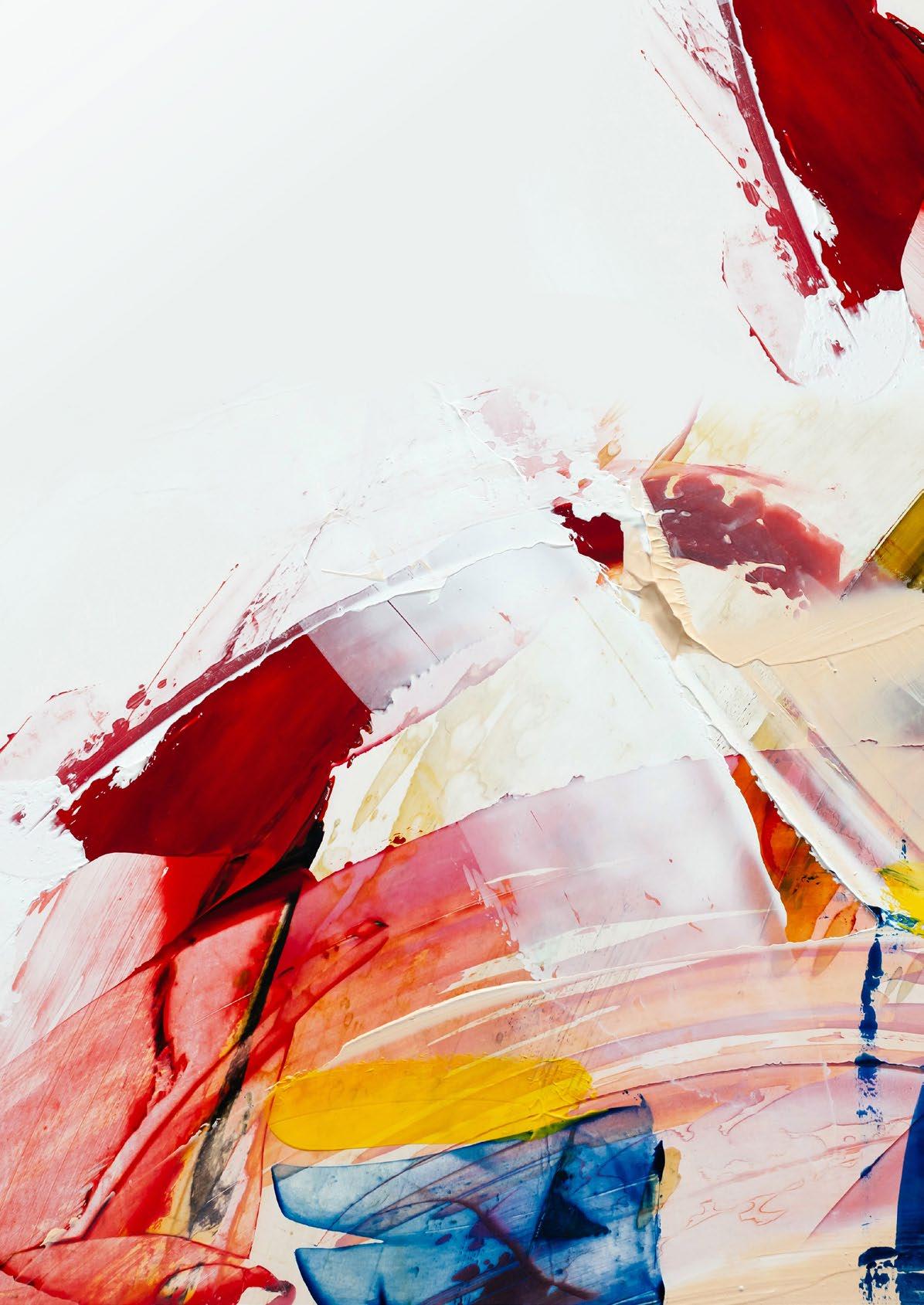
For many art enthusiasts, collecting begins with a personal connection. Art has the power to evoke emotions, trigger memories, and express deeply held beliefs. “ “
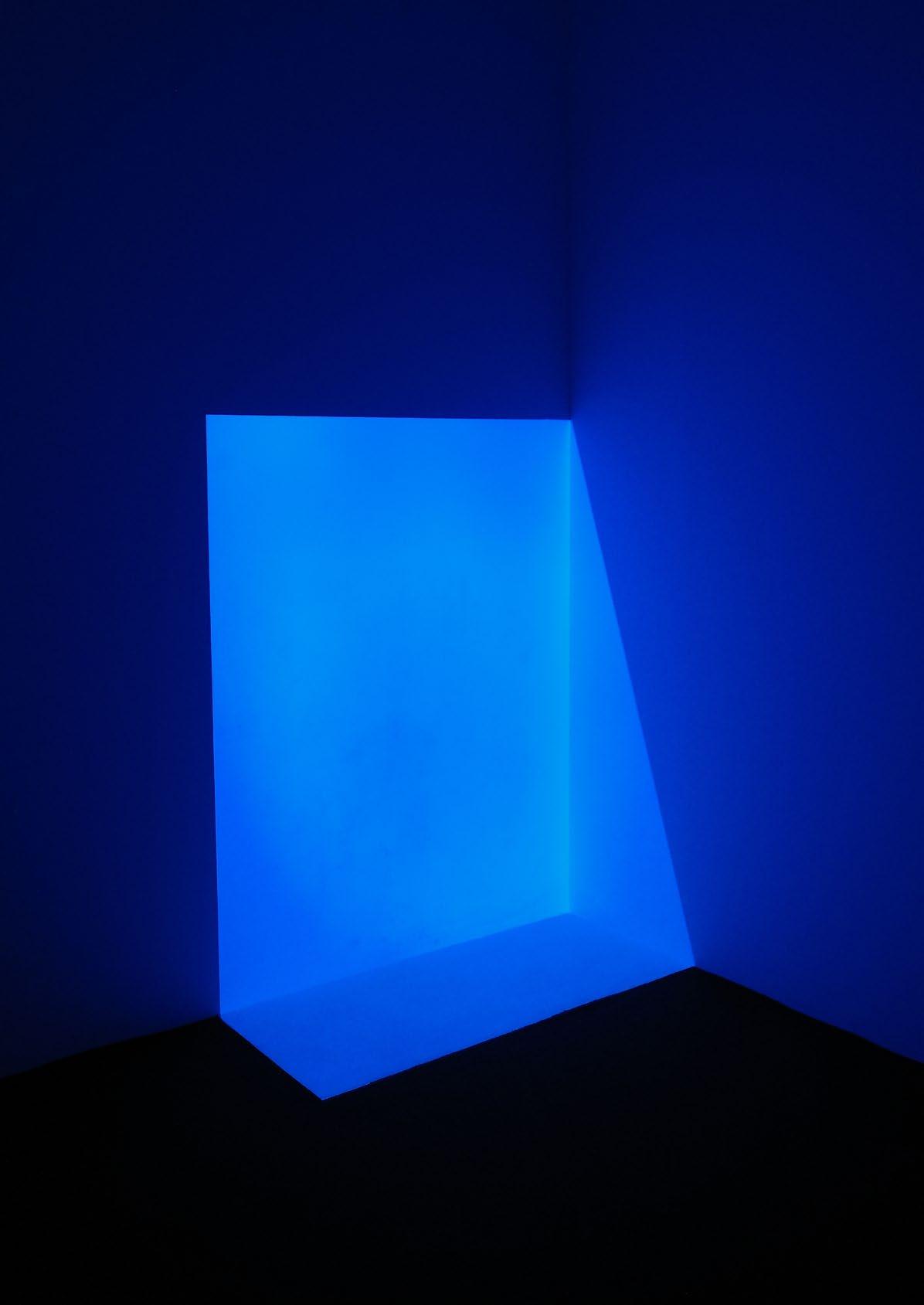
My desire is to bring astronomical events and objects, down into your personal lived in space. “ “
Multisensory art can be simply condensed to one word: ‘video’, or at least this is the most common way of experiencing art that goes beyond a physical painting. Multisensory art is of course a very broad subject in the way that a piece can be made or interpreted. Yet, artworks that focus on video or have an element of film seem to be the most accessible way of understanding that this piece which you are observing is multisensory.
Video has allowed us ‘the viewer’ to have a completely different experience to that of observing a painting on a wall for example. Artworks are not necessarily limited to video by any means, the word multisensory relates to having an experience by using the various senses that we as human beings have. Many artworks may strive for the viewer to engage more than one of his or her senses, a performance piece for example can be a far more direct way of communicating or engaging with an audience and invoking some kind of reaction or feeling. The point is, that the process of how pieces that are multisensory are displayed and curated are just as important as how the audience interacts with them. Video is simply one of the most common and potentially effective ways of engaging with an audience outside of the world of paint and canvas.
What makes multisensory art so great however, is also the very thing that may hinder it from long-term recognition: ‘The absence of a real connection’. Of course, a piece of work does not necessarily have to be in physical form for it to have an impact on society or an individual. But many multisensory works of art in today’s day and age, seem to have drifted from attempting to create a connection with the viewer to simply supplying the viewer with temporary fulfilment. The same concept can be applied to how we interact with social media apps such as Instagram and TikTok. This temporary engagement with the viewer fills the need for only a few short moments,
enough to spark interest but not long enough to create a lasting impression. Multisensory art is therefore a challenging medium for artists, as it is partially their responsibility for creating work which not only has the potential to grab attention but to effectively communicate a real message through sight, smell or sound.
The artist James Turrell is a clear example of how successful multisensory art can be and how colour is used in its most simplistic form to create spaces of peace, meditation and retrospection. James Turrell’s use of what is known as ‘light space movement ’ or ‘painting with light ’ aims to demonstrate spaces of intimacy by immersing the viewer in a complete colour or contrasting colours. Achieving a sort of spectral atmosphere by forcing the viewer to stop completely or walk through a space. In many ways, his work can be hypnotic, observing a room that is masterfully lit with a colour, or a shape which draws you in. As Turrell puts it during his interview with the Los Angeles County Museum of art: “My desire is to bring astronomical events and objects, down into your personal lived in space”. This quote was of course in reference to his ongoing project ‘Roden Crater’, an exploration of light, time and the use of natural landscape. Returning to my previous paragraph about the notion of responsibility with regards to multisensory art, here we see Turrell take this idea on by involving a natural space within his artwork. Turrell’s fascination with the architectural space of Roden Crater and his interest in other man-made structures, such as the great pyramids and Machu Picchu have cemented the idea that there is something other worldly about them. That these structures have an atmosphere or energy which Turrell is attempting to incorporate within his own work.
In many ways the work of James Turrell echoes the words of Multisensory artist Kate Dunn who in a recent interview voiced the challenges
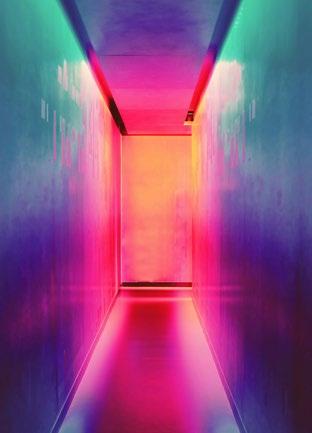
of how artists are dealing with the everchanging digital landscape:
I noticed that within my own work, I originally wanted to make pieces that were loud and kind of shouted for attention. Now I find myself moving in a somewhat different direction. I think in some ways that is a response of me trying not to make work that exists for the screen.
Kate Dunn
The idea that work is created for the screen is a trap that many artists and photographers alike have shared. That a piece should be created to exist in a space that is not real or tangible, reinforces the notion that multisensory art can easily veer off and lose it’s connection with the audience if not executed properly or created with the right intentions. A multisensory piece of work does not necessarily have to be the loudest or the biggest or the most extreme, it can be the opposite. An artwork that extends past the canvas must have the ability to communicate with it’s audience and potentially resonate with the viewer past the digital. It is truly fantastic to see that art has come a very long way from the traditional painting, sculpting and drawing to new mediums and processes of exploring what art can be. But within this process, we cannot lose the ability to create work that is meant for us and not for the online space. If you have ever been to see the Mona Lisa, the feeling of being underwhelmed as to why she is so famous is due to the fact her spirit no longer lives in the Louvre, but rather your iphone.
By Francesco Scalici
VanCate is a German contemporary artist based near Frankfurt. She was born in 1992 and studied communication design in the European School of Design in Frankfurt.
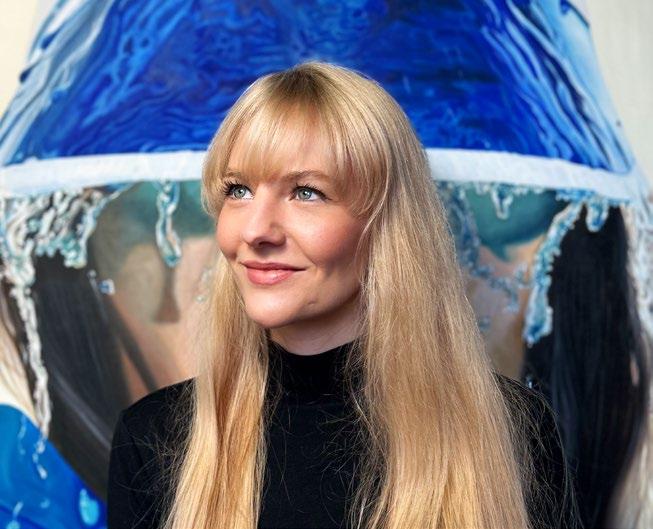
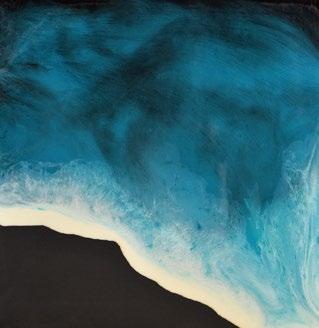
Scan here to find out more about

Her art consists of various art styles using different techniques, media, materials and stylistic elements. For quite some time now she has specialised in realism using oil paints on canvas. Often her paintings will include an element of reflection or fluid. She describes painting and the creation of art as an escape from reality and an immersion into a different world. Which explains why a lot of her artwork is inspired by her dreams.

Every artwork is like a lucid dream that can be influenced by myself. But just like dreams, in the course of time they develop a life of their own and that’s what I love about it. “ “
From painting, to dance to music to literature… Art in the community has always had an important role to play. Providing its audience with an understanding or gateway to interpret the various social, political or personal issues of the time.
One of the most common forms of art in our society is Graffiti, it may seem overlooked at many times due to the numerous slurs or imagery sprayed on to a wall. Yet, what makes graffiti so popular is more about the fact that it represents a ‘rebellious’ act. The accessibility to the materials used are also widespread, making graffiti probably the most popular form of street art and engagement with the community.
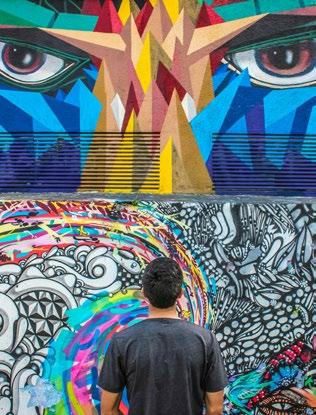
Banksy is a clear-cut example of how street art can propose some incredible social and political critiques, from his recent street paintings commenting on the current war in Ukraine to some of his most famous works such as ‘Napalm’. His engagement with the community can be stated as a global type of engagement, rather than local but crude and unapologetic in style and character.

We can also view art and its importance on the community by highlighting the locations that house some of the most important works of our past. Museums play a key role in not only bringing people together to admire and observe their favourite art works but act as beacons within each city. The idea that you must travel to Italy or France or Spain to experience a piece of work by Picasso, Modigliani, Rembrandt and


more is an essential part of the viewing experience. This, in turn makes the artwork and the museums that keep them important cultural responsibility within the society. Museums have a key role in demonstrating and providing the history of our artistic past, whereas biennales for example focus on the more current artworks and upcoming artists. Biennales are a fantastic way of immersing oneself in an abundance of different art styles! Various other forms of exhibitions such as pop-up’s, theatre shows, photography expos and installations provide various ways for a community to keep engaged with current events or a specific artist.
Looking back to 2019 and 2020 during the height of the COVID pandemic, the restrictions that we all experienced did leave us with a lasting impression on how the arts community during this period suffered. There was a general shift to things being digital for a time, with many museums opting to switch to virtual tours or 3D experiences of the art works that many

people come to see. Yet, this drastic change did impact the sector even after restrictions were lifted and things gradually went back to something that we consider the ‘new normal’. It’s easy to assume that covid forced the creative industry to change and consequently the attention from those who experience art also shifted, but that experience of viewing something from a screen and not in person does not give one a sense of true satisfaction. We go on holiday because we want to experience a place, somewhere that we have always wanted to go… Museums, exhibitions, biennales and more are the cornerstones of cultural exposure within a city, places that allow us to experience things in their true from.
A small but interesting read published on the Tate website also discusses art and the community. It mentions the notion of ‘Cultural Democracy’ an idea that was adopted to serve as an artistic expression by individuals and communities rather than by institutions of central power. As

it states: “Cultural Democracy seeks to democratise culture in order to bring about an awareness and appreciation of art to as wide a section of society as possible; and to break down the boundaries between high and low culture in order to make art accessible to a wider audience”.
This breaking down of a barrier so to speak, is why art in the wider community is so vital. Aiming to have art as an accessible form of expression or therapy for all ages. Returning to what I previously mentioned about museums and the importance of visiting artworks. I would stipulate that as artists who are part of a community it is our responsibility to not only produce great work but to also take part in social events, keep up to date with museums and future openings, visit the places that these museums are in as the cities themselves are cultural hubs… The benefits of art in the community are benefits to the individual and can be a most valuable tool.
By Francesco Scalici
Cultural Democracy seeks to democratise culture in order to bring about an awareness and appreciation of art to as wide a section of society as possible; and to break down the boundaries between high and low culture in order to make art accessible to a wider audience. “ “
Picasso is widely regarded as one of the most famous artists of all time. The phrase ‘it’s a Picasso’ is commonly used to describe something worthy of mastery. And while Picasso is of course known for being a master of cubism and expressive artwork, none in my opinion are more experimental as his light paintings. Picasso’s light paintings or rather photographs are a series of images depicting the artist drawing with light. When Photographer Gjon Mili visited Picasso, their conversations regarding various photographs sparked the idea to create Picasso’s light paintings. Various images depicting Picasso moving around a space, creating simple illustrations of a vase, horse or man while the camera’s shutter recorded a long exposure of each moment. Picasso’s movements over a period of 15 seconds or so, created paintings captured in time. The artwork made momentarily and then erased as Picasso finished his work, with the photograph being the only physical evidence of each light painting. It begs the question as to what we consider the real artwork to be, the outcome of Picasso’s movements or the photographs left behind?
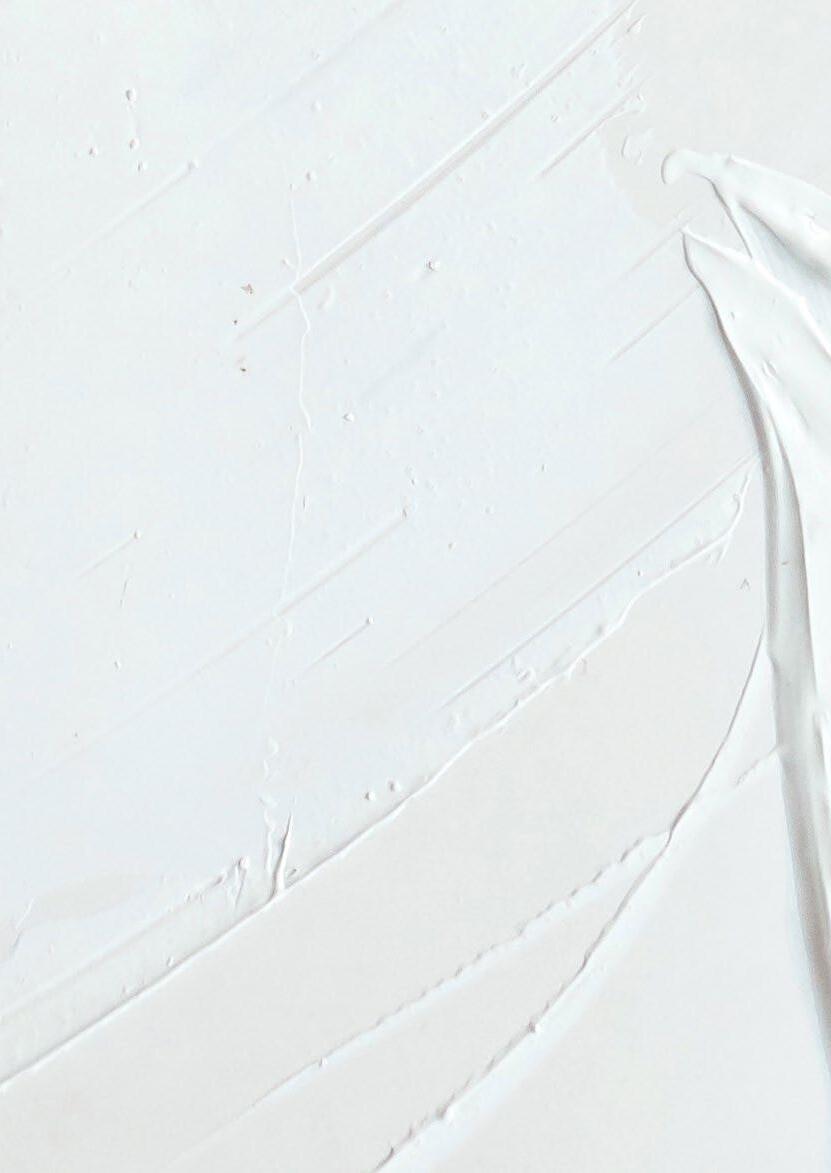
Picasso’s light paintings
Or rather photographs.
An interesting sculpture by the artist Damien Hirst, ‘For the Love of God’ boasts an impressive 8,601 diamonds with its centrepiece, a pear-shaped pink diamond on the forehead of the diamond encrusted skull. What is interesting about this skull is the fact that it is a real skull and not a model, believed to be the skull of a 35-year-old person who lived between 1720 and 1810. The skull had a cost of £12 million and was subject to sell for £50 million, however Hirst himself confirmed in 2022 that he is coowner of the skull alongside an undisclosed partner.
I think it’s safe to assume that artists have always had an interesting way of viewing the world and interpreting either their own personal thoughts, experiences and or feelings into a painting or sculpture and so on… Many artists throughout history (some more recognisable than others) have gained notoriety in part, due to some extreme event or situation. One artist that immediately comes to mind is Vincent Van Gogh, the common theme is that people seem to recognise the artist for having chopped off his ear rather than be able to name one of his paintings. Another more recent event would be Banksy’s ‘Girl with Balloon’ painting which was publicly shredded within its own encasing and then later renamed and sold for a whopping £25.3 million! The world of art and of artists is full of interesting details and eccentric characters and the following facts will highlight just how unique some people and their work really are.
By Francesco Scalici

Also known as the ‘Prado Mona Lisa’. This painting depicting Lisa Gherardini, (the same subject painted by Da Vinci) can be seen at the Prado Museum in Madrid. It is speculated that one of Da Vinci’s students or the assistant Francesco Melzi who was Da Vinci’s second throughout most of his career, painted a second Mona Lisa. The Prado Mona Lisa has been in their collection since 1819 but did not rise to notoriety until its restoration in 2012, eventually cementing itself as one of the most important studio copies of the time as it is believed this painting was constructed simultaneously to Leonardo’s masterpiece. Indeed, the Mona Lisa is such a renowned and popular artwork to date, that the original piece housed in the Louvre in Paris even has its own mailbox. Mona Lisa receives her highly-esteemed daily love letters from admirers all over the world to this mailbox!
The other Mona Lisa
Also known as the ‘Prado Mona Lisa’.
A small ceramic, three-quarter by one-half inch wafer containing the artwork of six artists from the late 1960’s was sent into space as part of the moon landing of the Apollo 12. One of these artists is none other than Andy Warhol himself, who decided to etch on this small tile a drawing of a penis. Other noted artists such as Robert Rauschenberg and John Chamberlain who contributed to this historic event, both decided to create simple artworks that can be easily deduced. In Rauschenberg’s case, he simply added a small straight line that can be located right next to Warhol’s etching of a penis. And in Chamberlain’s case, a geometric pattern which aimed to resemble a circuit board.
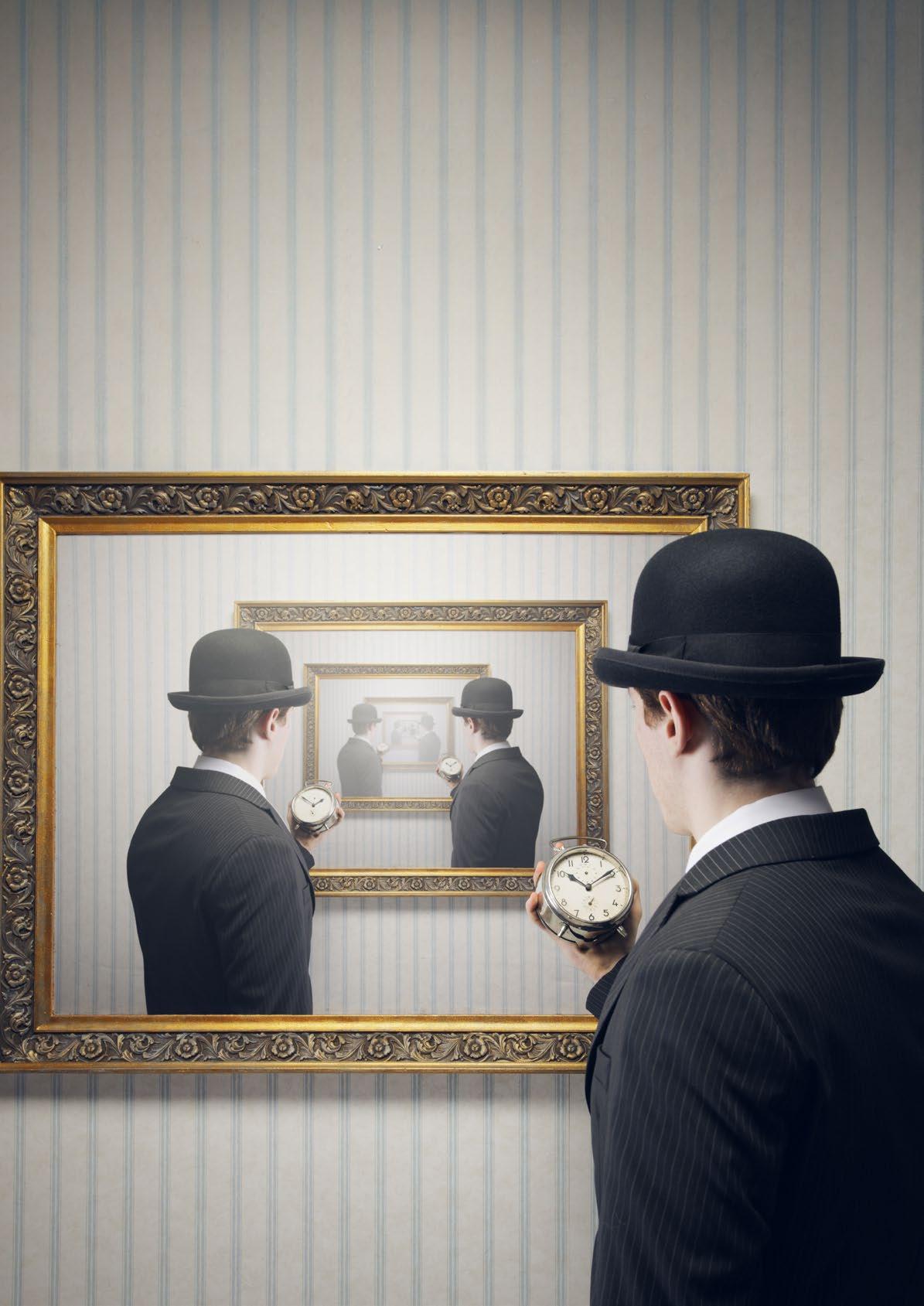
Artists are creatives, but can you merge creativity with business? While many people may be quick to dismiss the links between the arts and business, there is much that the former can teach the latter about creativity.
By the very nature of the process of creativity, artists are innovators who push boundaries and breathe life into ideas that are abstractions of their minds. This creative journey is not unlike the entrepreneurial process in business, where ideas are conceived, tested, and brought to market.
Business is creative. It’s like painting. You start with a blank canvas. You can paint anything –anything – and there, right there, is your first problem. For every good painting you might turn out, there are a zillion bad paintings just aching to drip off your brush. You pick a colour. The next colour you choose has to work with the first colour. The third colour has to work with the first and the second…
The arts and business are not separate worlds, but areas that can interact and enhance each other. The arts can provide companies with creative resources, techniques and methods of innovation, while companies can provide artists with financial resources, support and opportunities for expression and promotion.
Companies like Google and Apple have long recognised the importance of integrating creativity into their business models. Google understands the need to boost creativity in the workplace through the essential role of art, with their offices often featuring open spaces, art installations, and opportunities for creative expression, fostering an environment where innovation and creative thinking thrive. Since the pandemic, there has been an accelerated trend towards virtual and digital art events, which has forced galleries to rethink traditional models of exhibiting and selling art and while
this approach can expand a gallery’s reach beyond local patrons to a global audience, it also requires significant adaptation and investment in digital infrastructure.
The perception of artists is evolving from one of romantic struggle and the ‘starving artist in an attic’ stereotype to that of professional entrepreneurs. This change reflects a broader understanding and appreciation of the arts as a viable and valuable profession. Nowadays, artists are diversifying their income by offering workshops, creating digital content, licensing their work, and collaborating with brands. This diversification provides financial stability and reduces the reliance on any single source of income.
Artists can balance their creative processes with sound business practices, to build sustainable and thriving careers by effectively marketing themselves rather than relying on a gallery or agent. This shift to social media marketing offers artists greater control, broader reach, cost savings, and the ability to engage directly with their audience, making it a compelling alternative to traditional gallery representation.
This leads to the question, "Is there still space for art galleries in today’s digital age?" Despite the rise of social media and direct-to-consumer sales, galleries can continue to offer unique benefits and services that can complement online platforms. Being exhibited in a reputable gallery can give an artist validation, credibility and prestige, while gallery representation can help establish and increase an artist’s market value by connecting their work with established collectors and institutions. Going to a gallery provides the viewer with a tactile and immersive experience where the scale, texture, and presence of artworks are best appreciated in a physical space. Events such as the launch of local artist’s work can give a sense of community and
provide opportunities for artists to engage directly with their audience. The art market is competitive, with many established galleries vying for attention. Standing out can be challenging, especially in major art hubs. Starting an art gallery today needs a strong vision that embraces traditional and digital strategies. Choosing the right location is key, somewhere in a culturally vibrant area with enough footfall to drive people into the gallery is crucial. Today’s art buyers are more diverse and informed than ever before. They are not only collectors and connoisseurs but also young professionals and casual enthusiasts looking to invest in art that speaks to their aesthetic or aligns with social causes. This shift demands that galleries offer a varied selection of works, including contemporary, experimental, and socially relevant pieces, to attract a broader audience. New gallery owners can navigate the challenges in building a dynamic space by embracing diverse art forms, utilising digital tools and fostering a strong community presence.
By Jo Ward
The fusion of art and business is not only possible but can be incredibly successful. By learning from the creativity, risk-taking, and unique perspectives of artists, businesses can innovate and differentiate themselves in increasingly competitive markets. In this merging of creativity and commerce, both worlds can thrive, each enriching the other in profound and unexpected ways. The art of business could be said to be a ‘masterpiece in the making'.
Richard Branson
The expressive colours of
Ukrainian artist Nana
specialises in bold, fauvist depictions of women on large scale canvases.

Recognised by her signature NANAart style, the artist exhibits her work with Art Space alongside other female driven artworks which combine a contemporary depiction of women with the grandeur of large oil paintings observed for centuries. Consciously crafting a juxtaposition between former idealised notions of beauty and women of the twenty-first century, Nana too showcases her artistic interpretation of idealised women on a grand scale in a majestic and iconic depiction which lends itself to traditional tendencies.
I believe that the culture we create is necessary for humanity, and I believe that the world cannot exist without aesthetics, as art brings goodness into people’s hearts. “ “
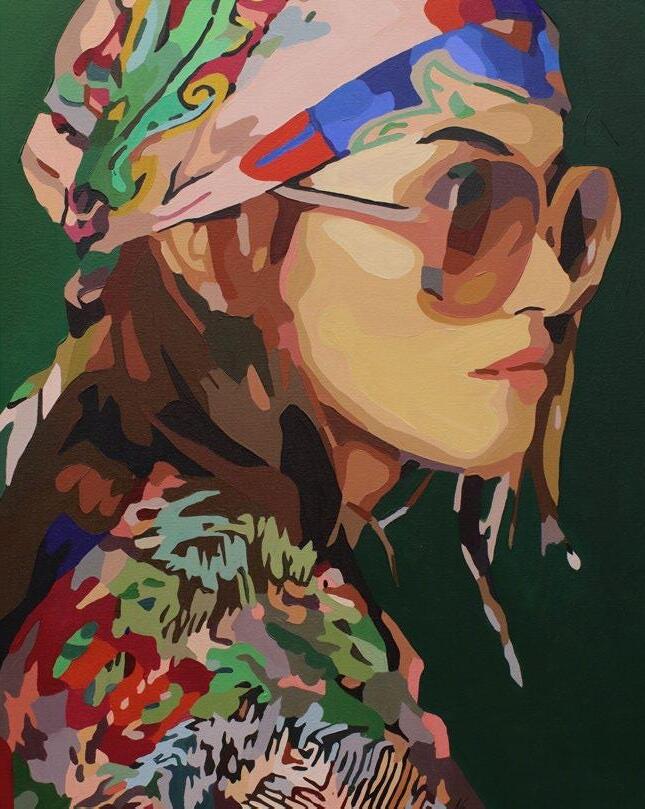
Nana Artamonova
ORIGINAL
110 X 110 cm
Set against a stark bottle green backdrop, Flower Girl alludes to the flower power of the 1960s and 1970s. In a nostalgic reference to the pacifist beliefs of the time period, the female figure in Nana’s painting wears the typical patterned headdress and rounded glasses which connotes the fashion of the time. Draped in vivid colour tones and leaning towards a fauvist style of painting, the artist’s cartoon-like female figure gazes into the distance and lends herself to observation by immediately capturing the viewer’s attention.
MERMAID
Nana Artamonova
ORIGINAL
110 X 110 cm
Bold, dramatic and fearless, Nana Artamonova’s Mermaid depicts a young and beautiful woman whose gaze is instantly held by the beholder. Splintered with splashes of paint, Nana skilfully camouflages the vibrantly coloured streaks with the figure’s hair. As suggested by its title, one can only speculate that the figure has been submerged in water, evident in her thin wet strands of hair draped across her face. Indeed, Nana’s Pop Art influence is certainly prevalent in this particular artwork, not only in the use of large areas of uninterrupted colour, but in the artist’s brush strokes which mimic those of Jackson Pollock just preceding the Pop Art movement.
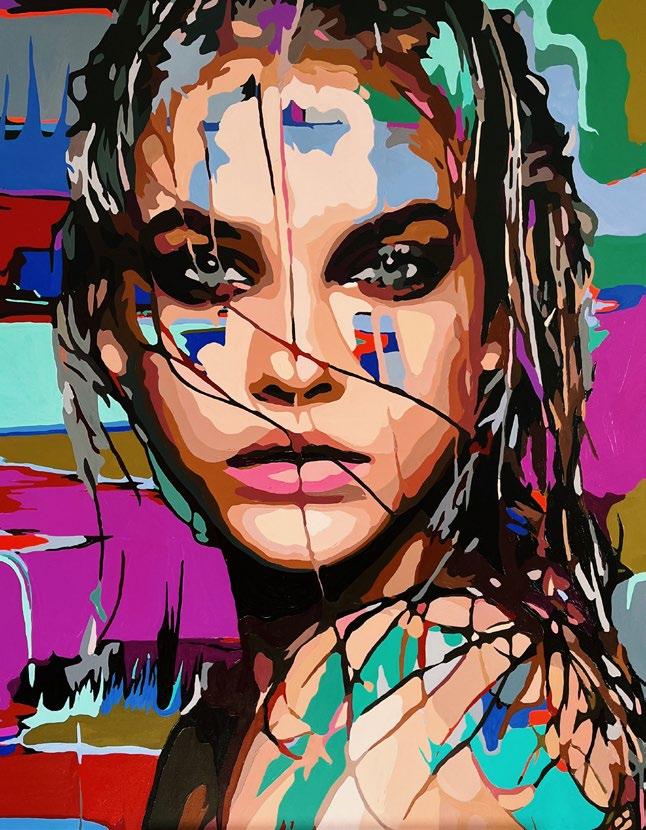

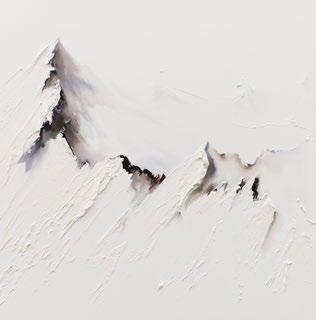


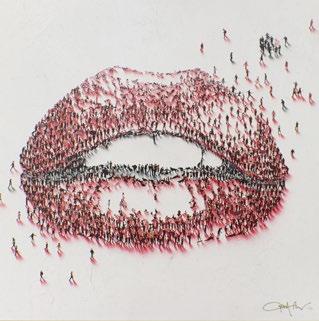


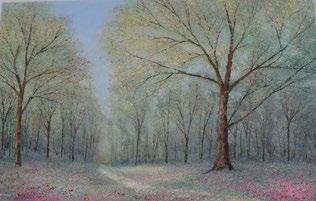
Gibraltar is a unique holiday destination offering great history, rich culture, stunning landscapes, and diverse attractions. Visitors can explore the iconic Rock, enjoy duty-free shopping, and experience vibrant marinas. Its blend of British and Mediterranean cultures makes Gibraltar an appealing and memorable getaway.
